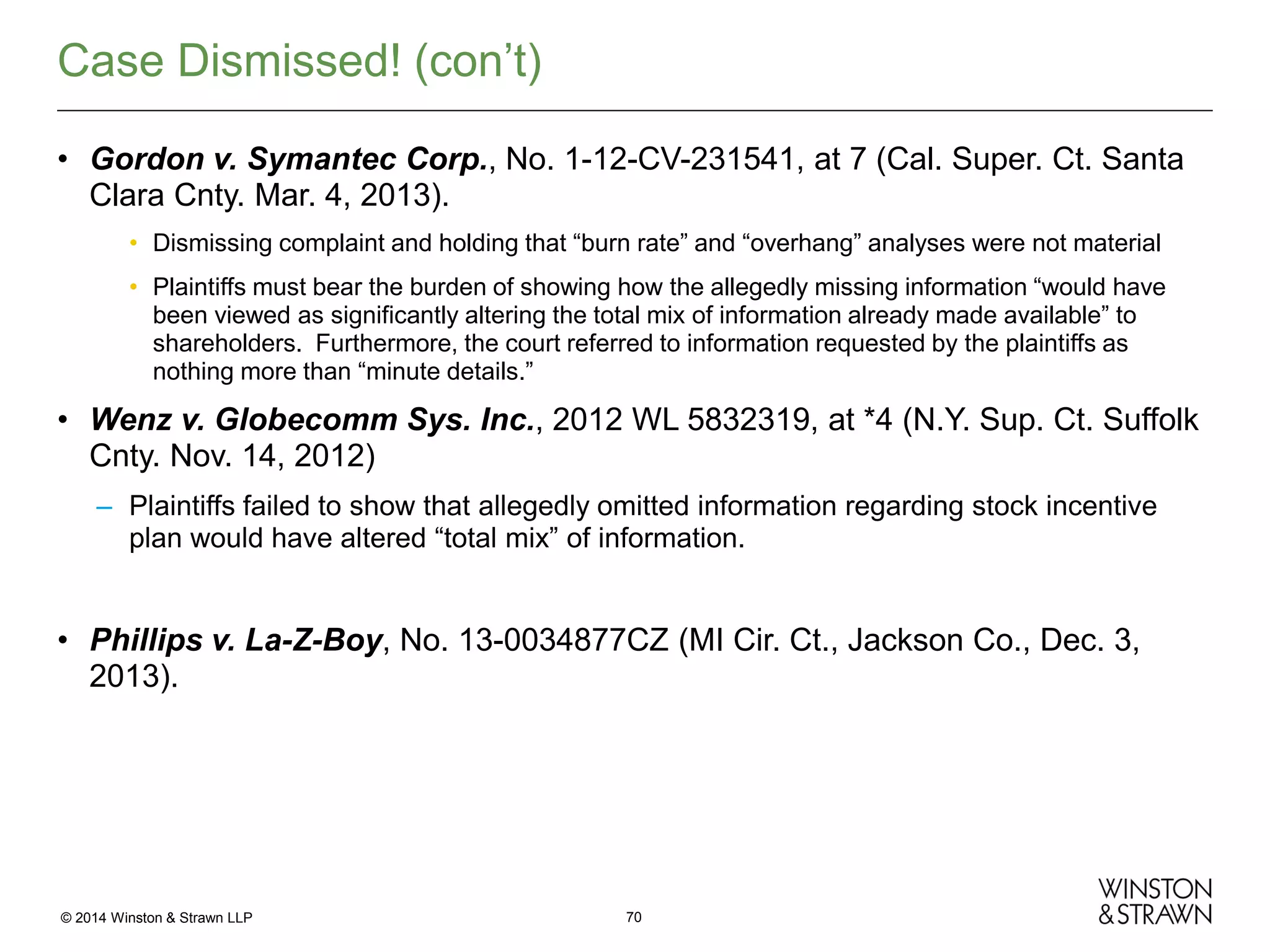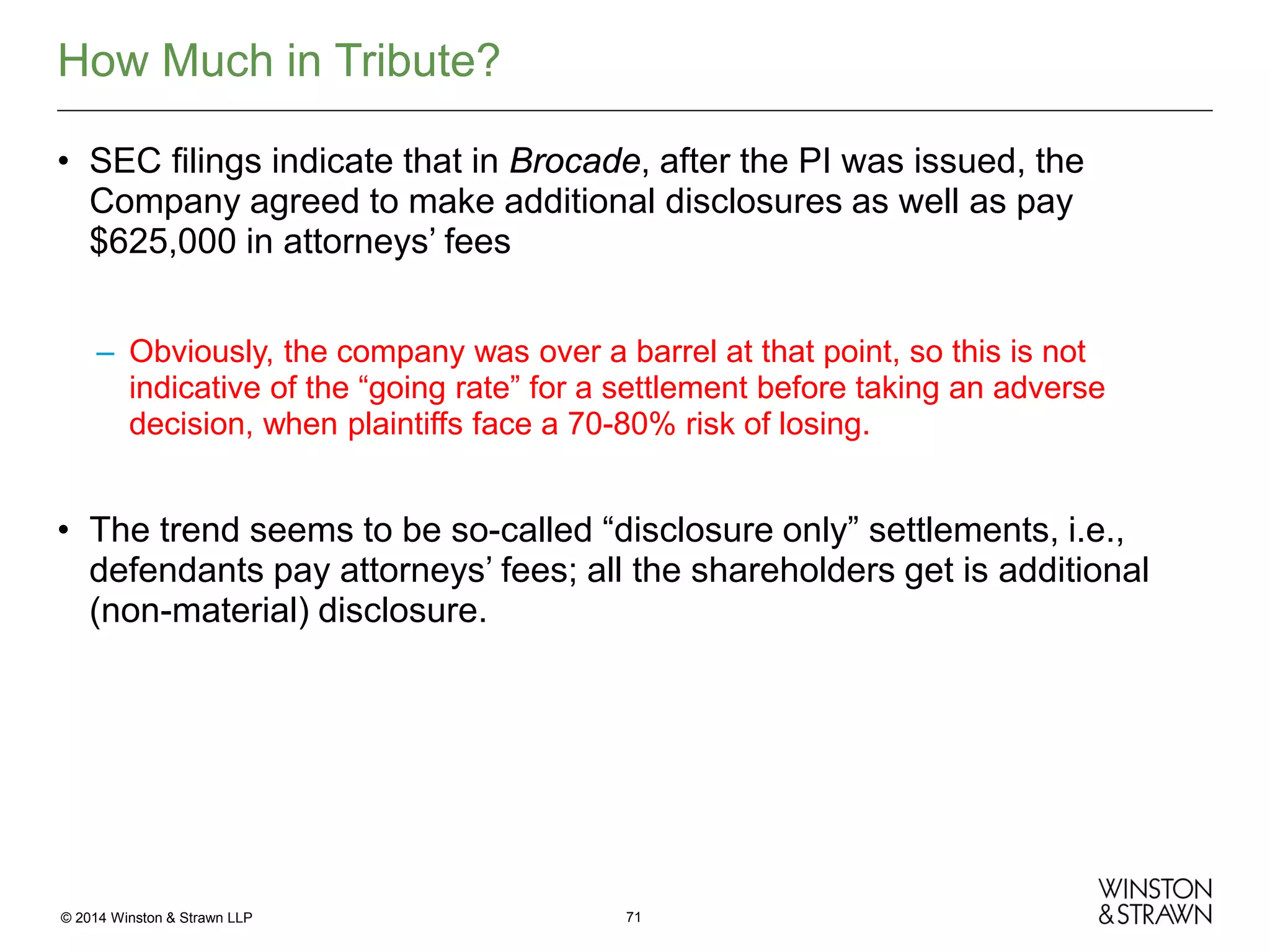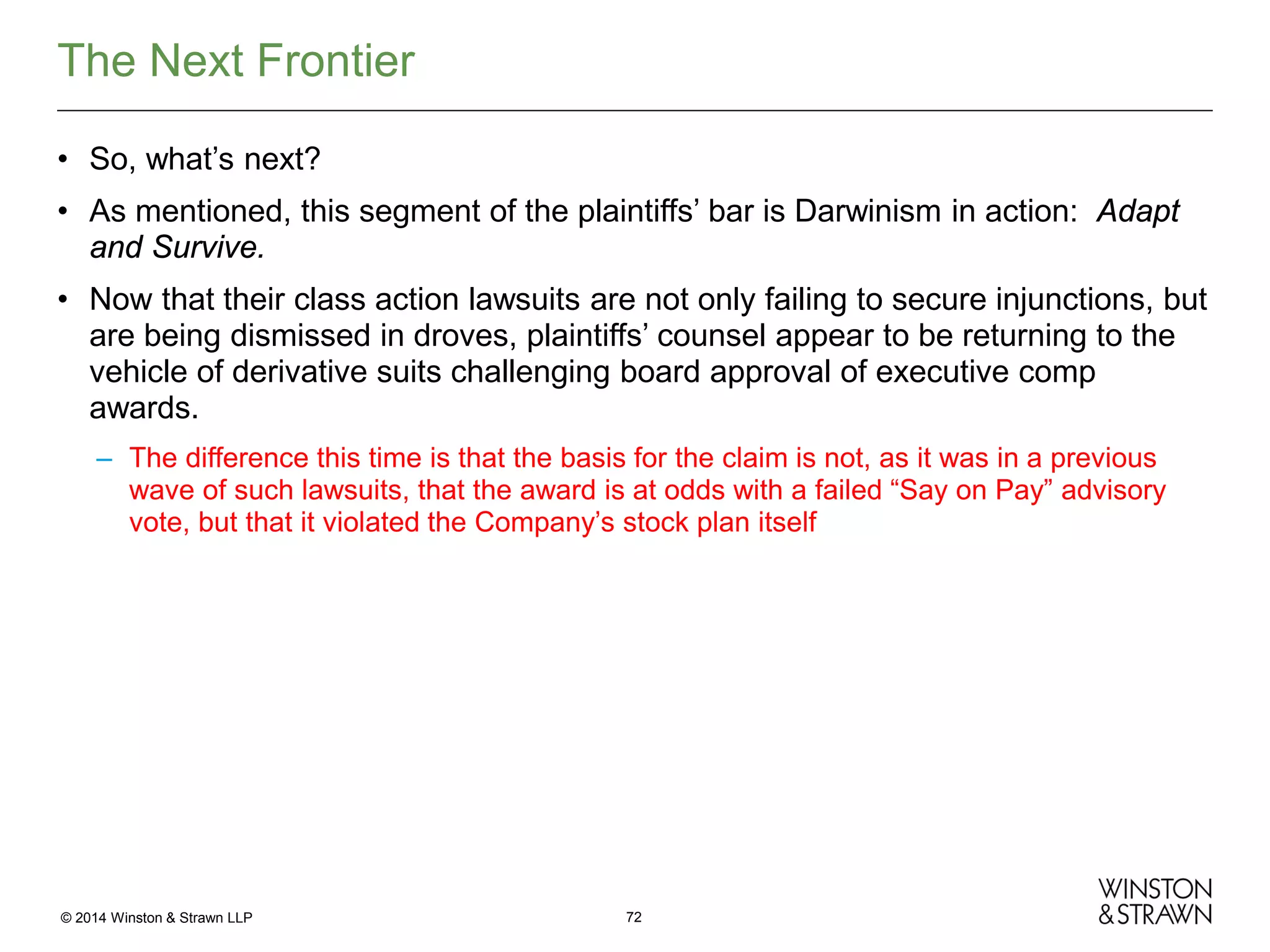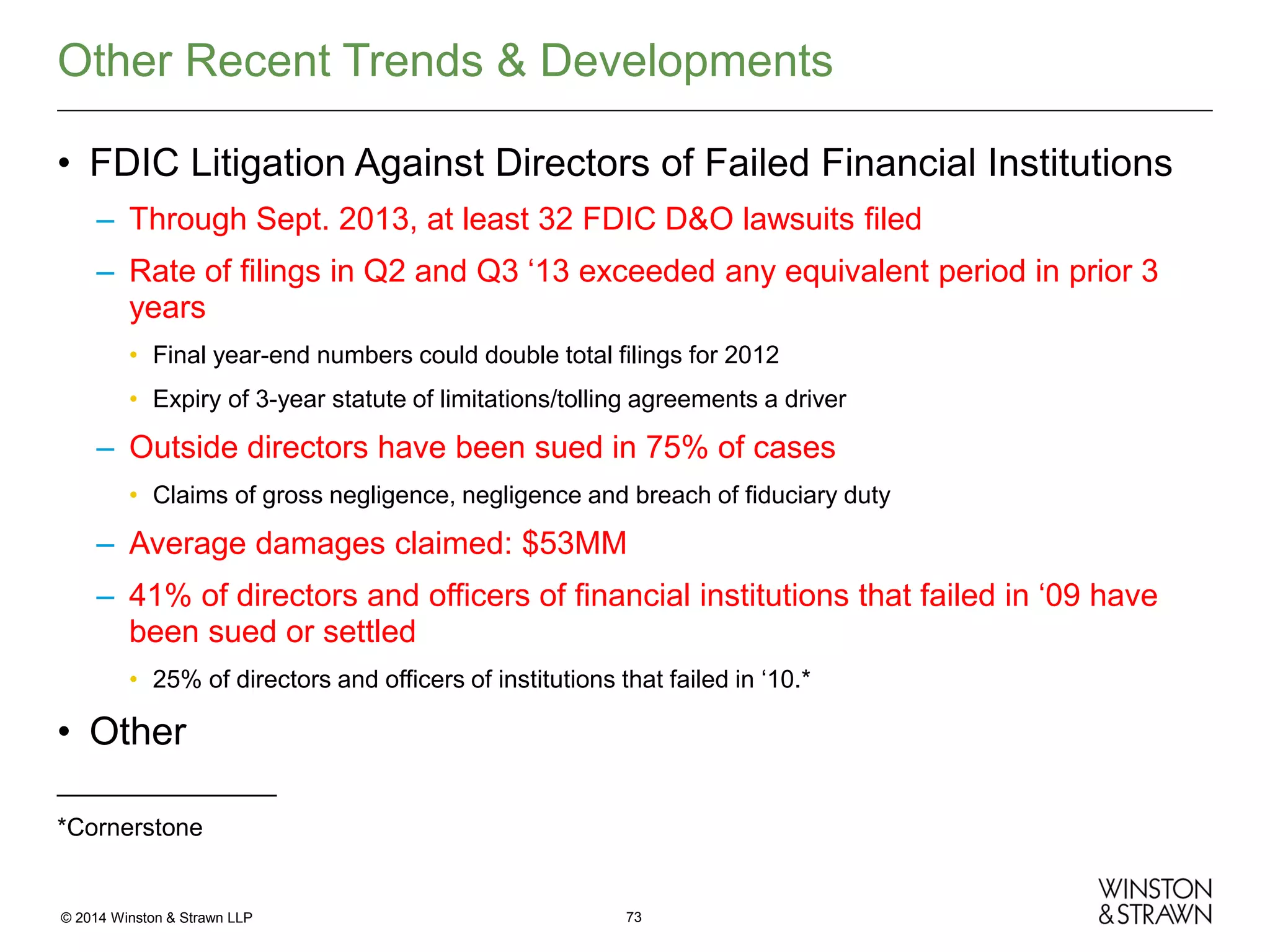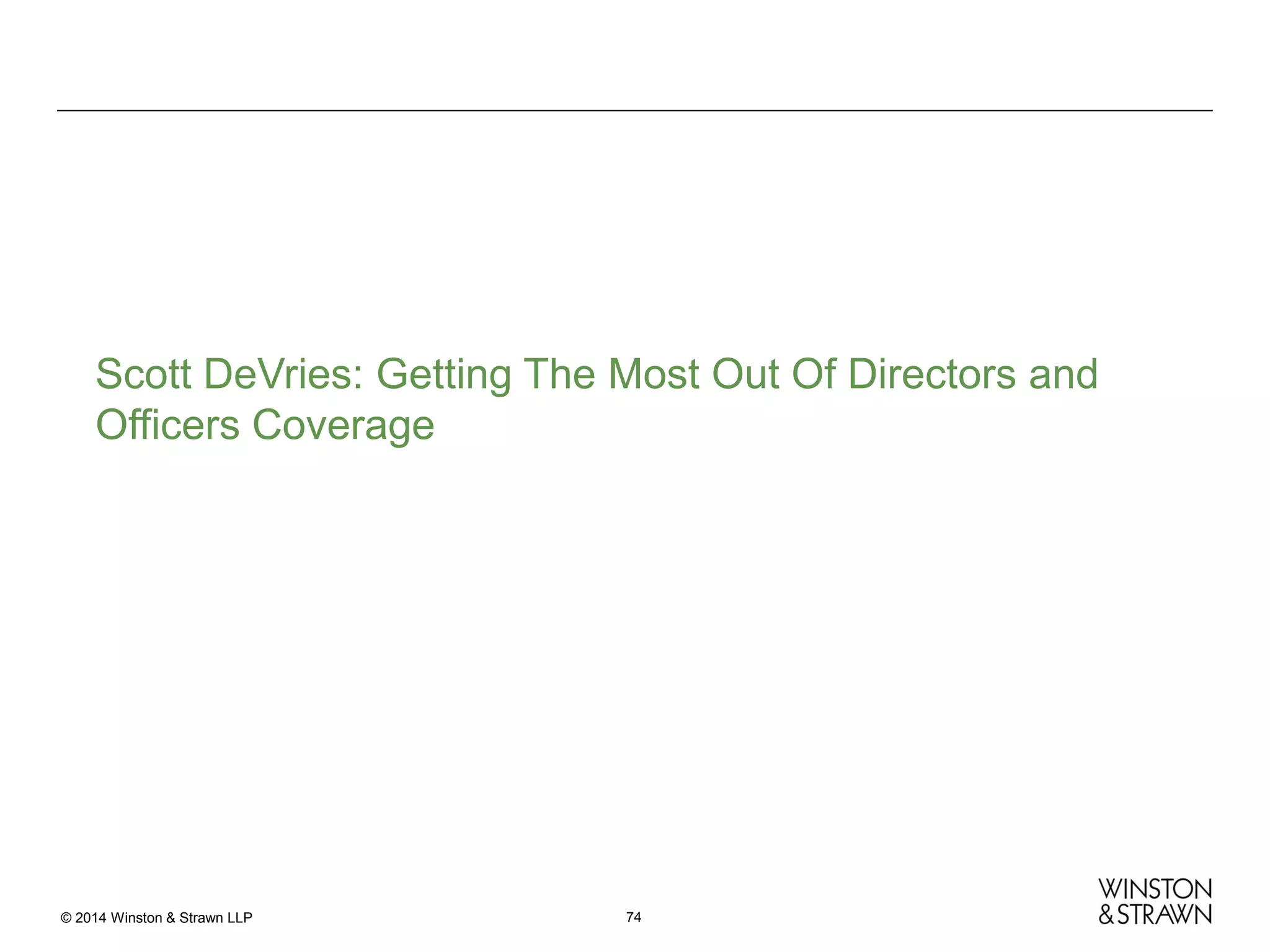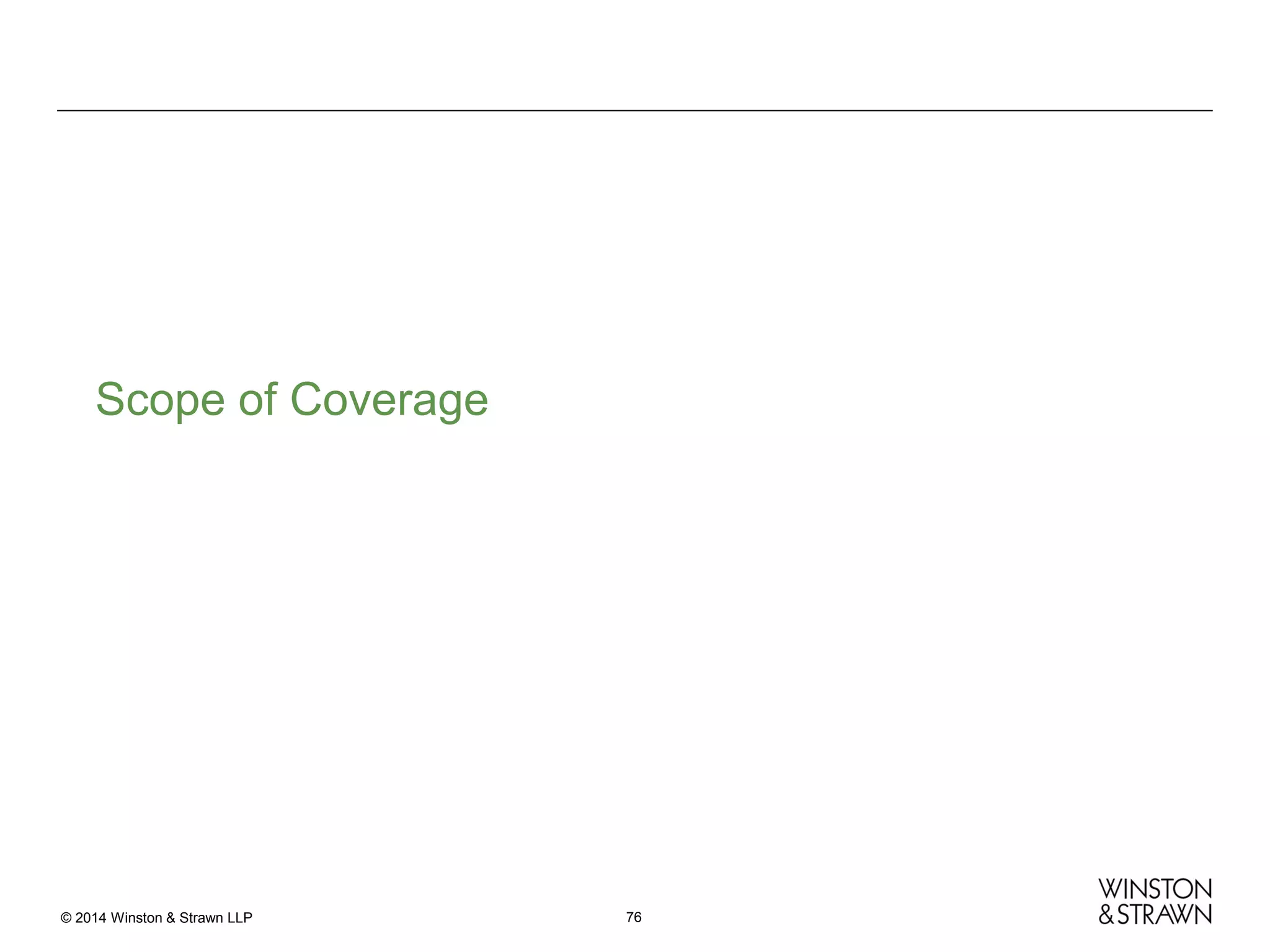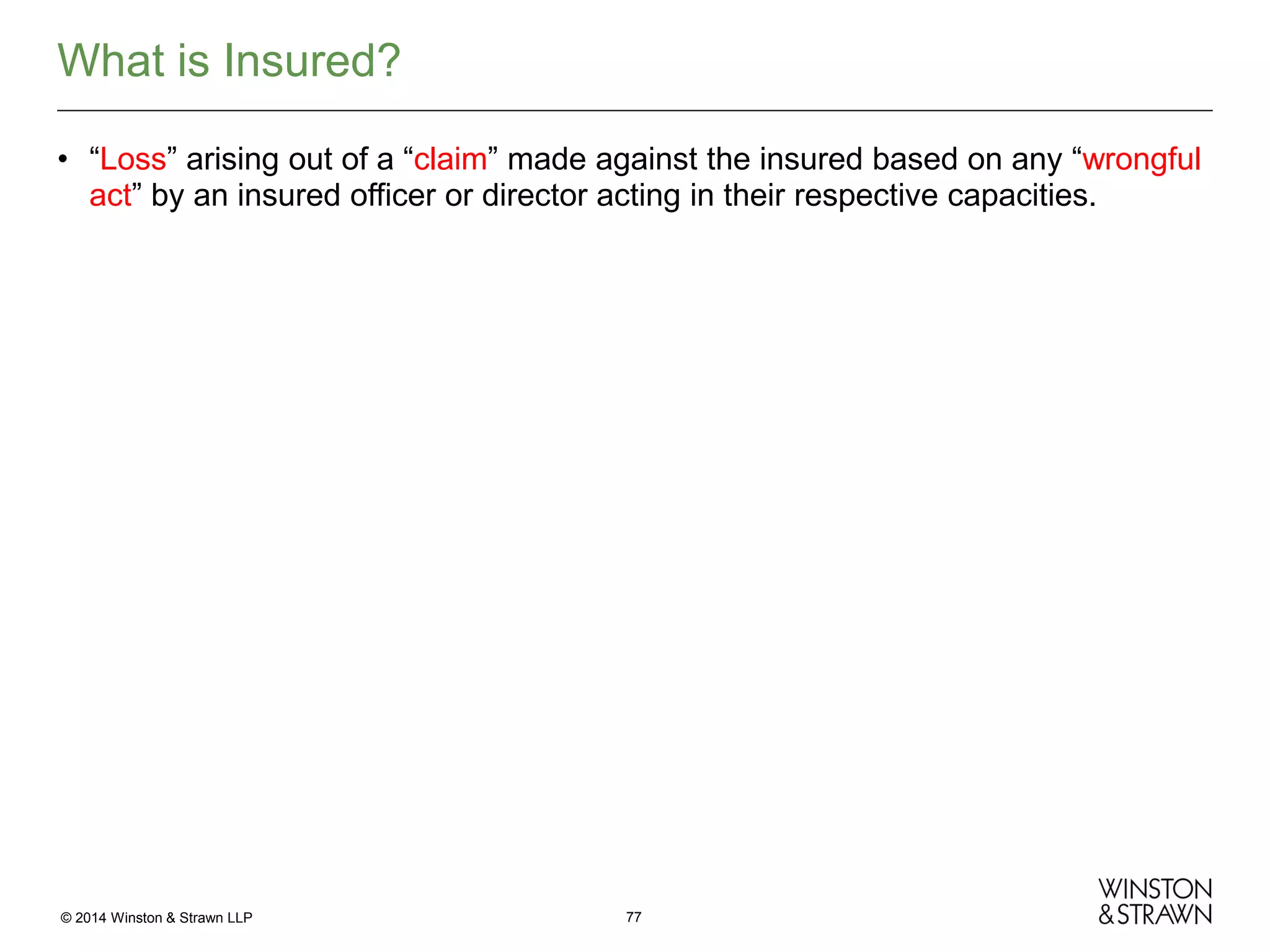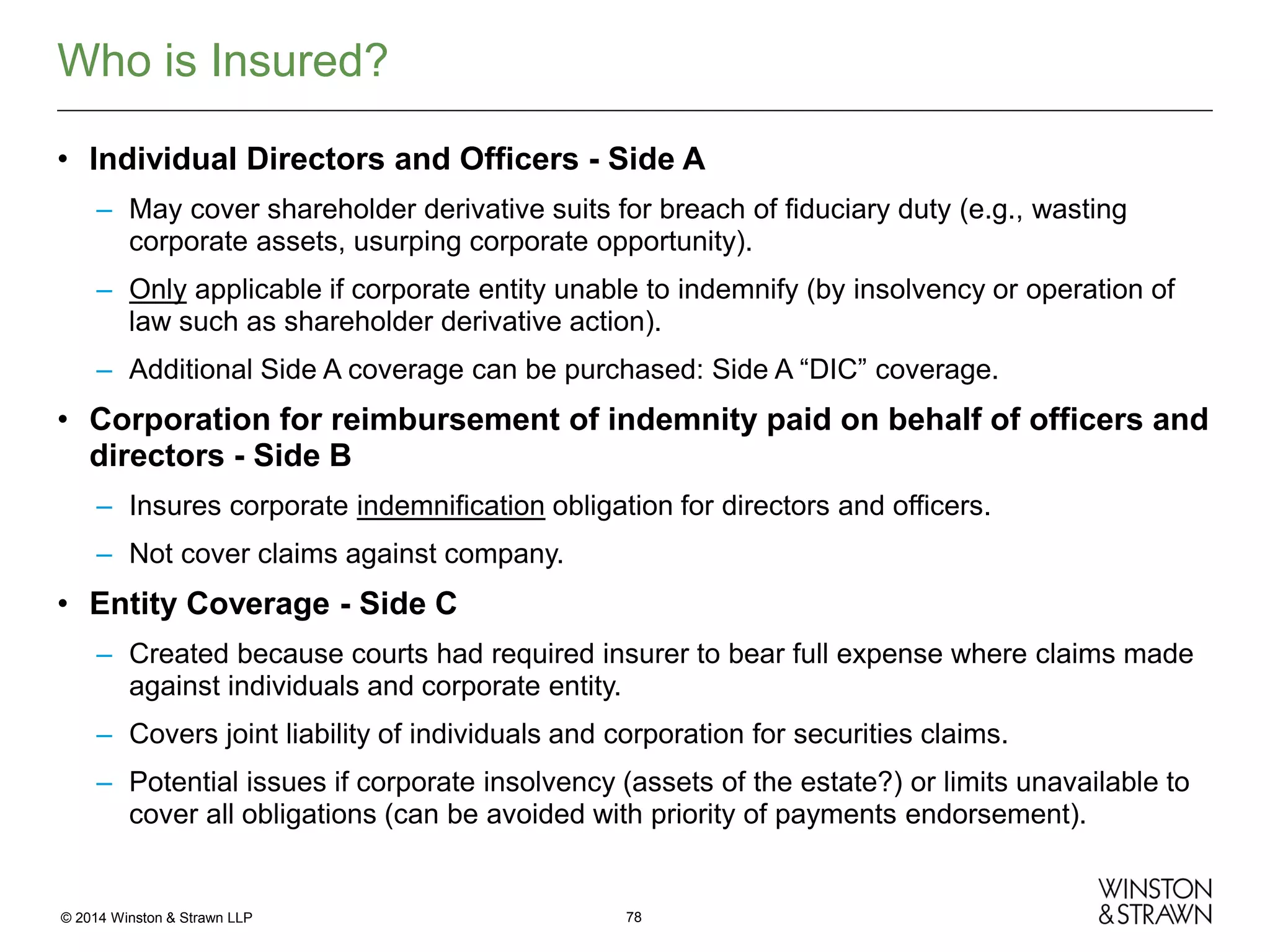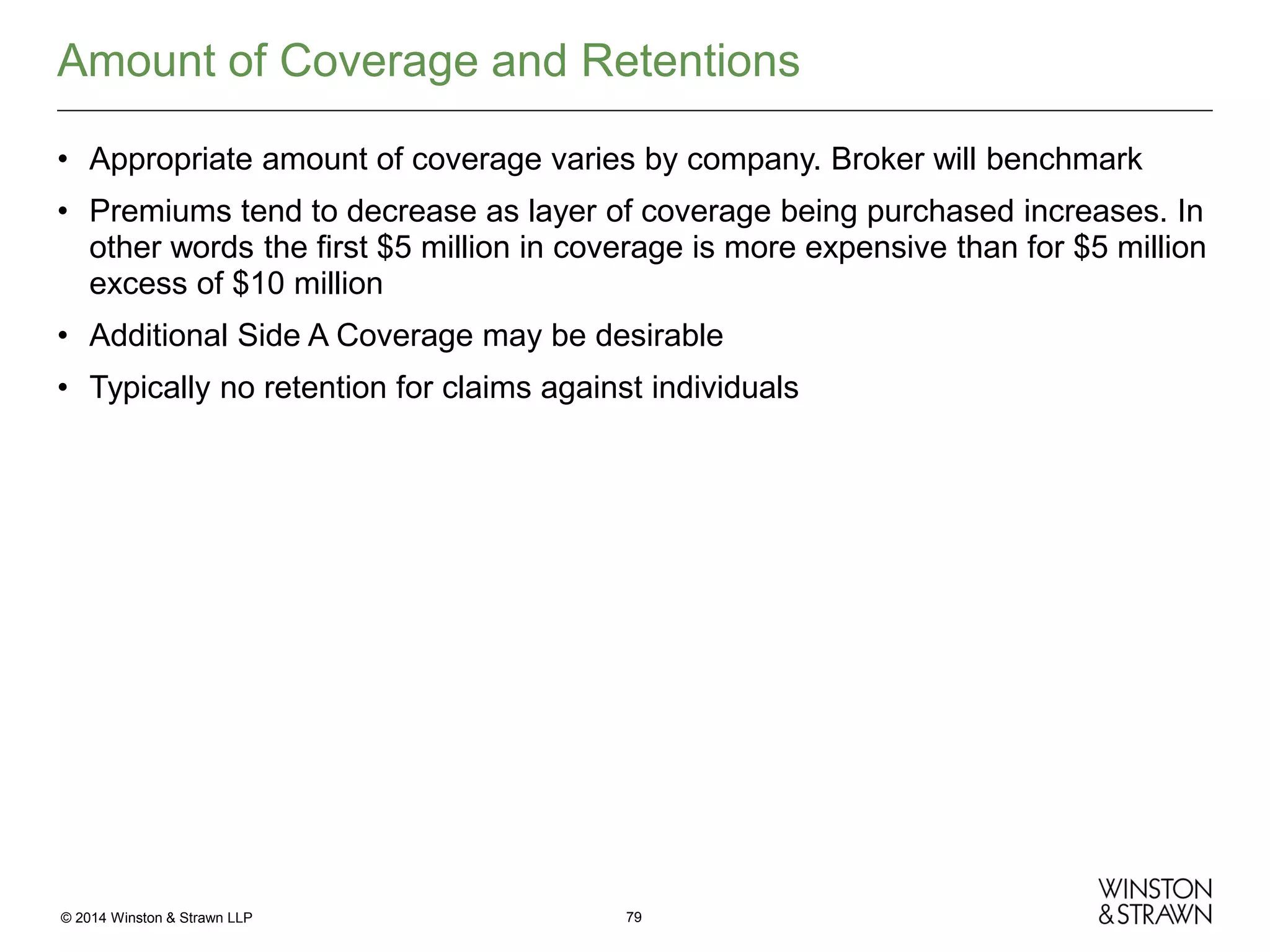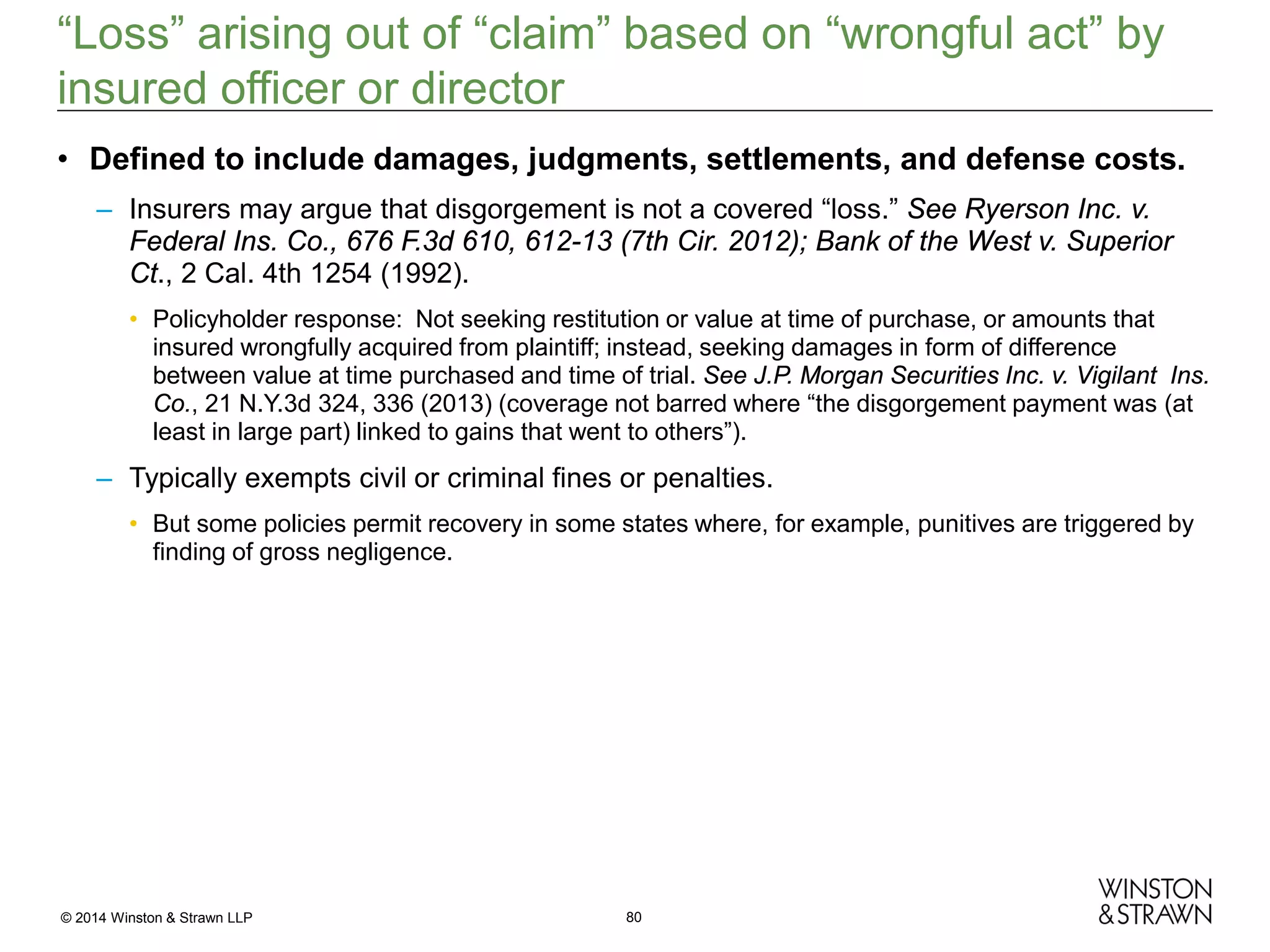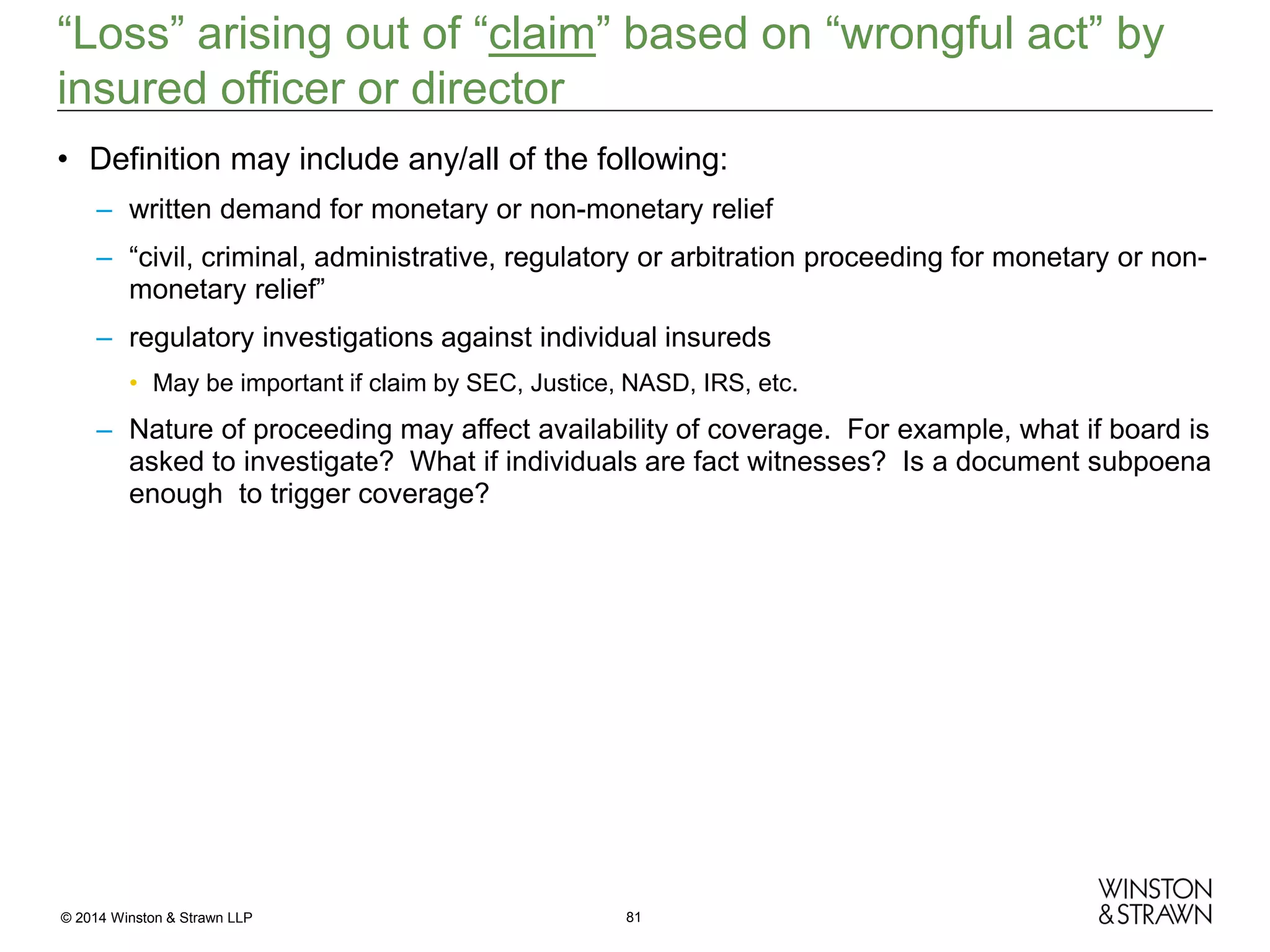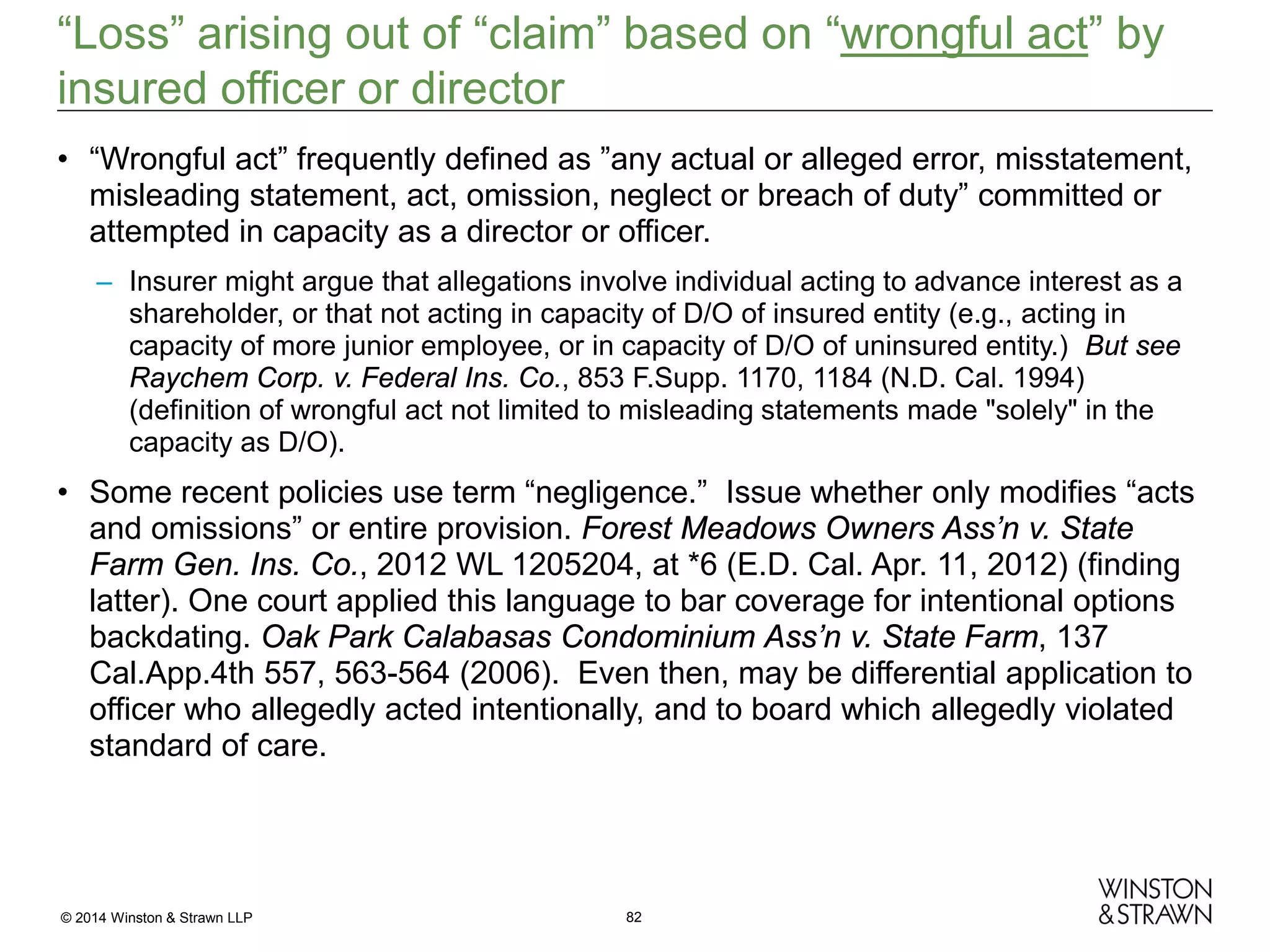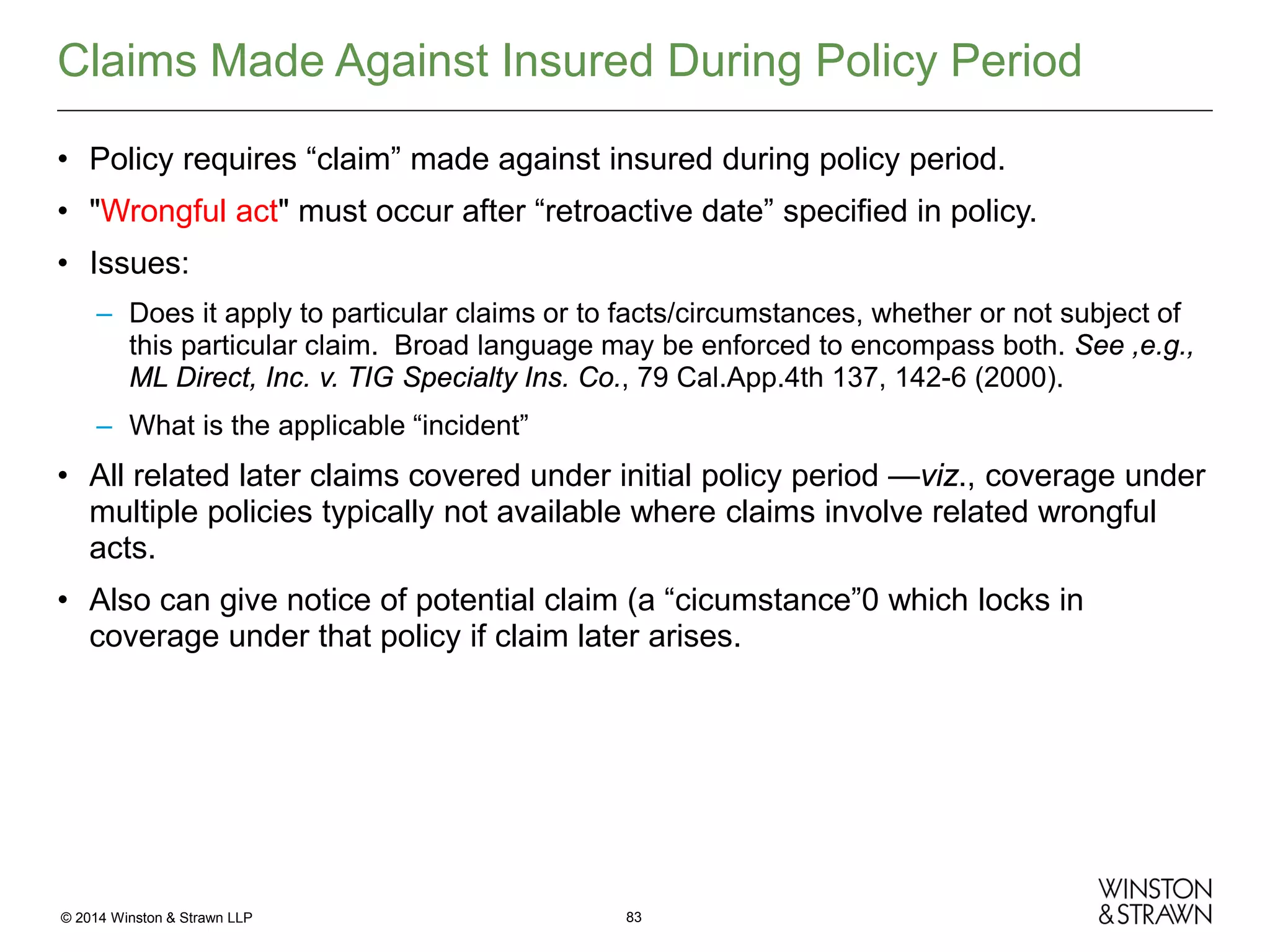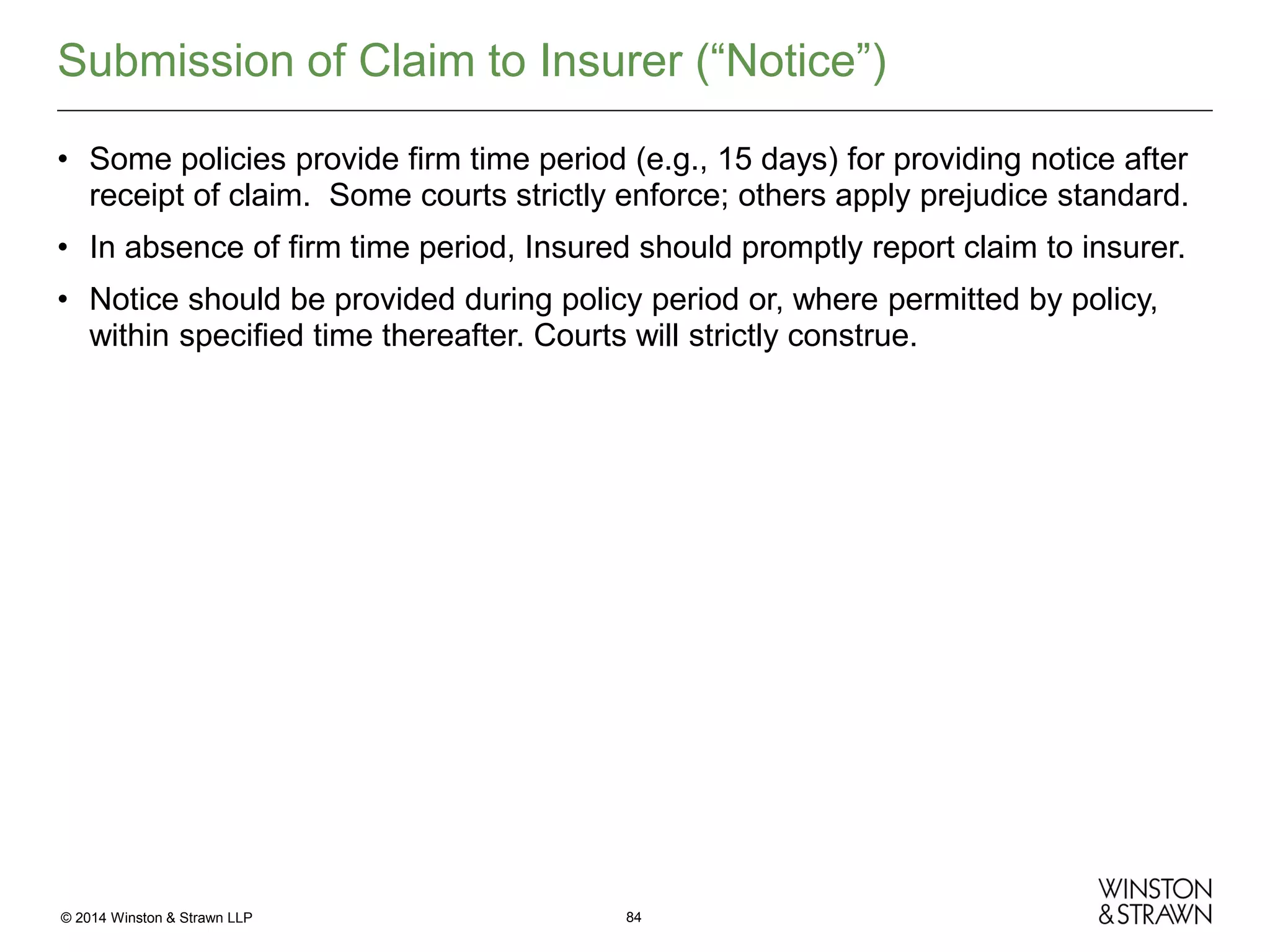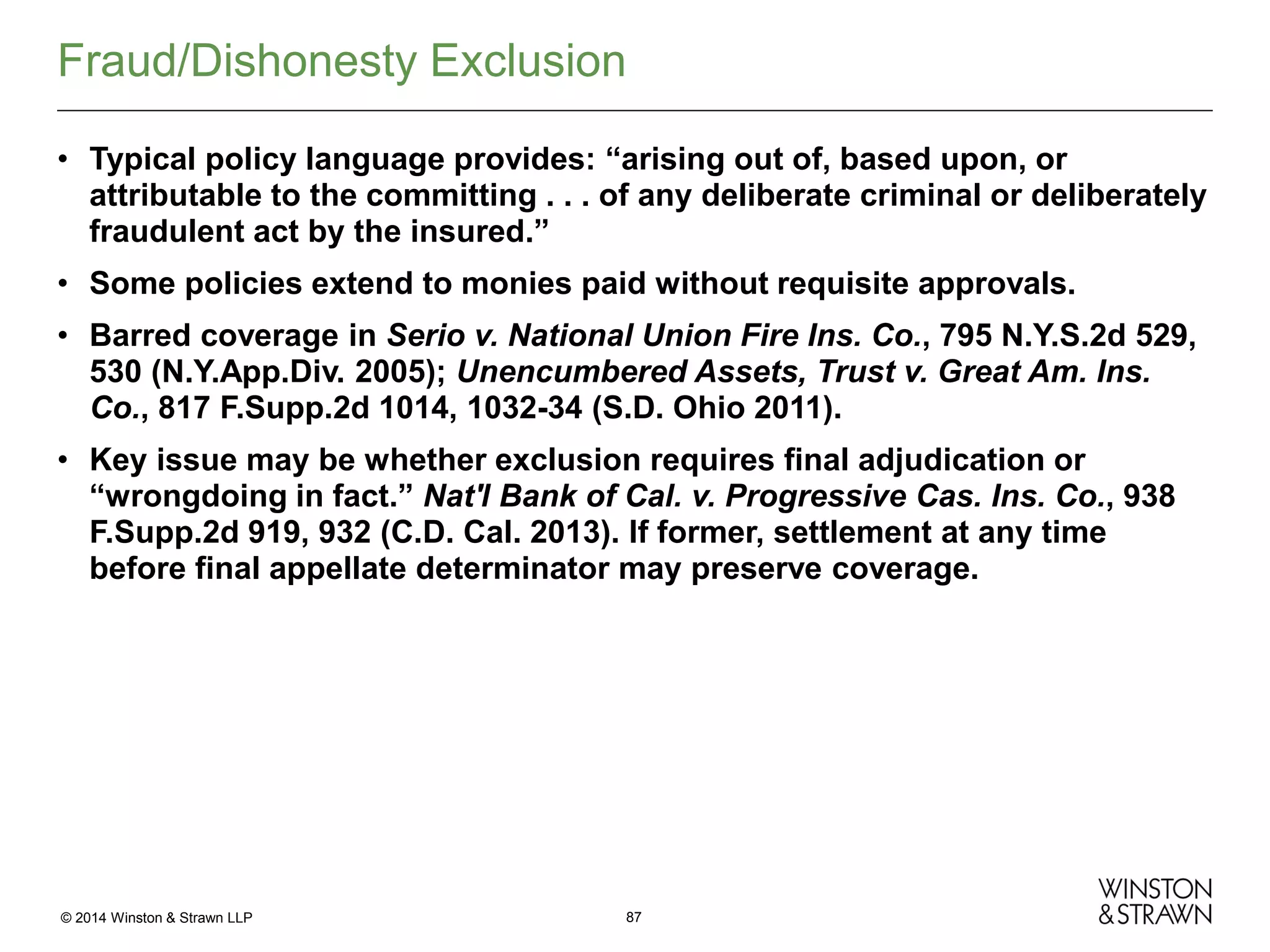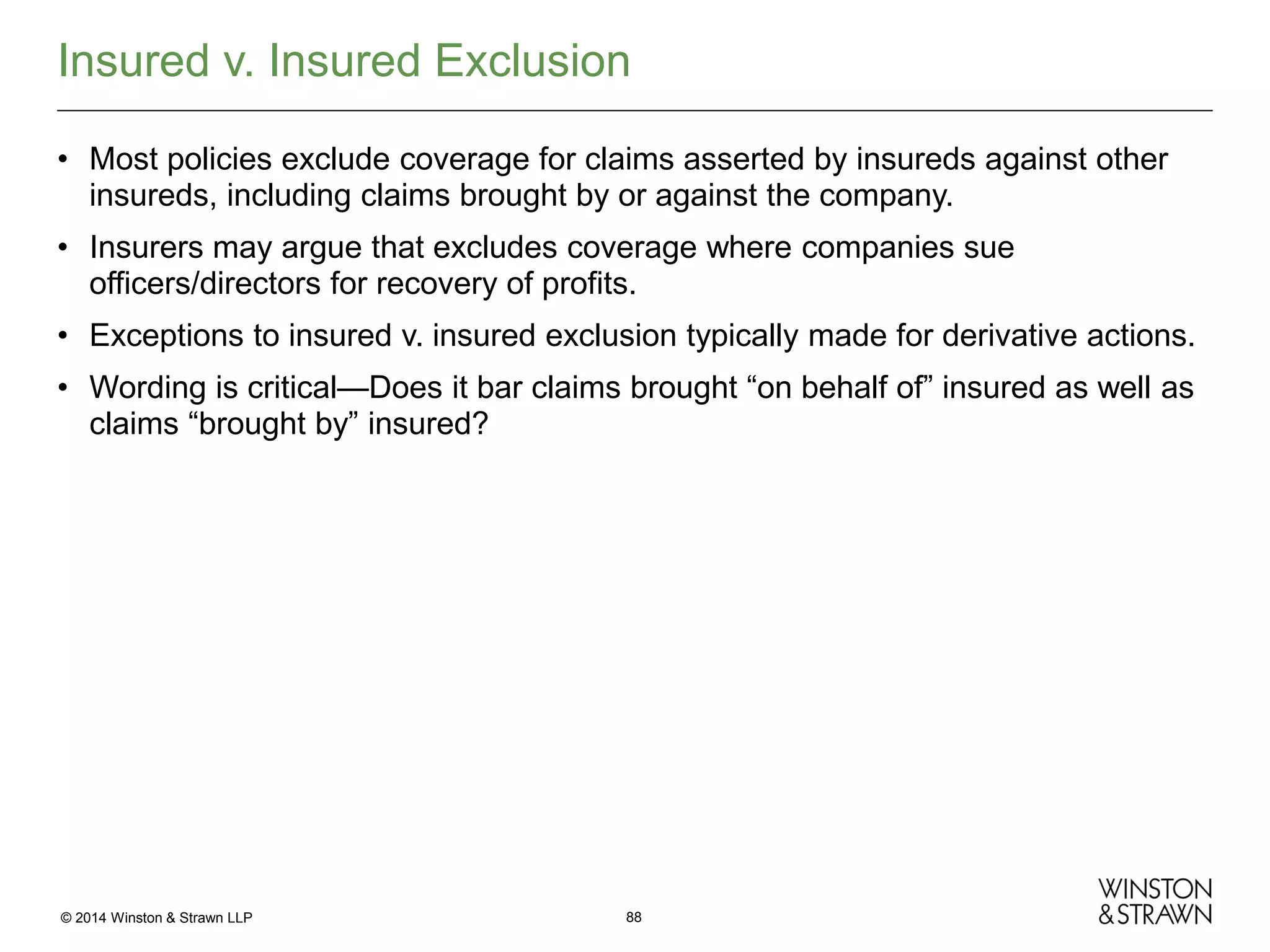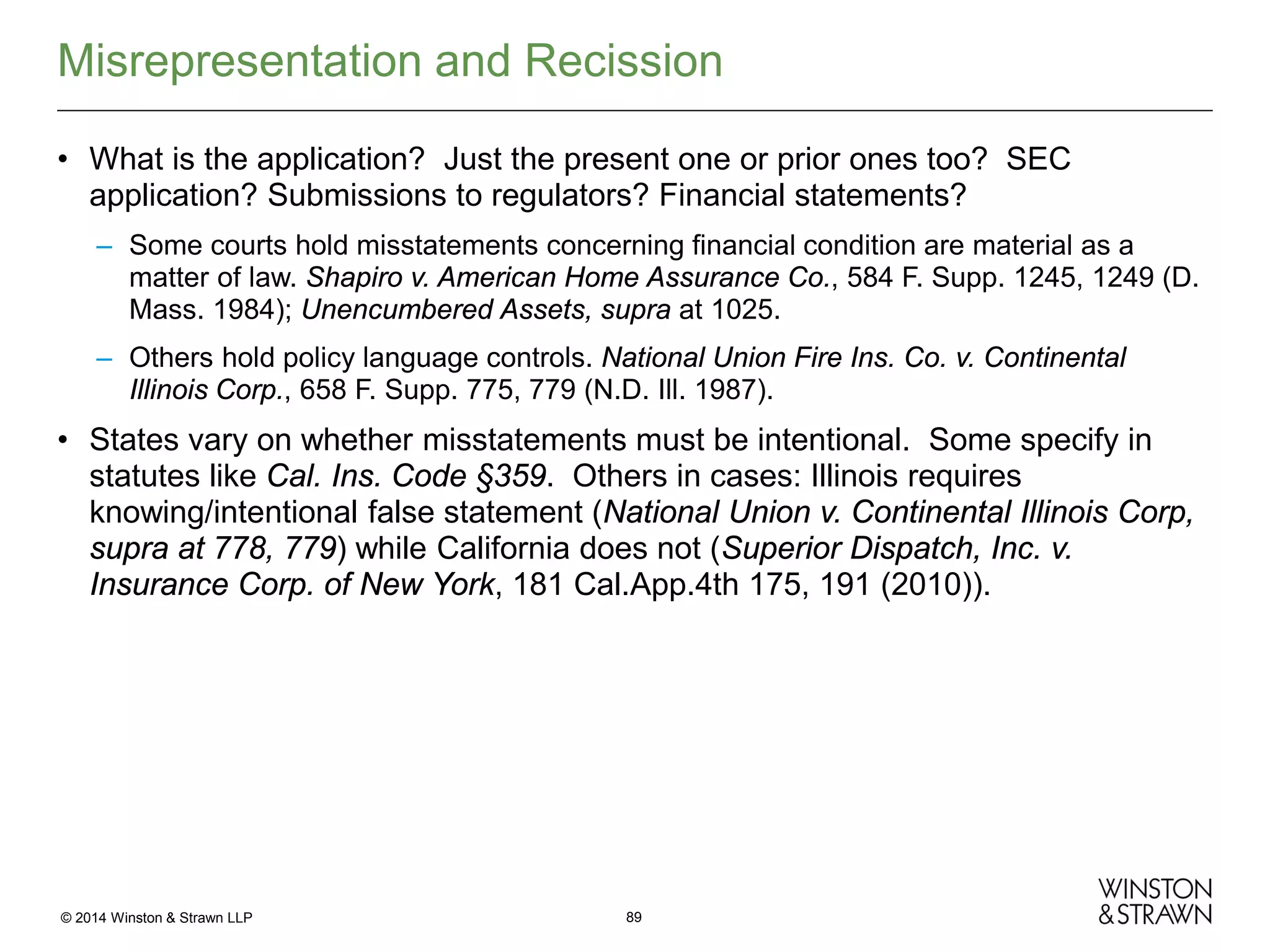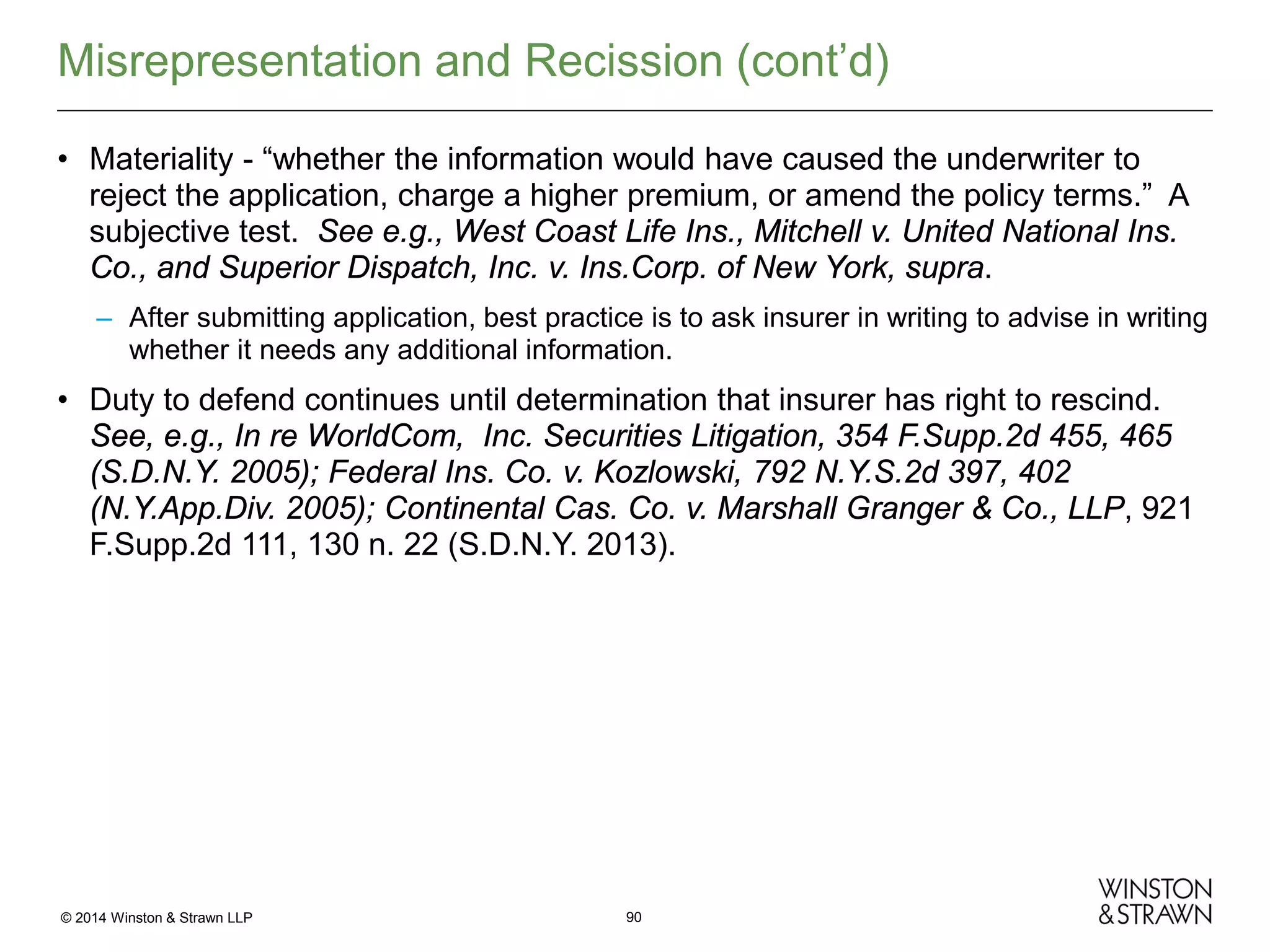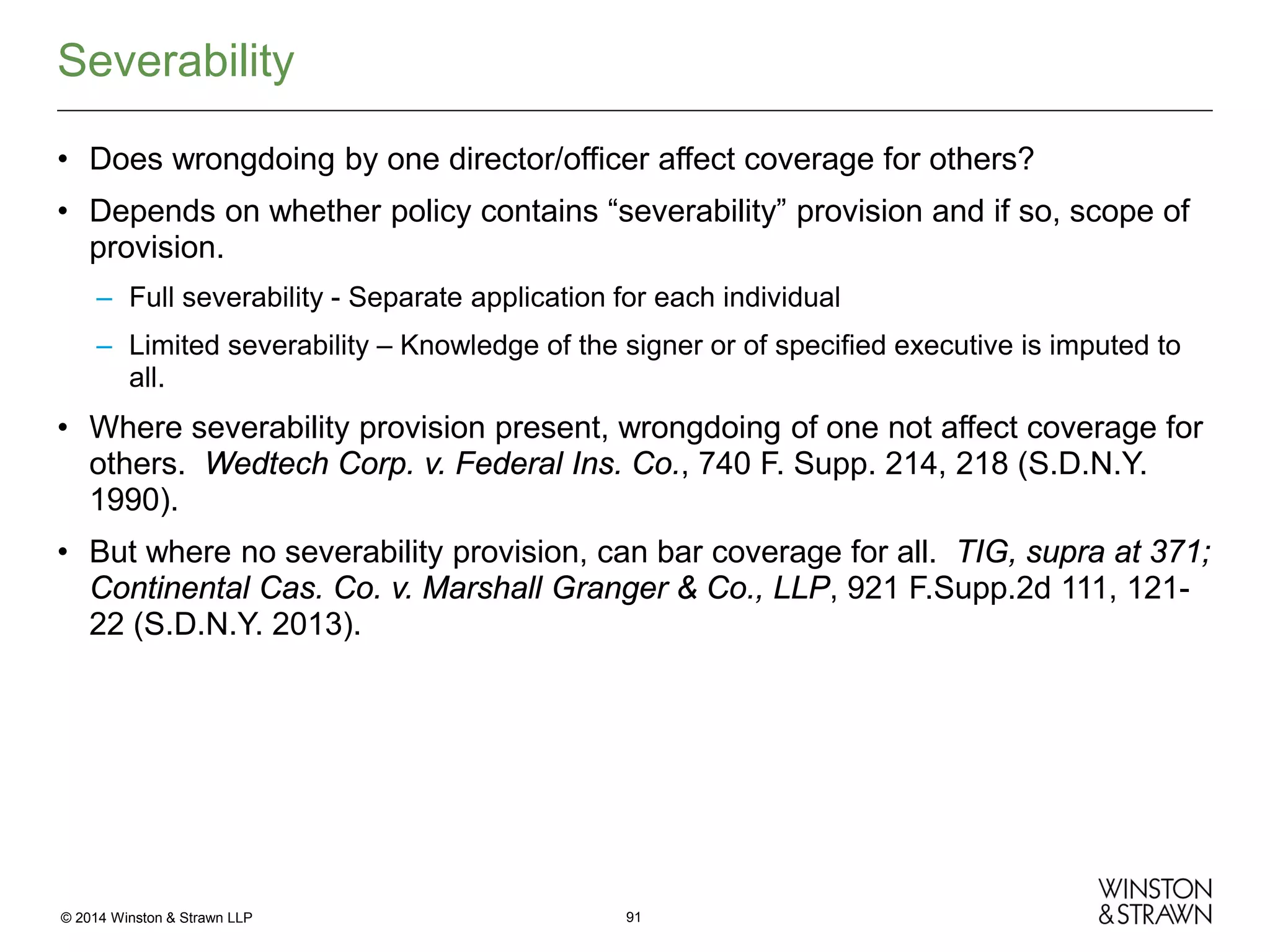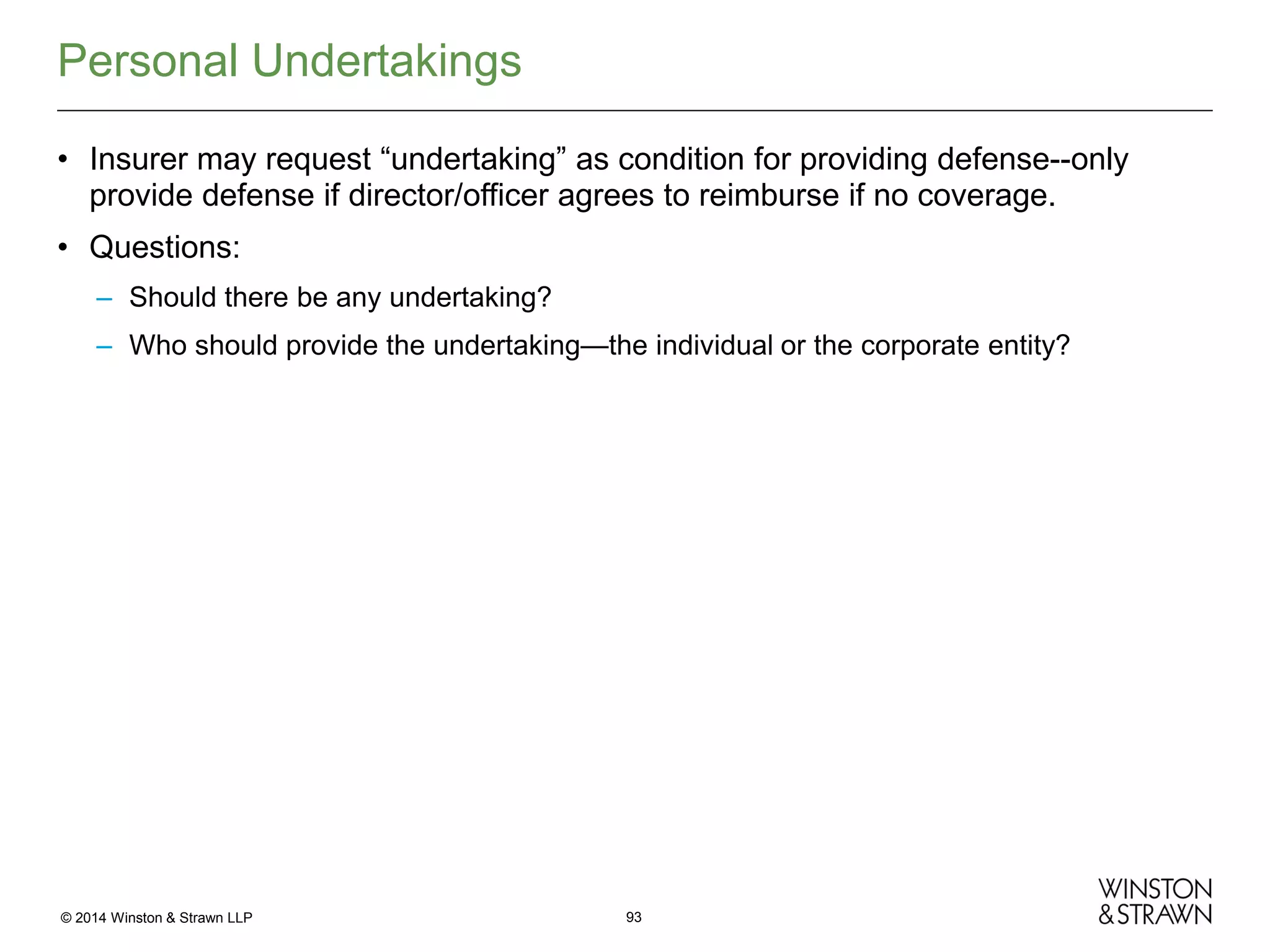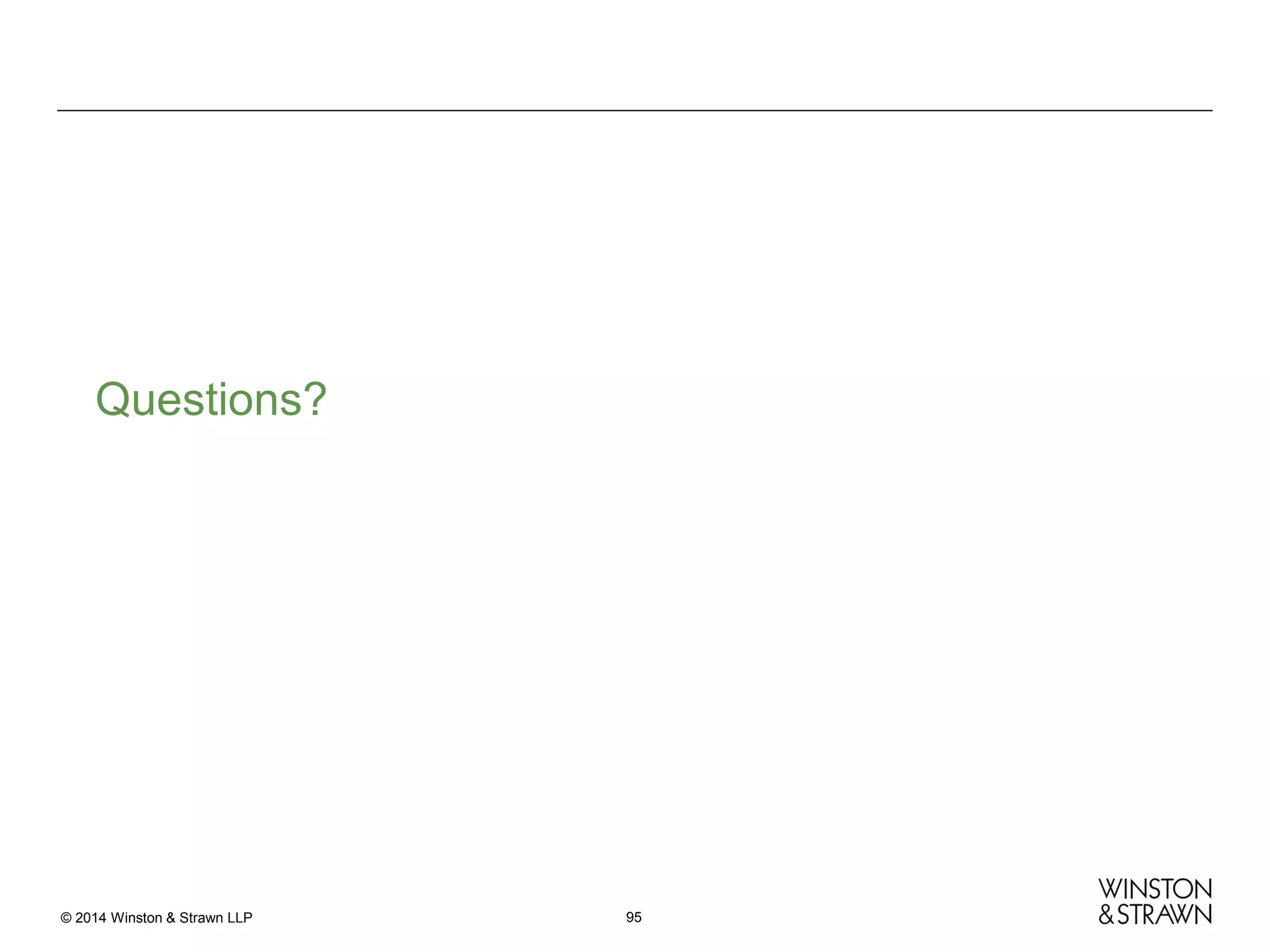The document discusses a forum for financial institution directors focusing on preparations for potential litigation and enforcement actions against them. It highlights concerns about individual liability due to increased regulatory scrutiny and emphasizes the importance of board involvement in compliance and oversight. Key topics include the implications of the Financial Institutions Reform, Recovery, and Enforcement Act (FIRREA) and the role of whistleblower programs in reporting violations.
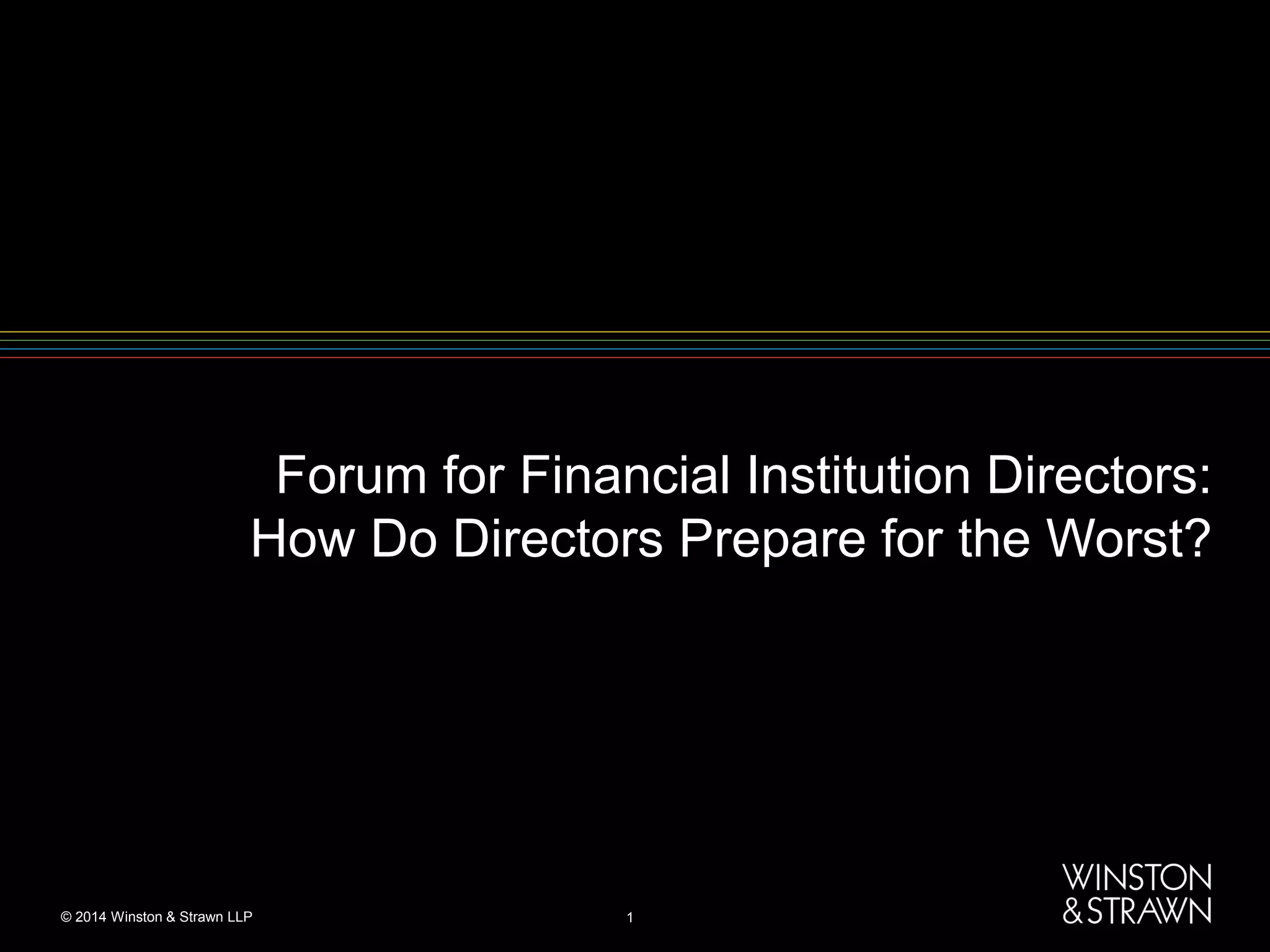
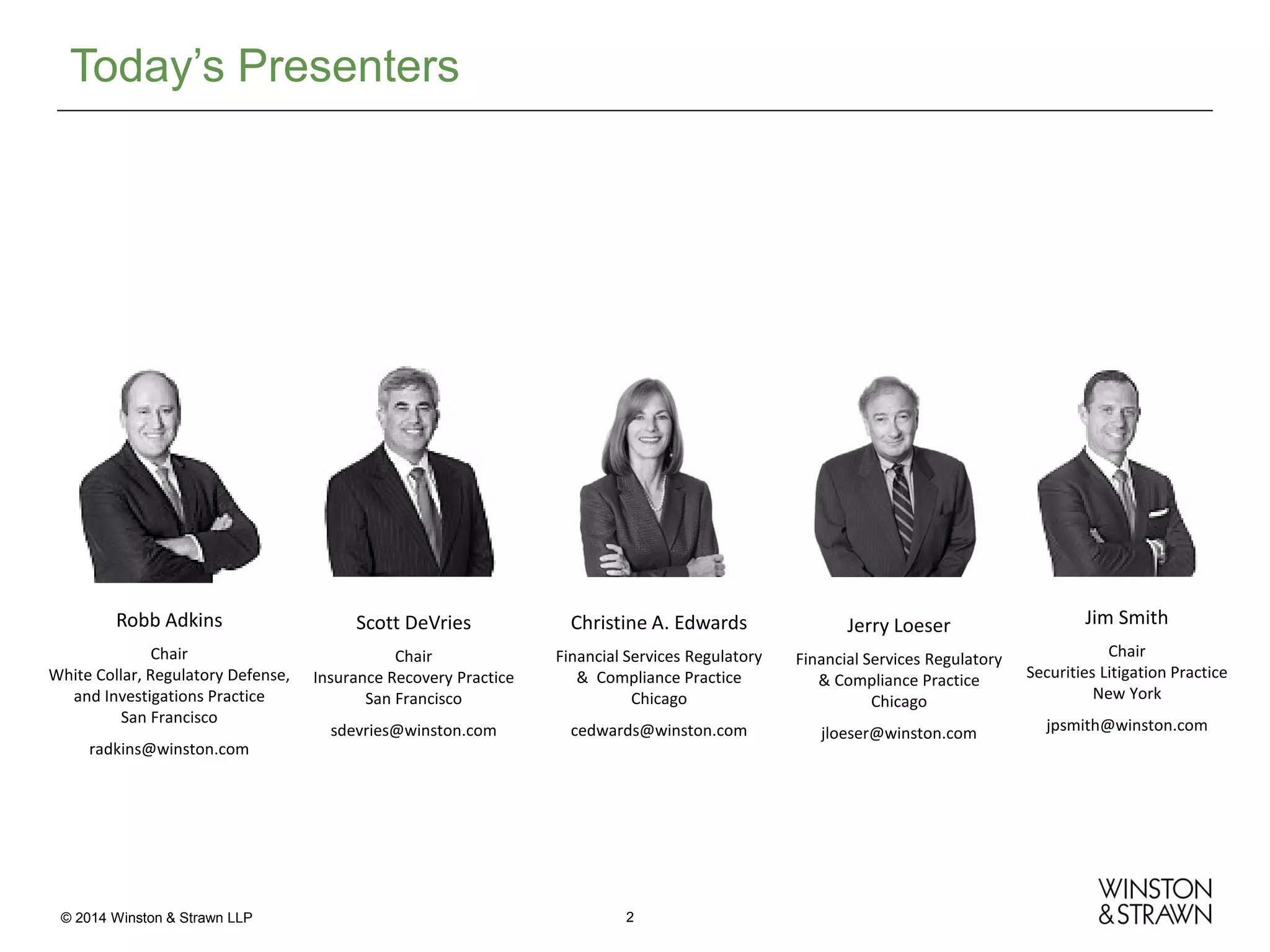
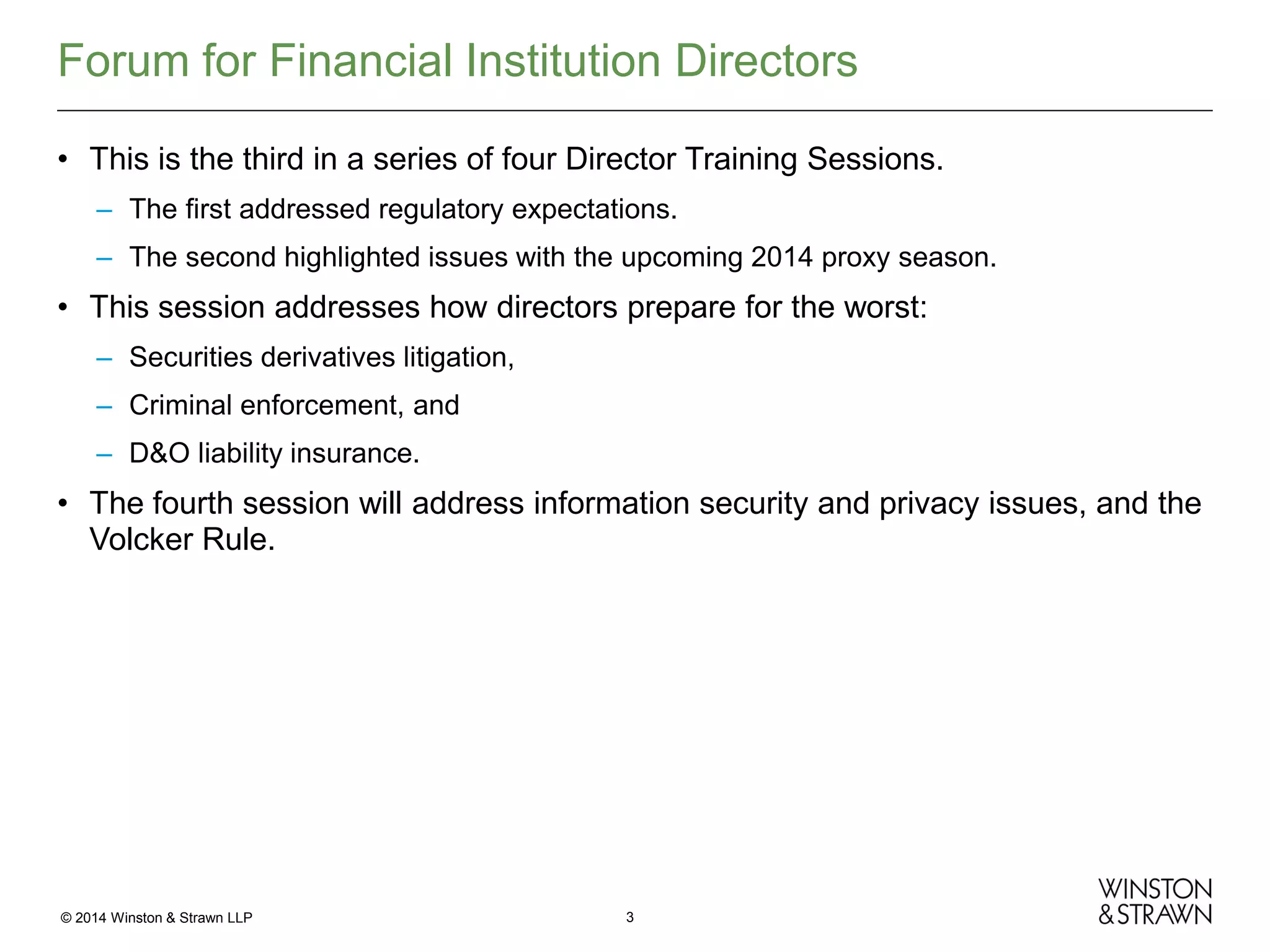
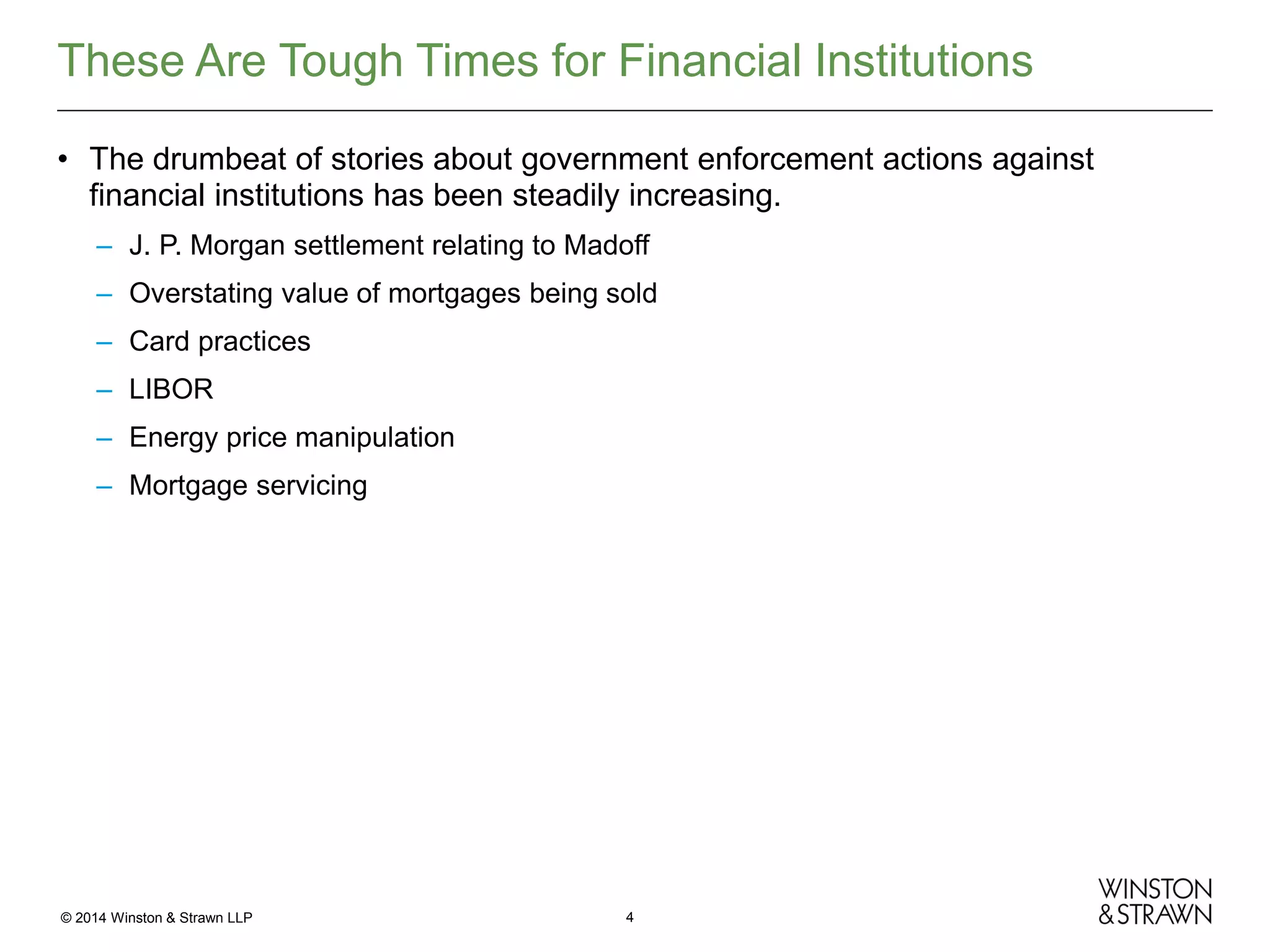
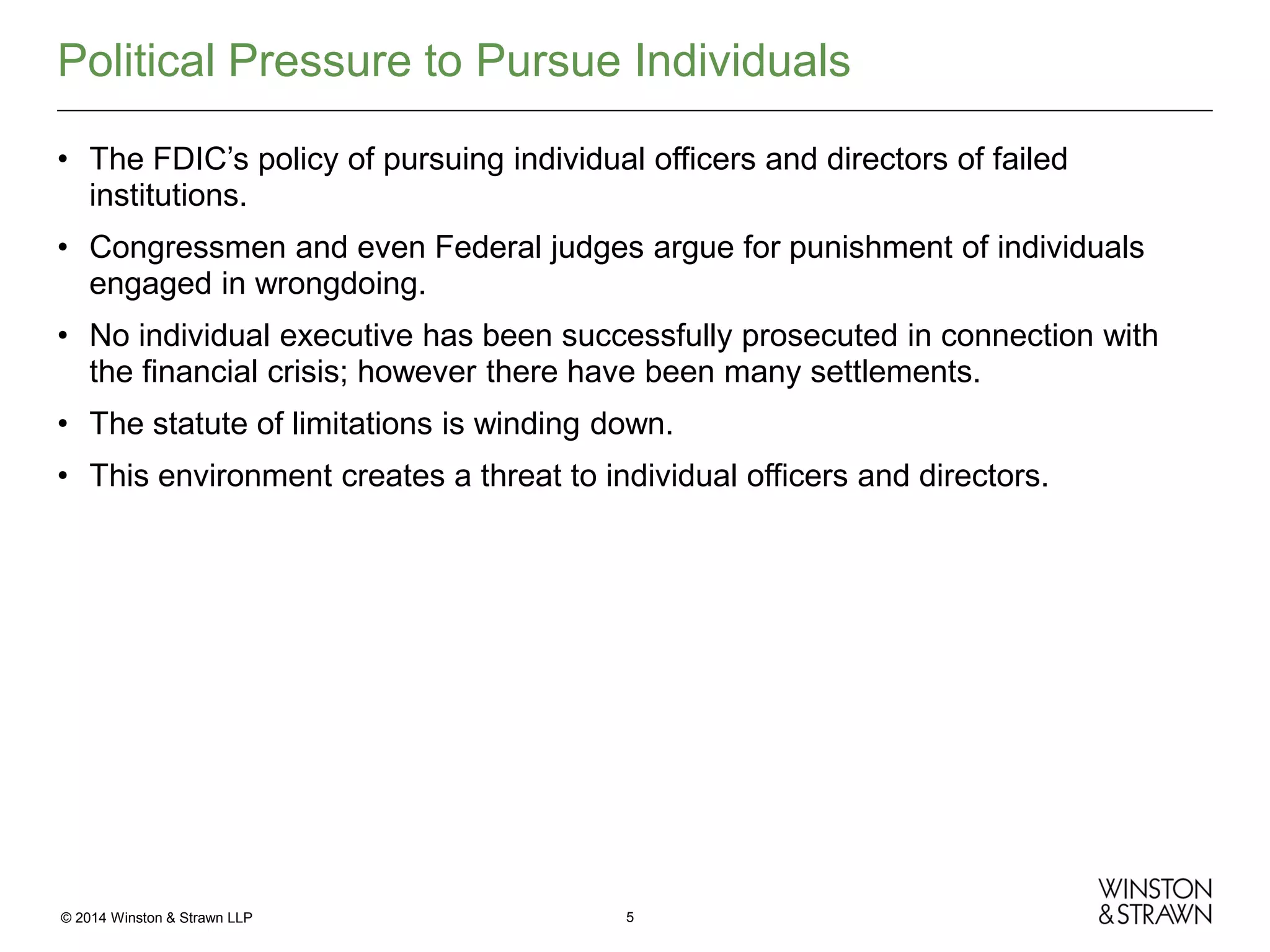
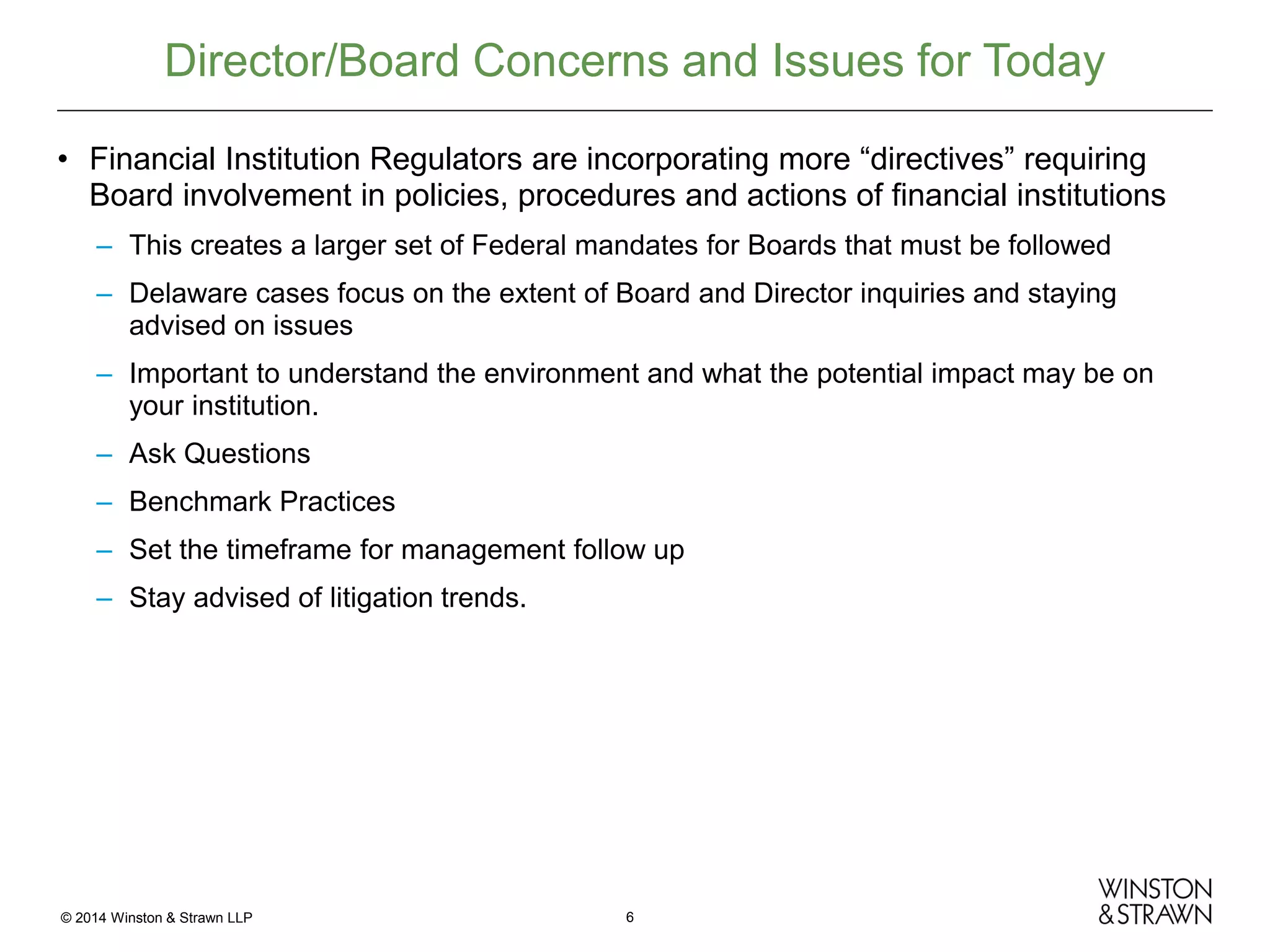
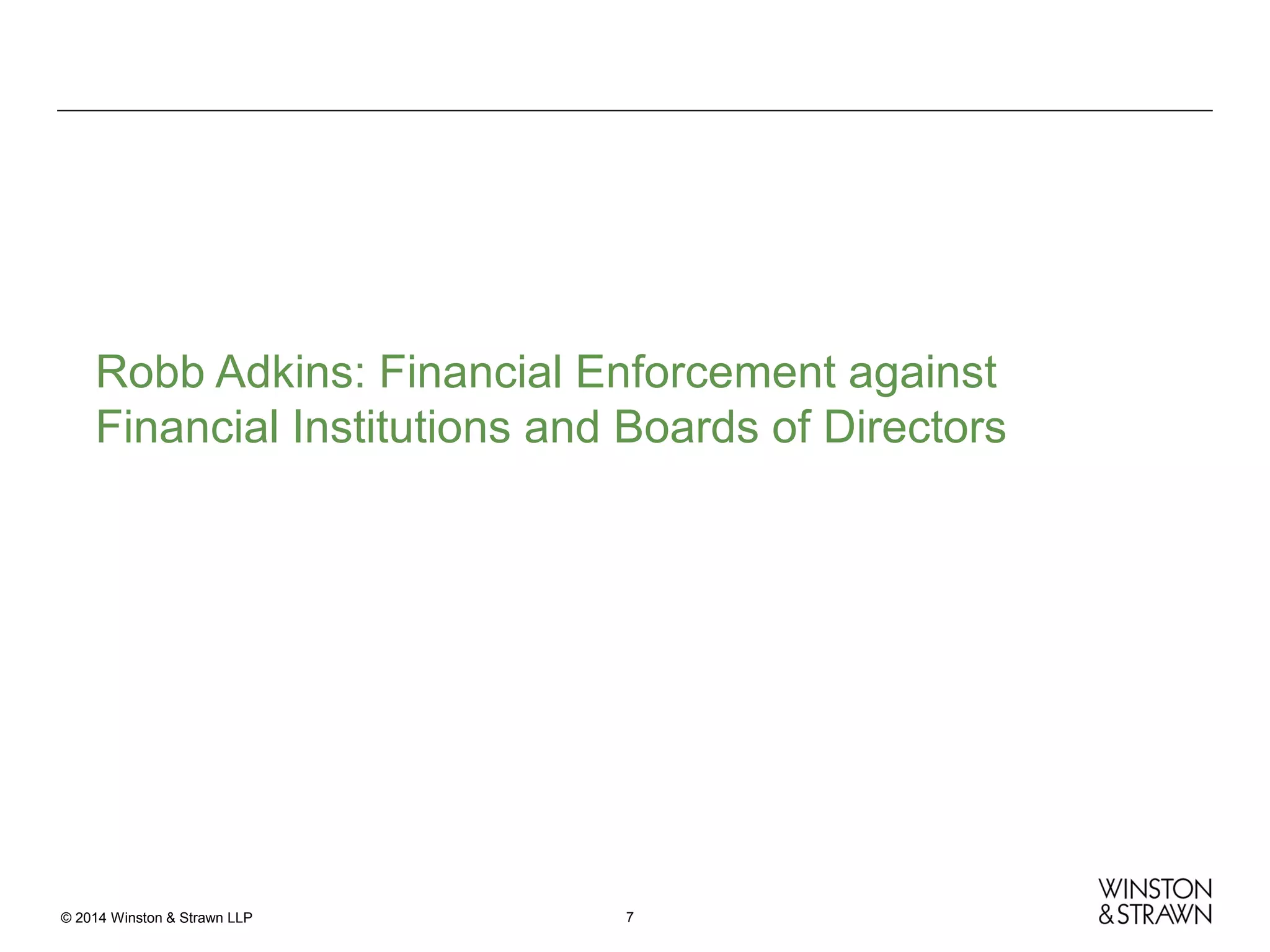
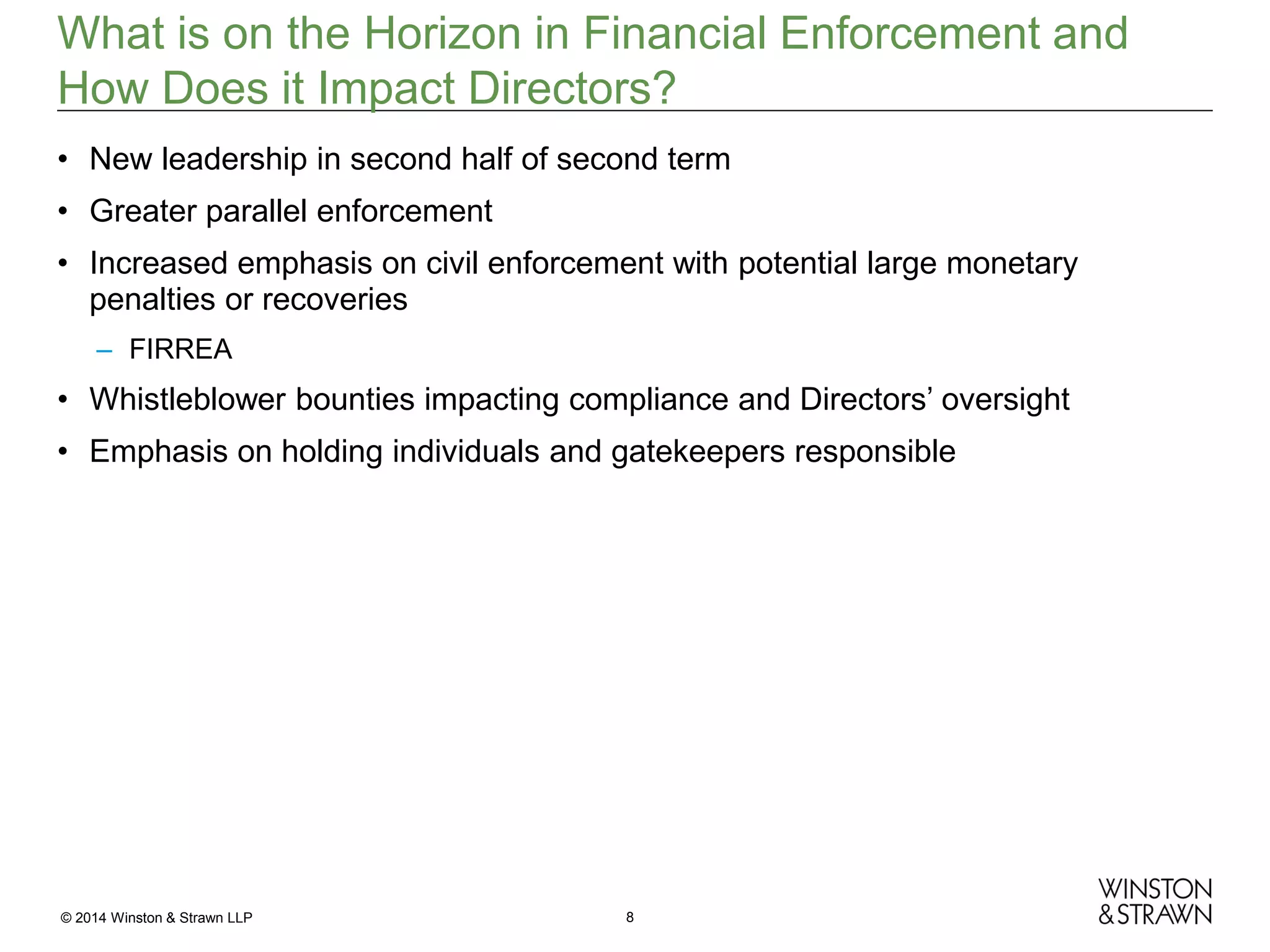
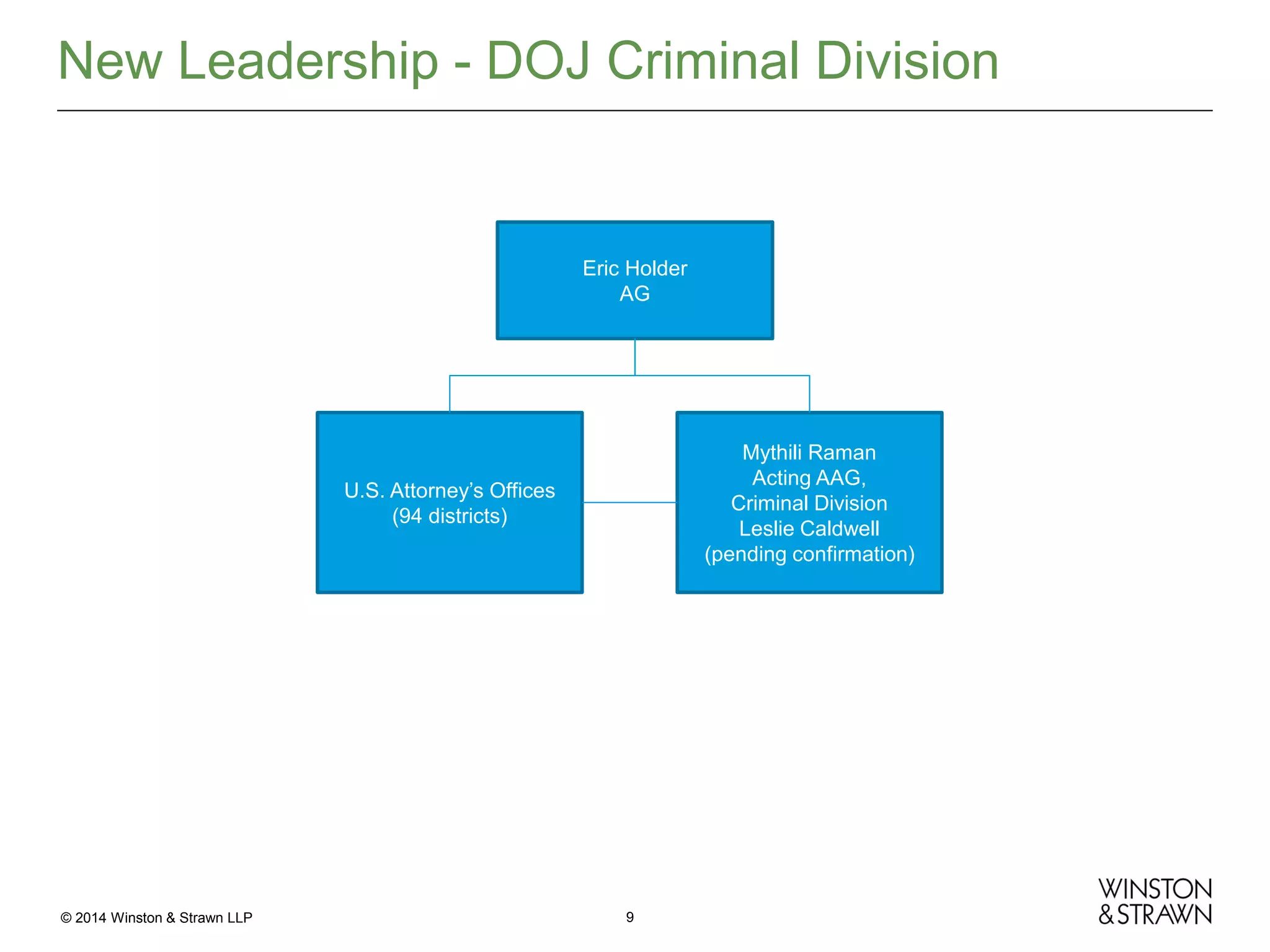
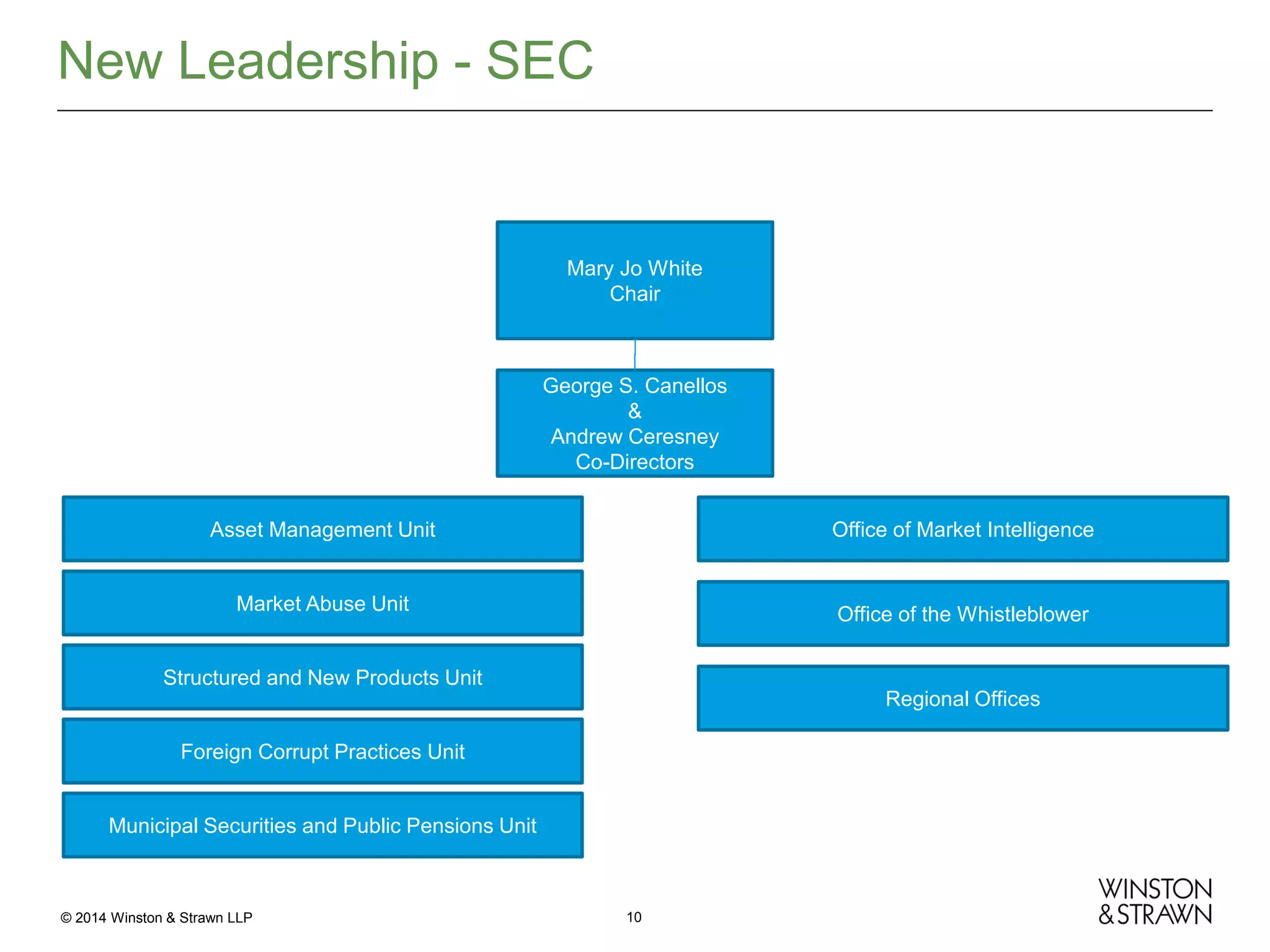

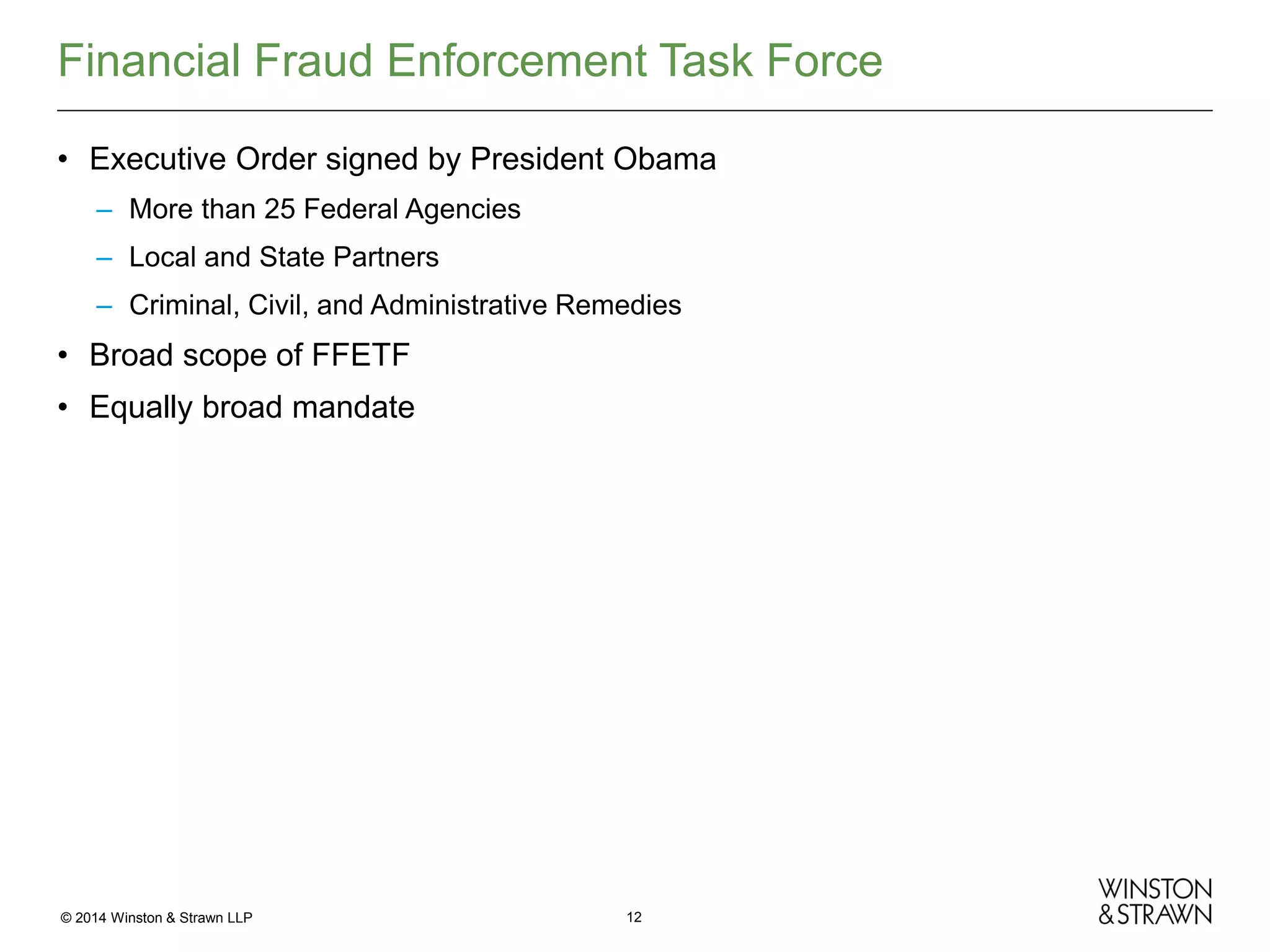
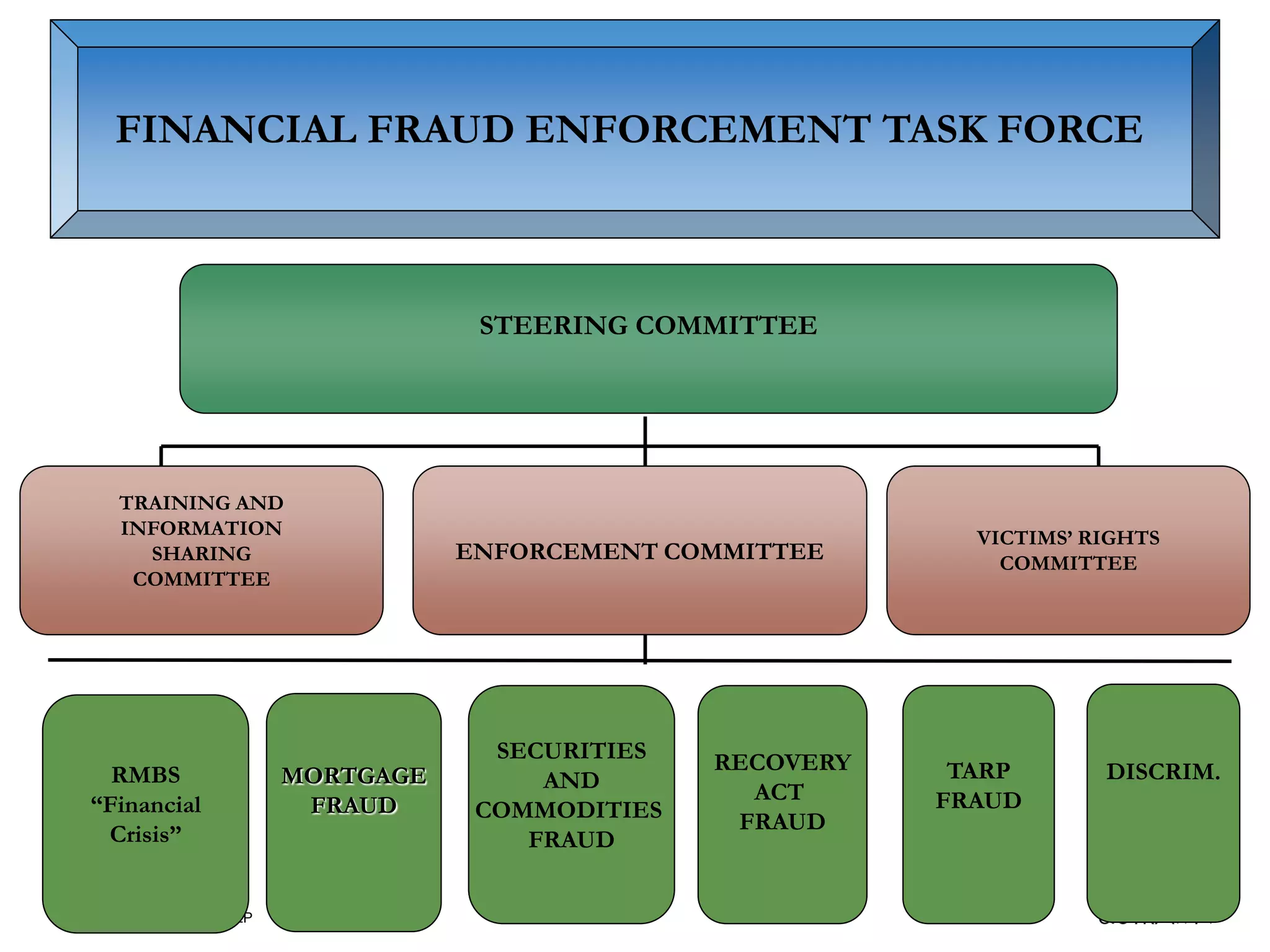
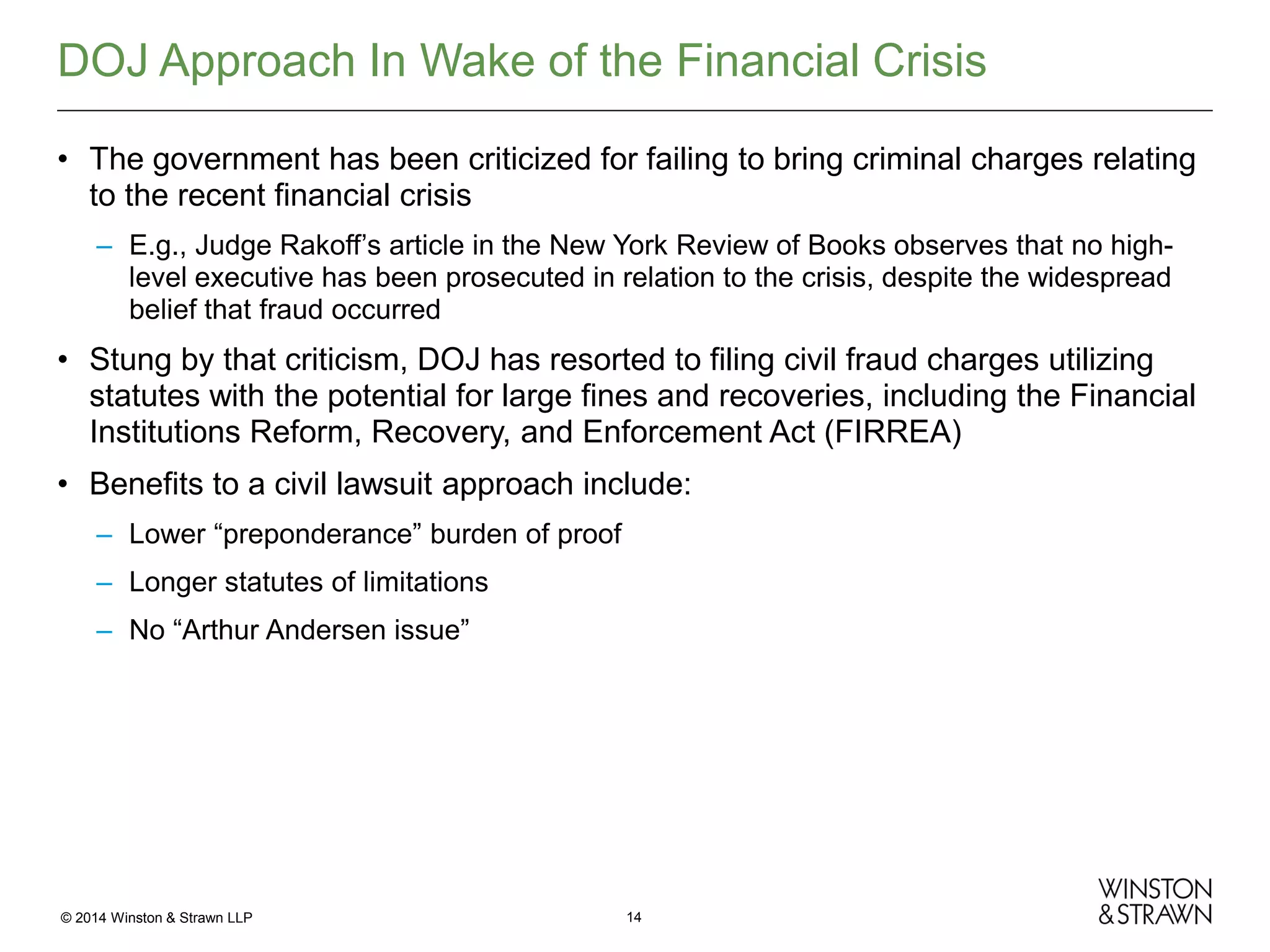

![Purpose of FIRREA
• Many believe FIRREA was initially intended to protect financial institutions from
fraud
• According to the legislative history, one of “[t]he primary purposes of the
Financial Institutions Reform, Recovery and Enforcement Act of 1989 [was to]
enhance the regulatory enforcement powers of the depository institution
regulatory agencies to protect against fraud, waste and insider abuse.”
– In Wells Fargo, Judge Furman acknowledged that the “legislative history is ambiguous
at best.”
© 2014 Winston & Strawn LLP
16](https://image.slidesharecdn.com/1-15-2014howdodirectorspreparefortheworstfinal-140123164941-phpapp01/75/Forum-for-Financial-Institution-Directors-How-Do-Directors-Prepare-for-the-Worst-16-2048.jpg)
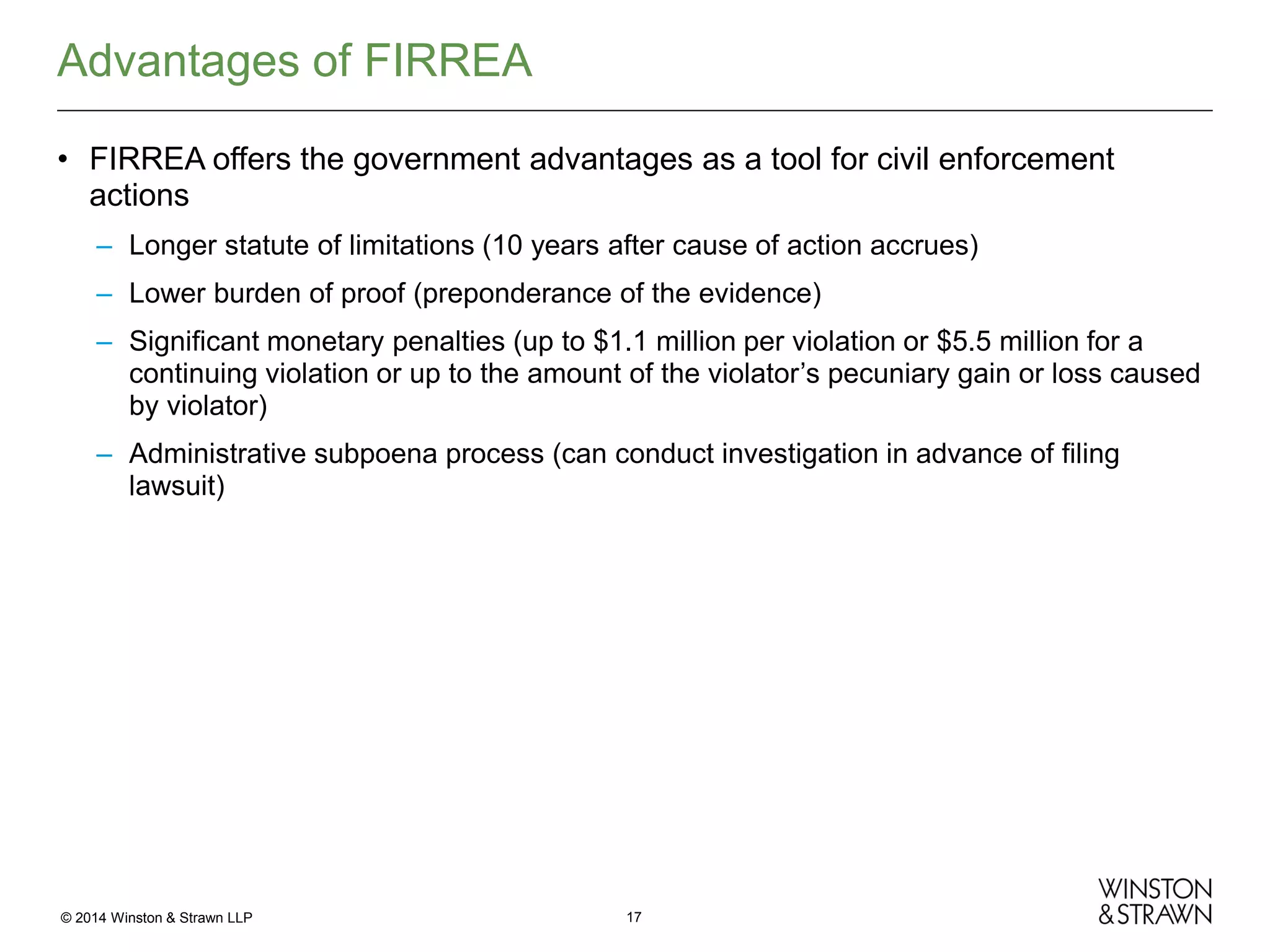
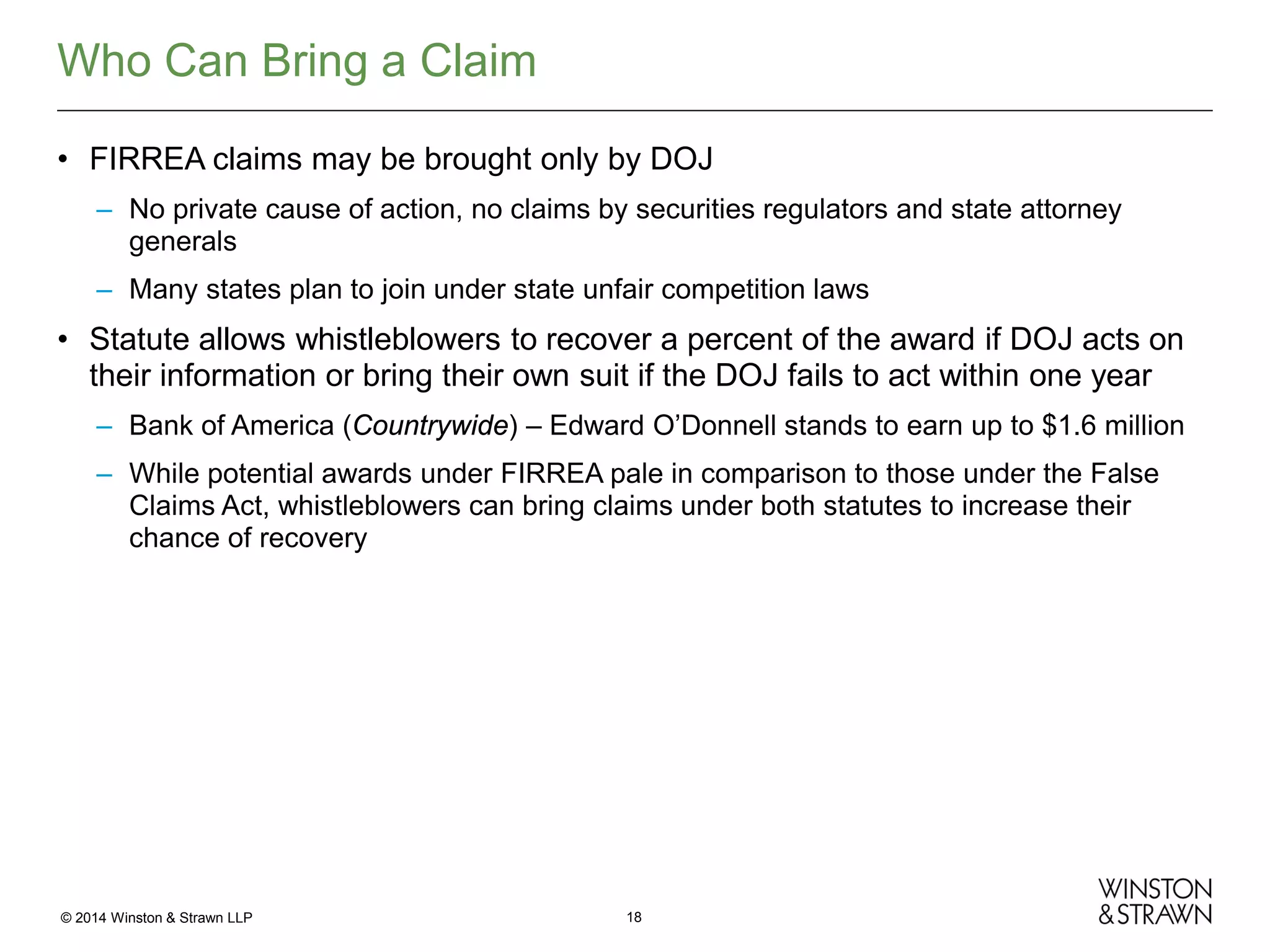
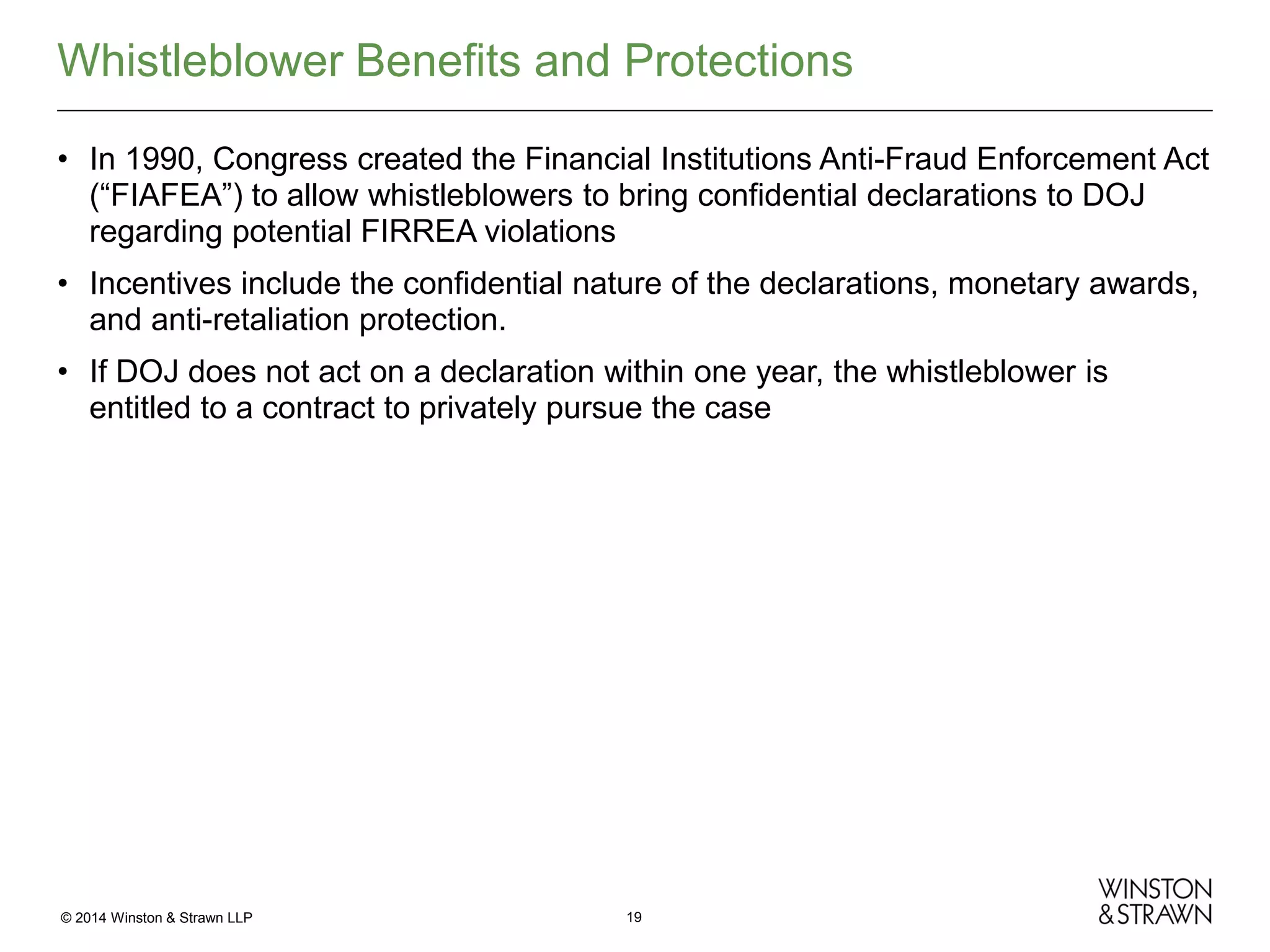
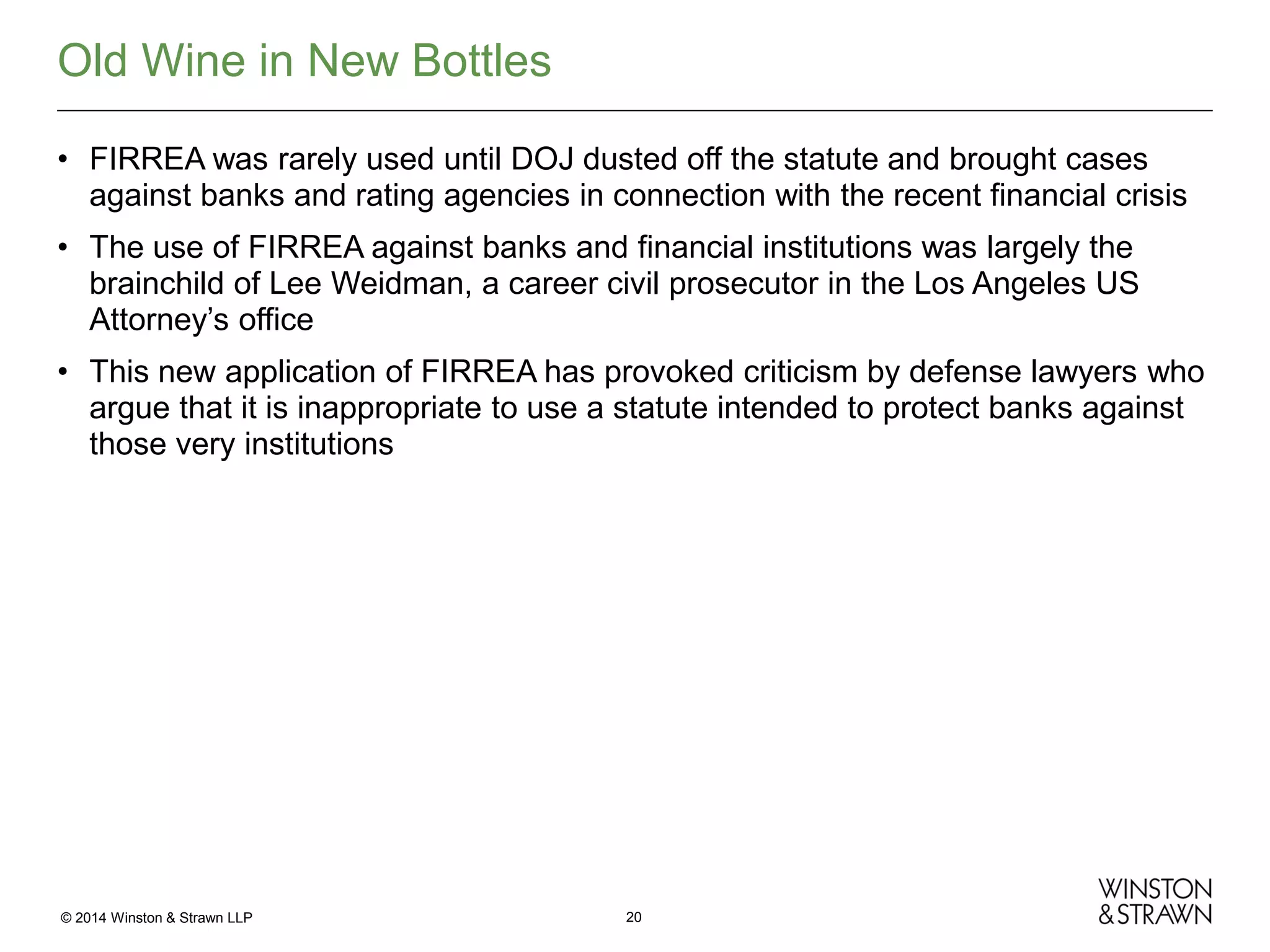
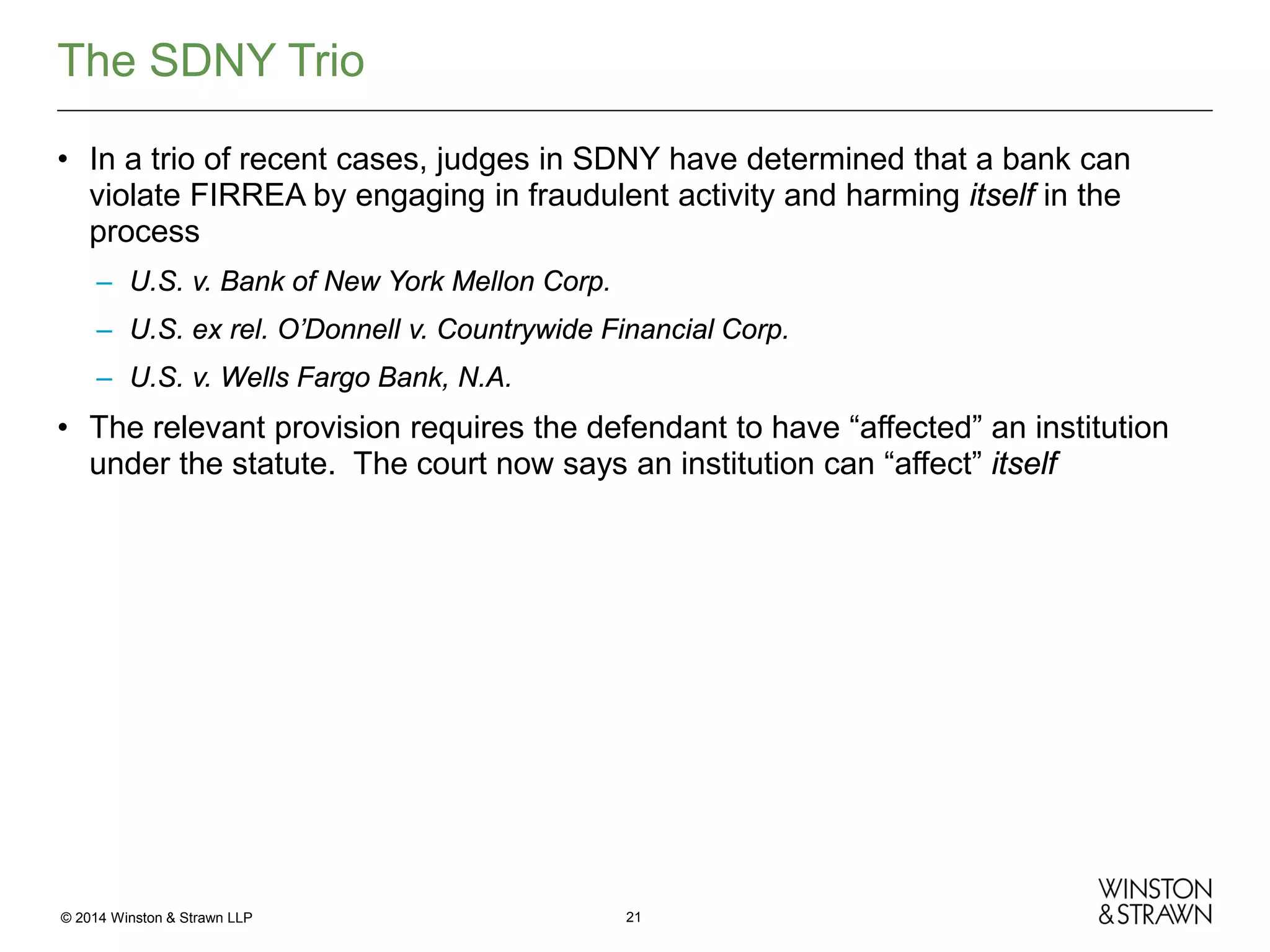
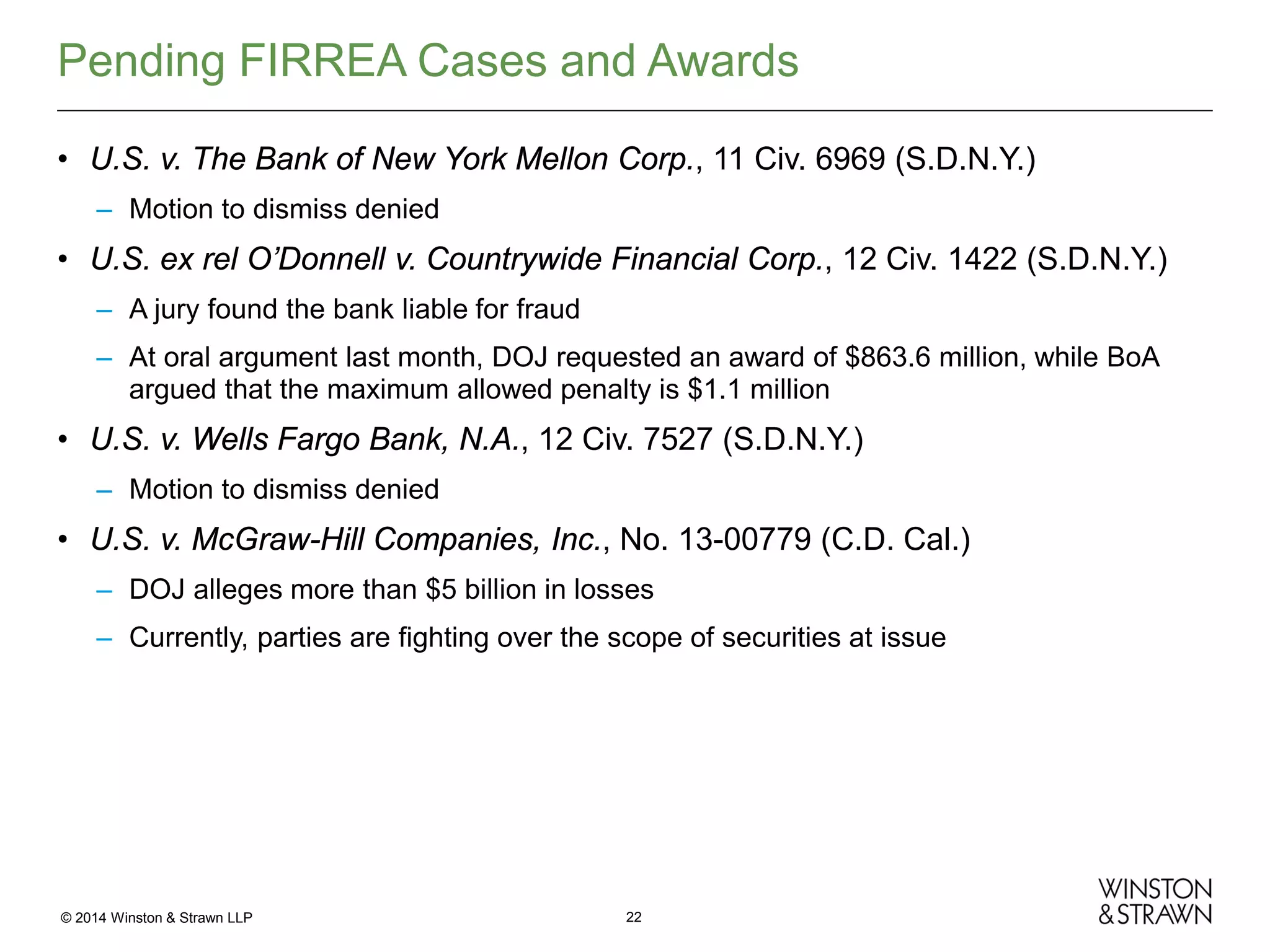
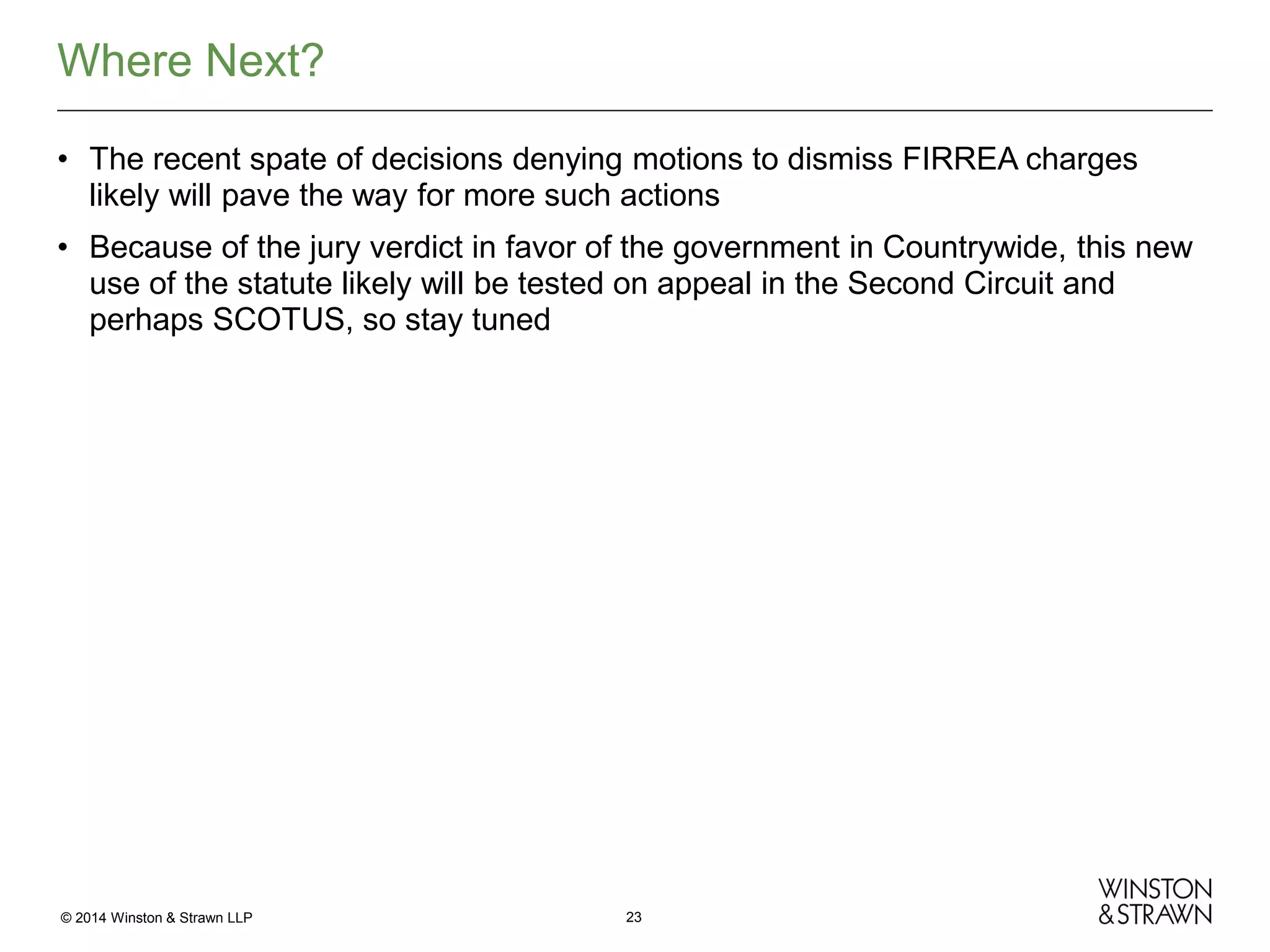
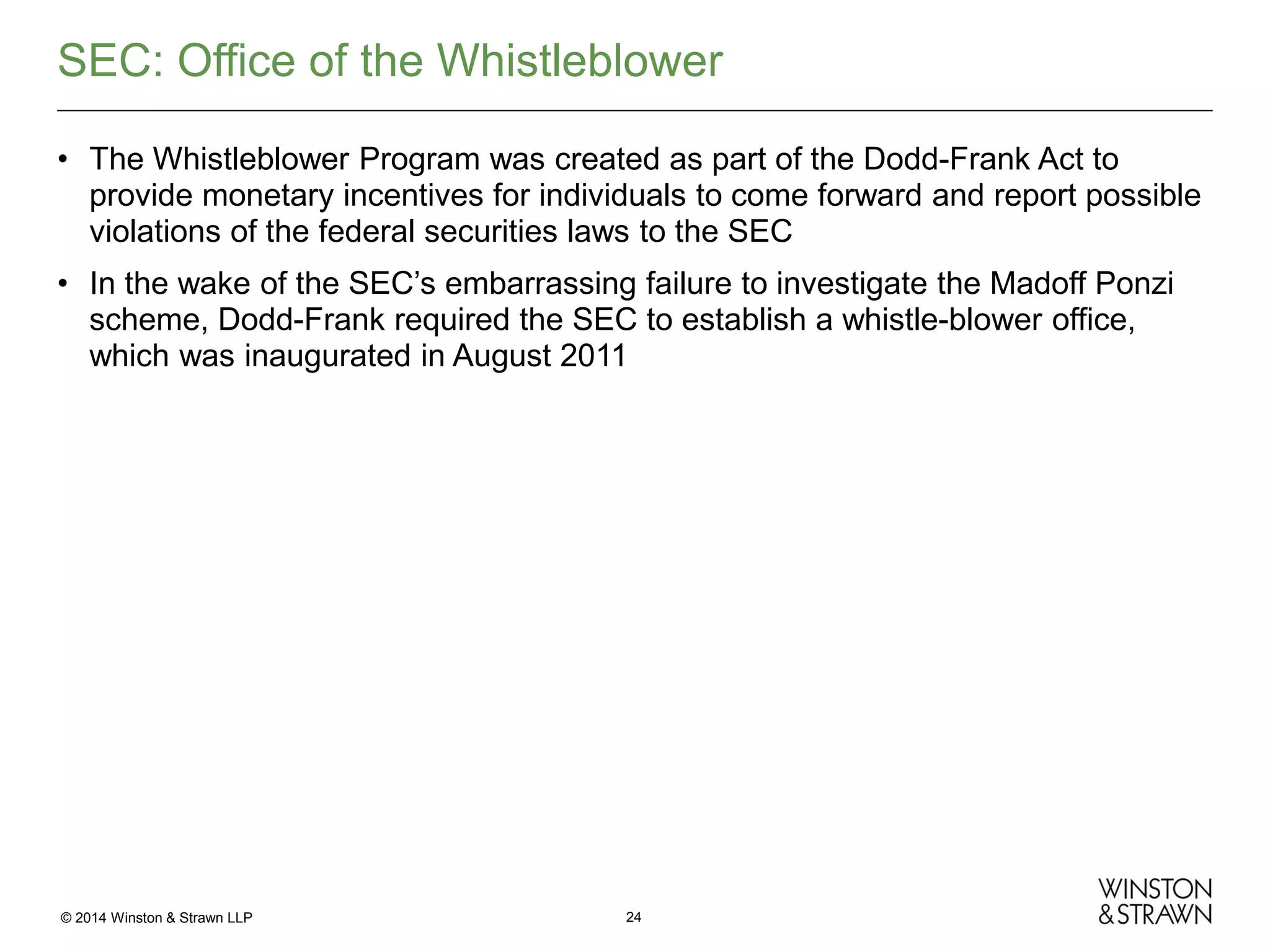
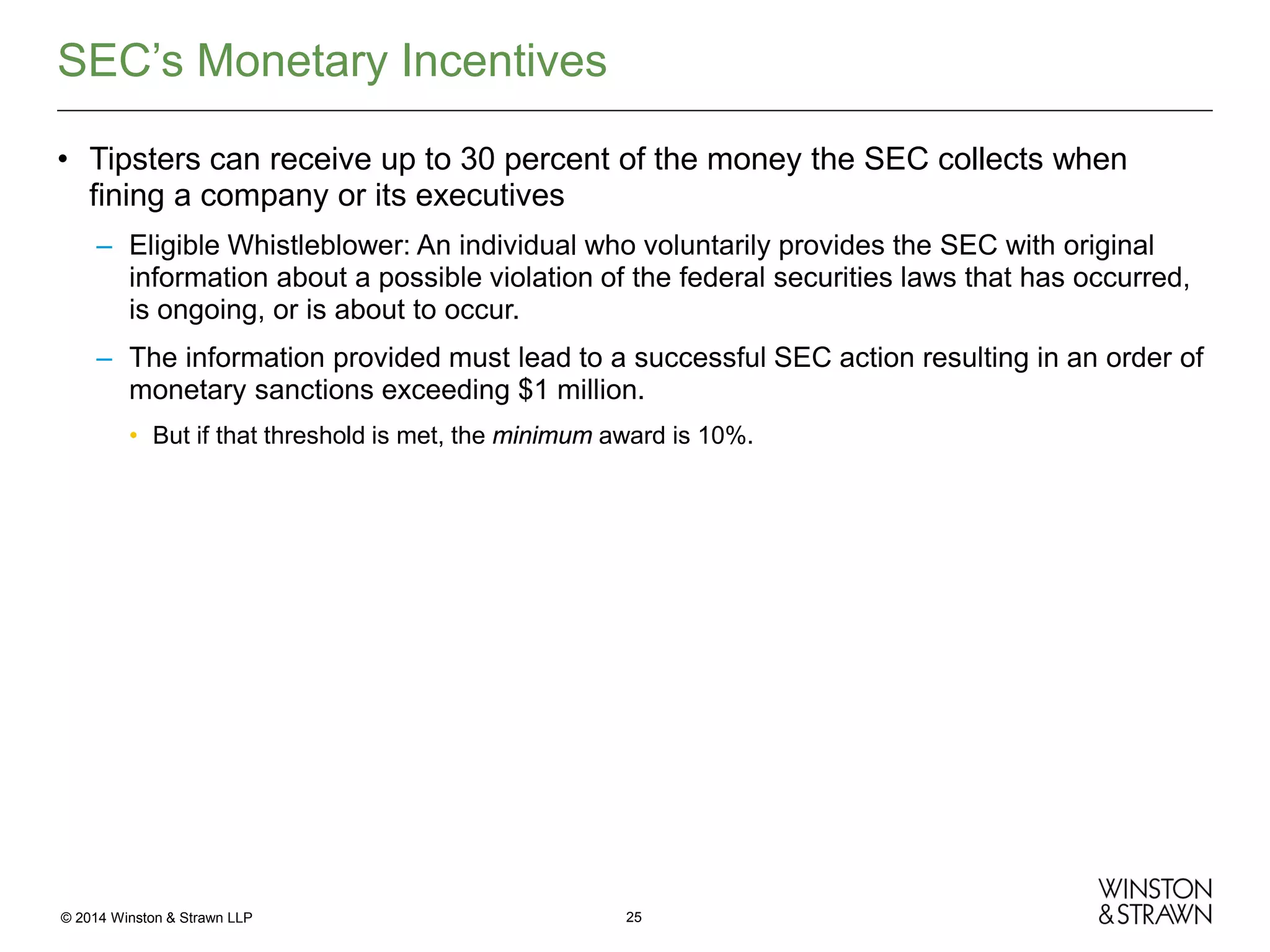

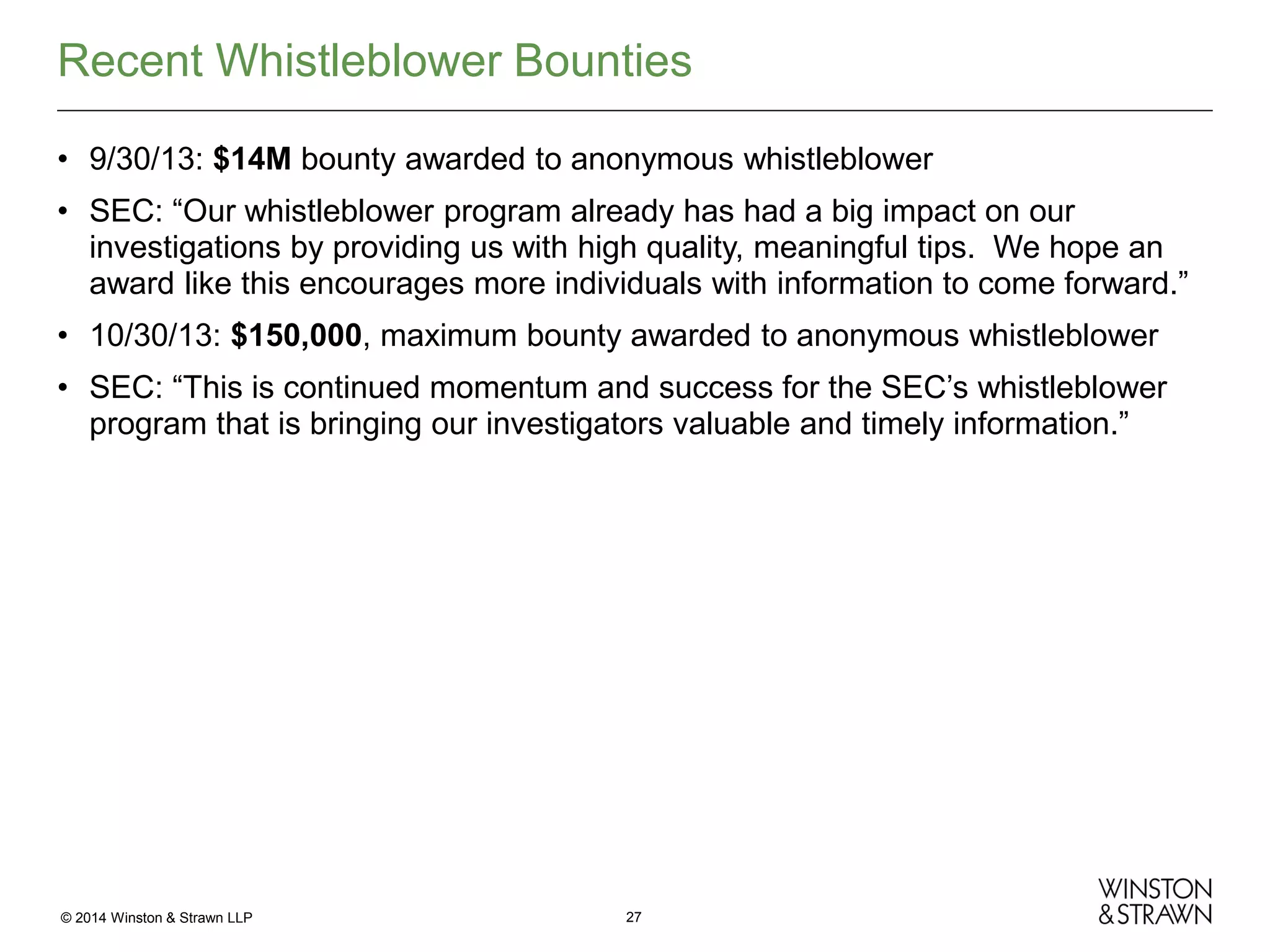

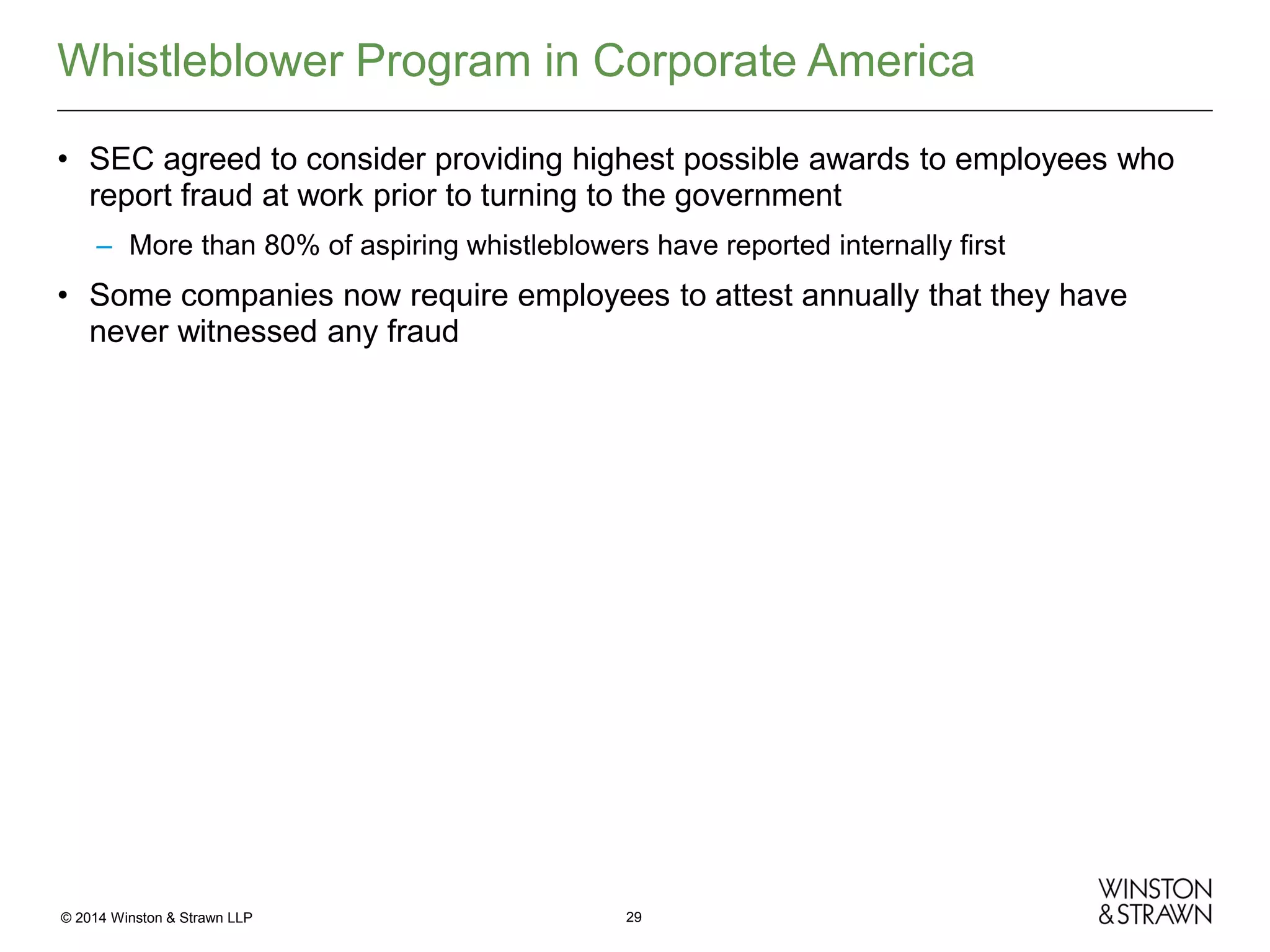
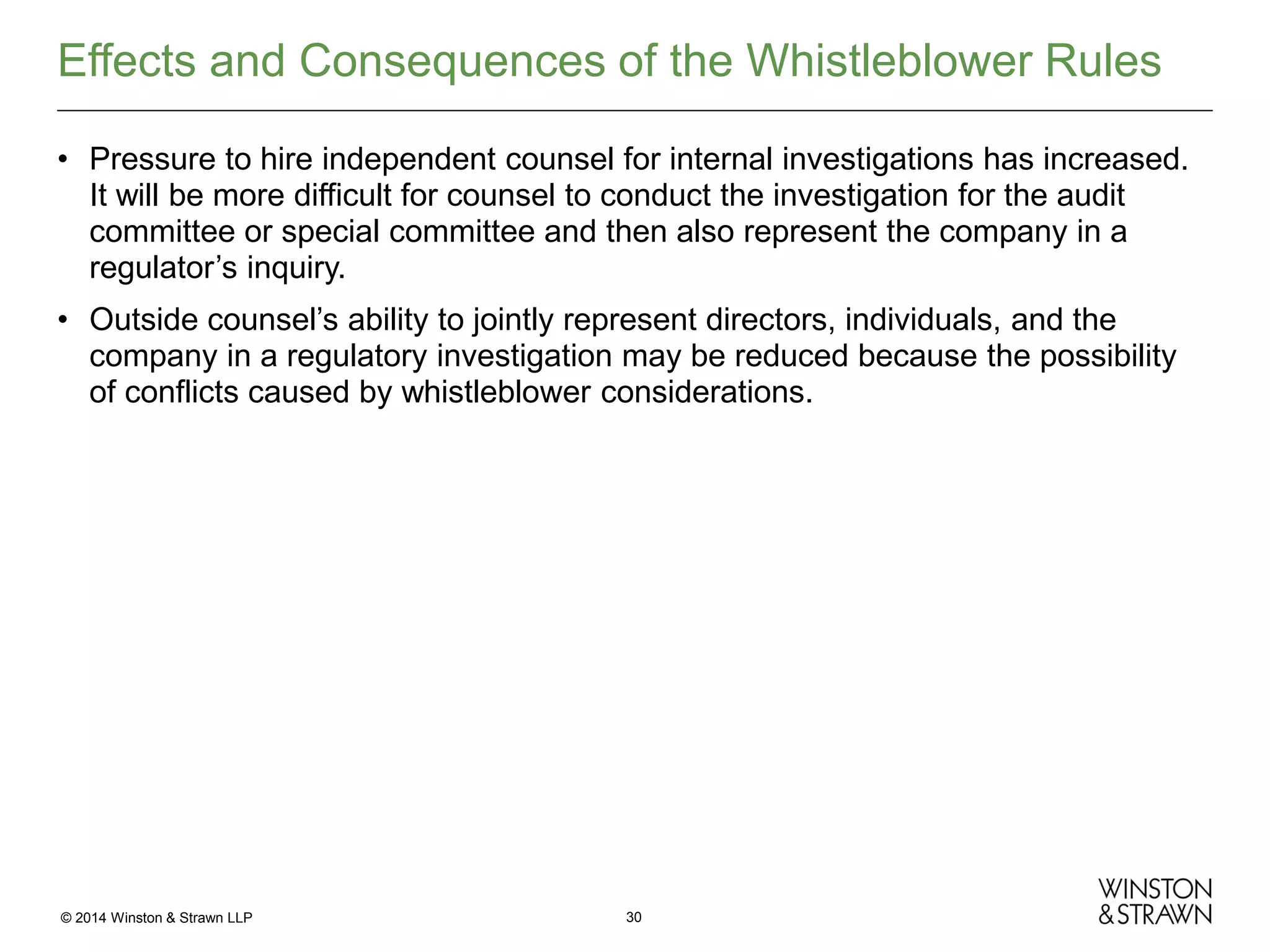
![Anti-Retaliation Protection
• Lesser requirements apply for a whistleblower to be protected by the antiretaliation protections of Dodd-Frank
• Anyone who has a “reasonable belief that the information [they] are providing
relates to a possible securities law violation,” regardless of whether the
information in fact relates to a violation and regardless of whether the individual
is eligible for an award. [SEC Rule 21F-2]
– Creates strong incentives for employees who think their jobs may be in jeopardy to
seek whistleblower status and protection.
© 2014 Winston & Strawn LLP
31](https://image.slidesharecdn.com/1-15-2014howdodirectorspreparefortheworstfinal-140123164941-phpapp01/75/Forum-for-Financial-Institution-Directors-How-Do-Directors-Prepare-for-the-Worst-31-2048.jpg)
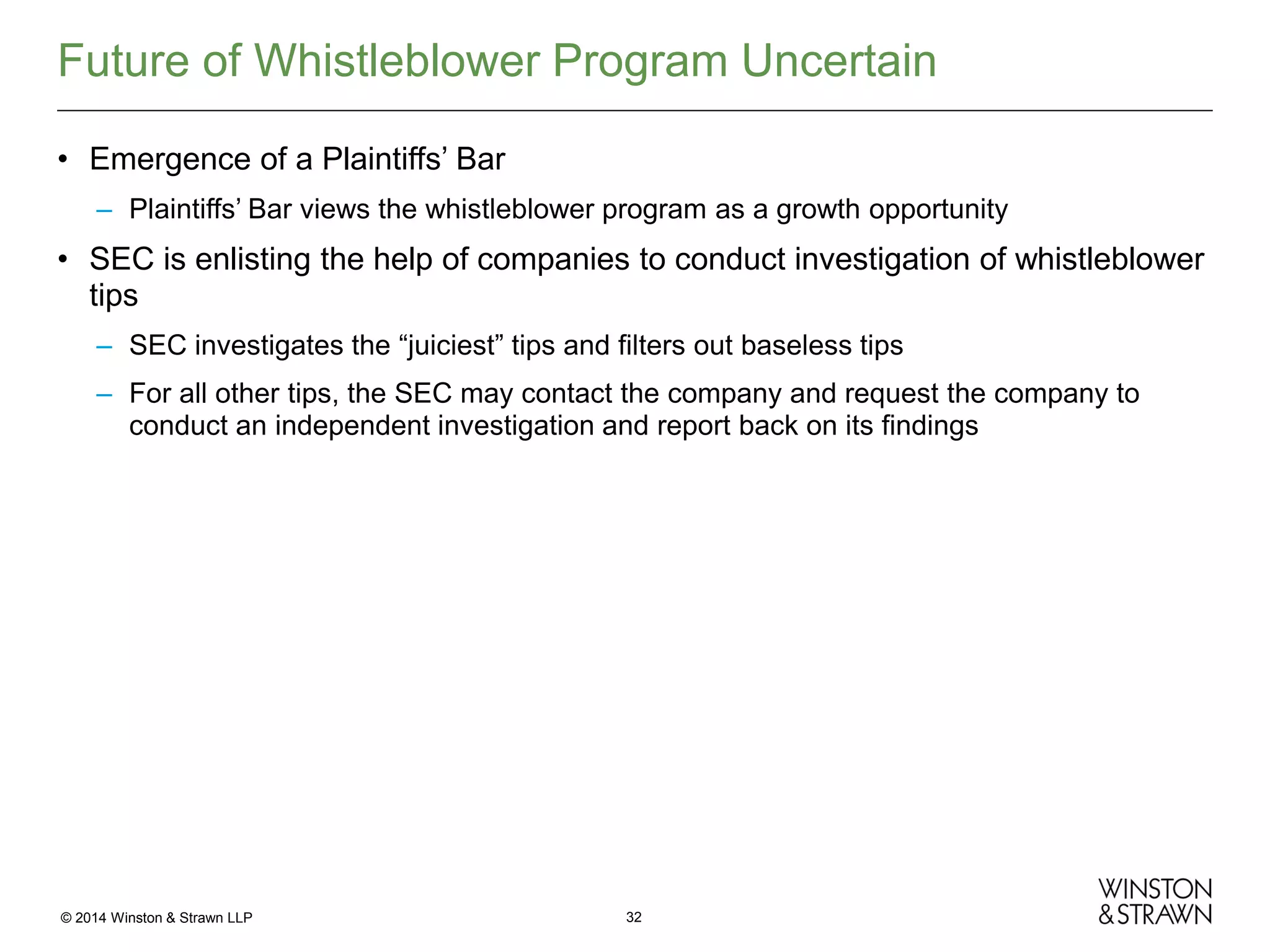


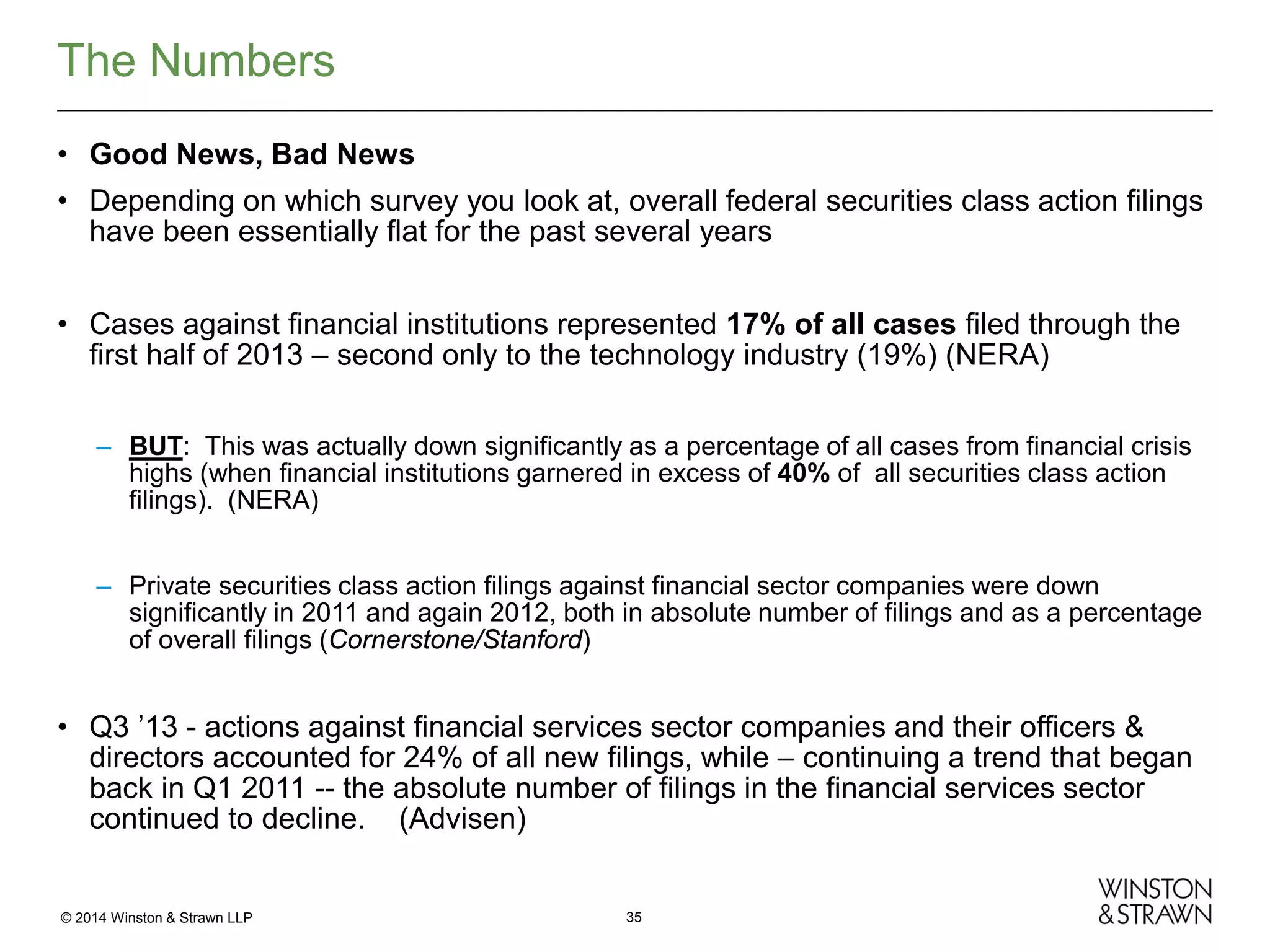
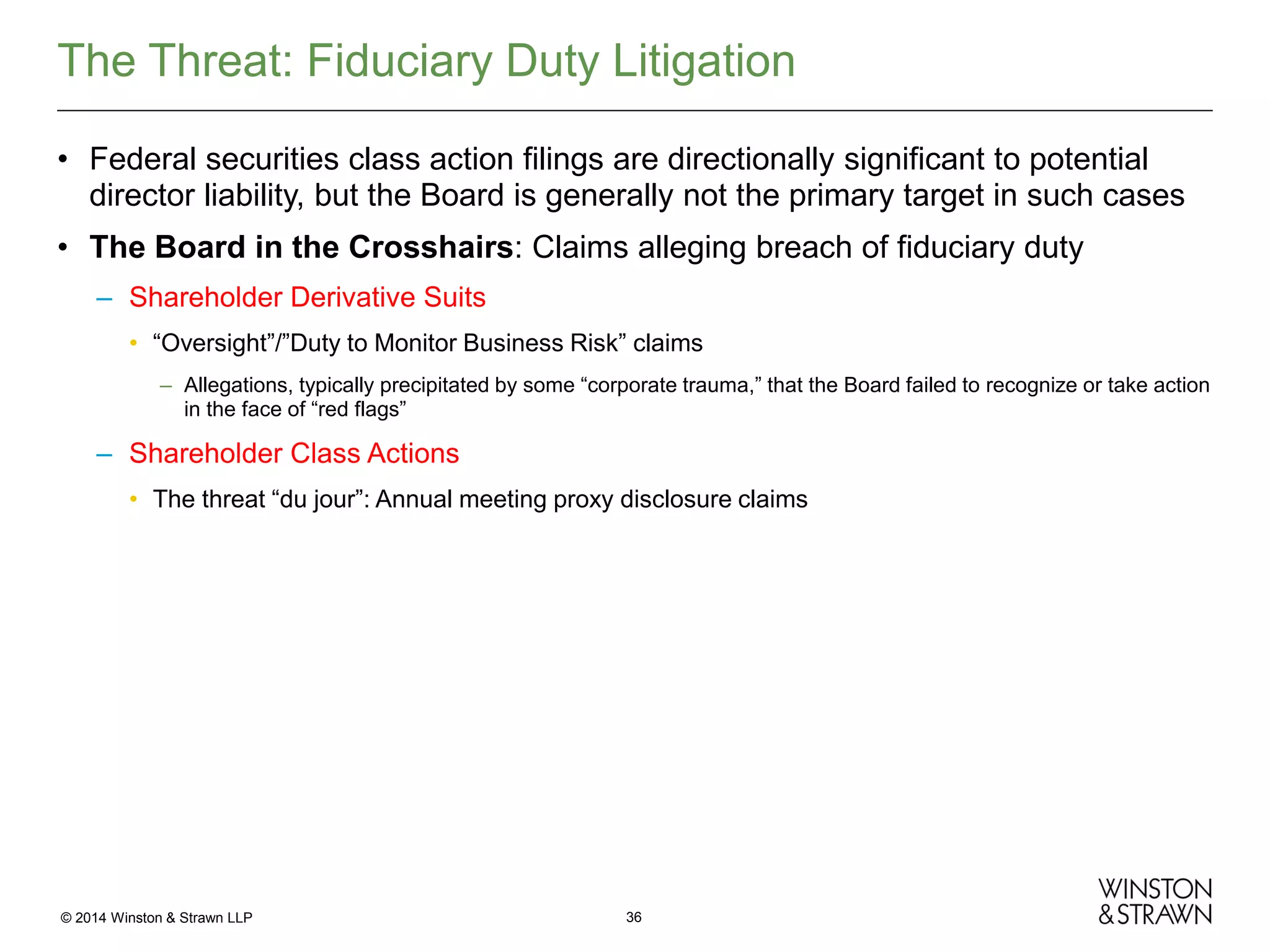
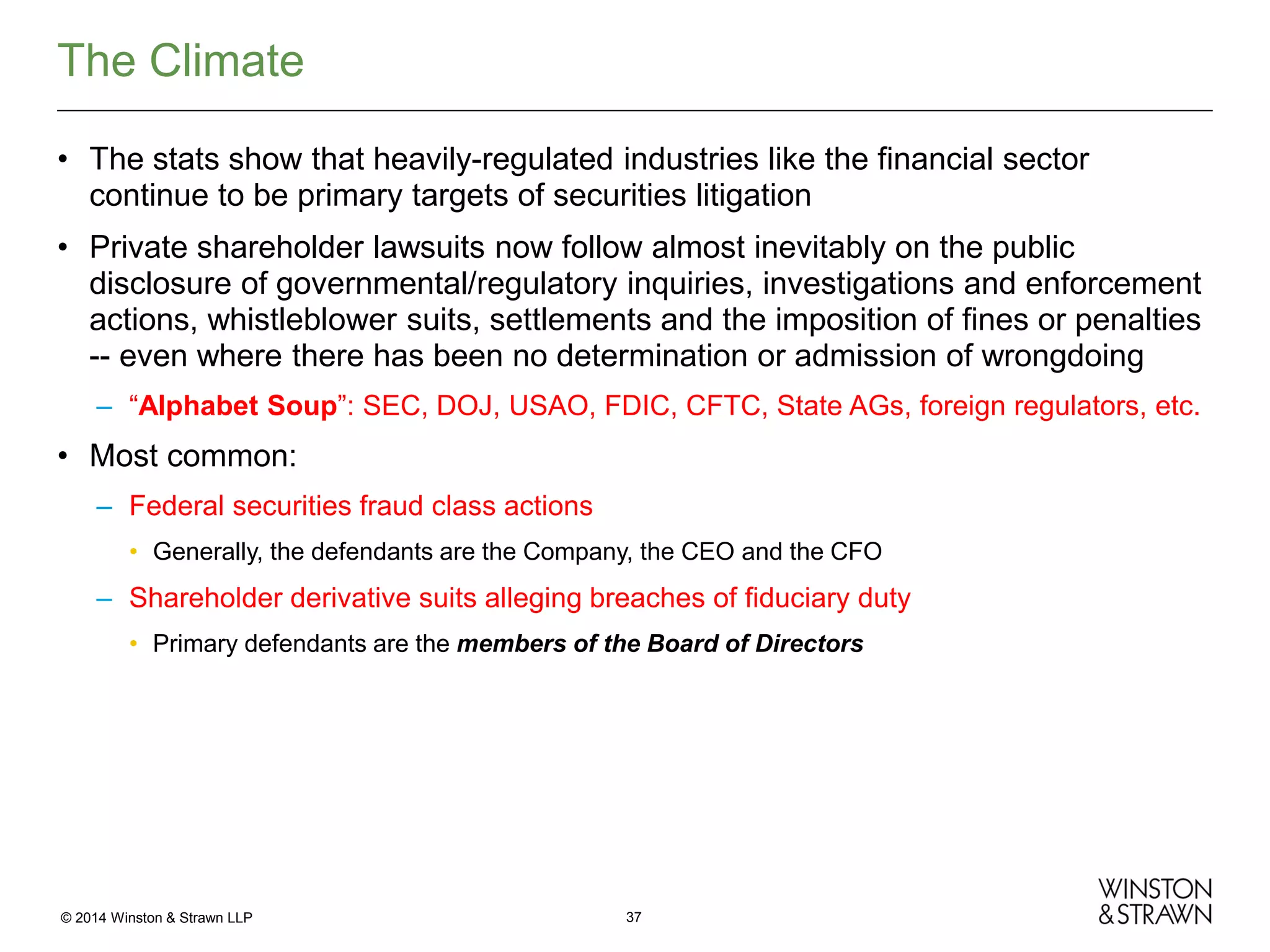
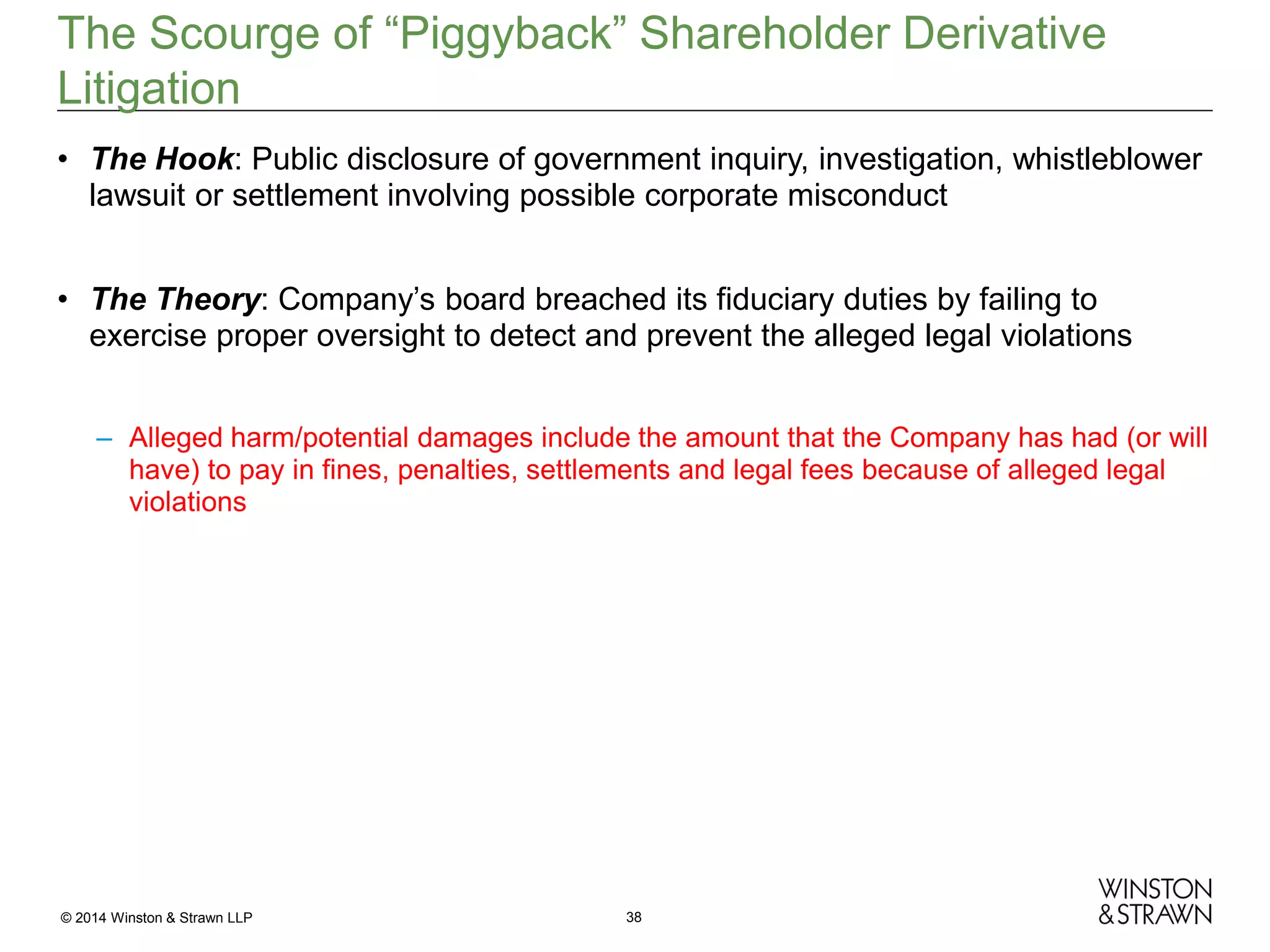
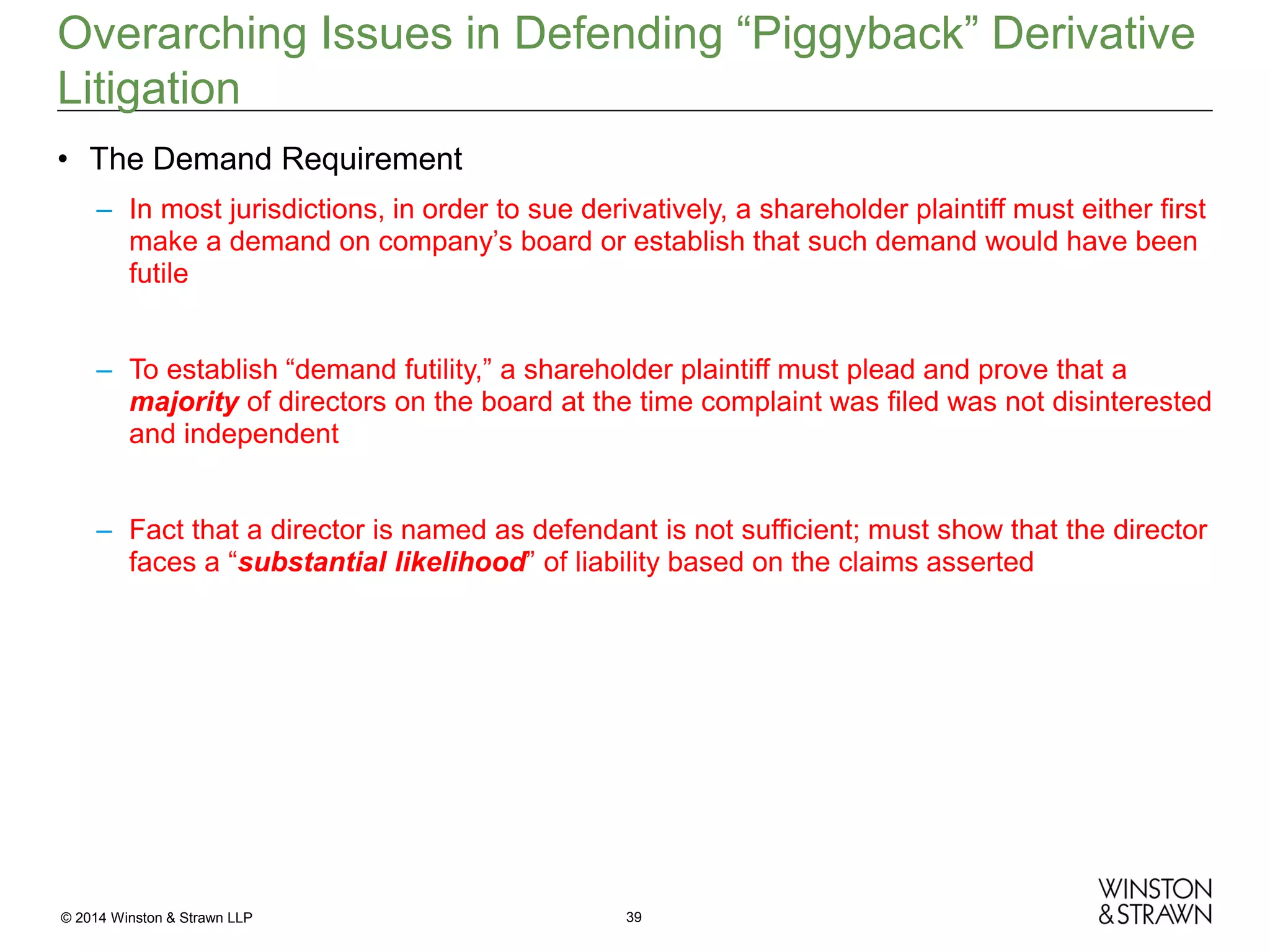
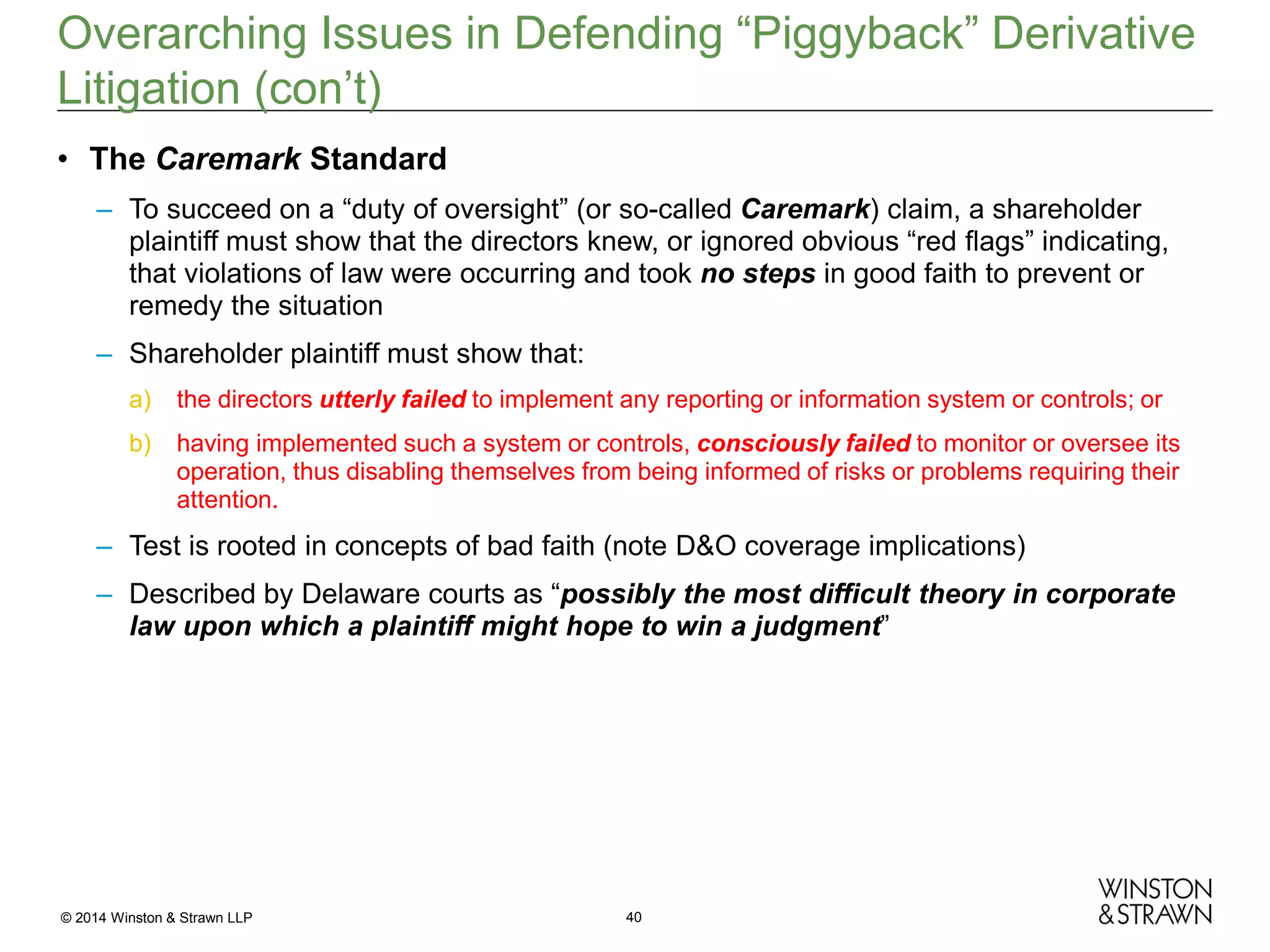
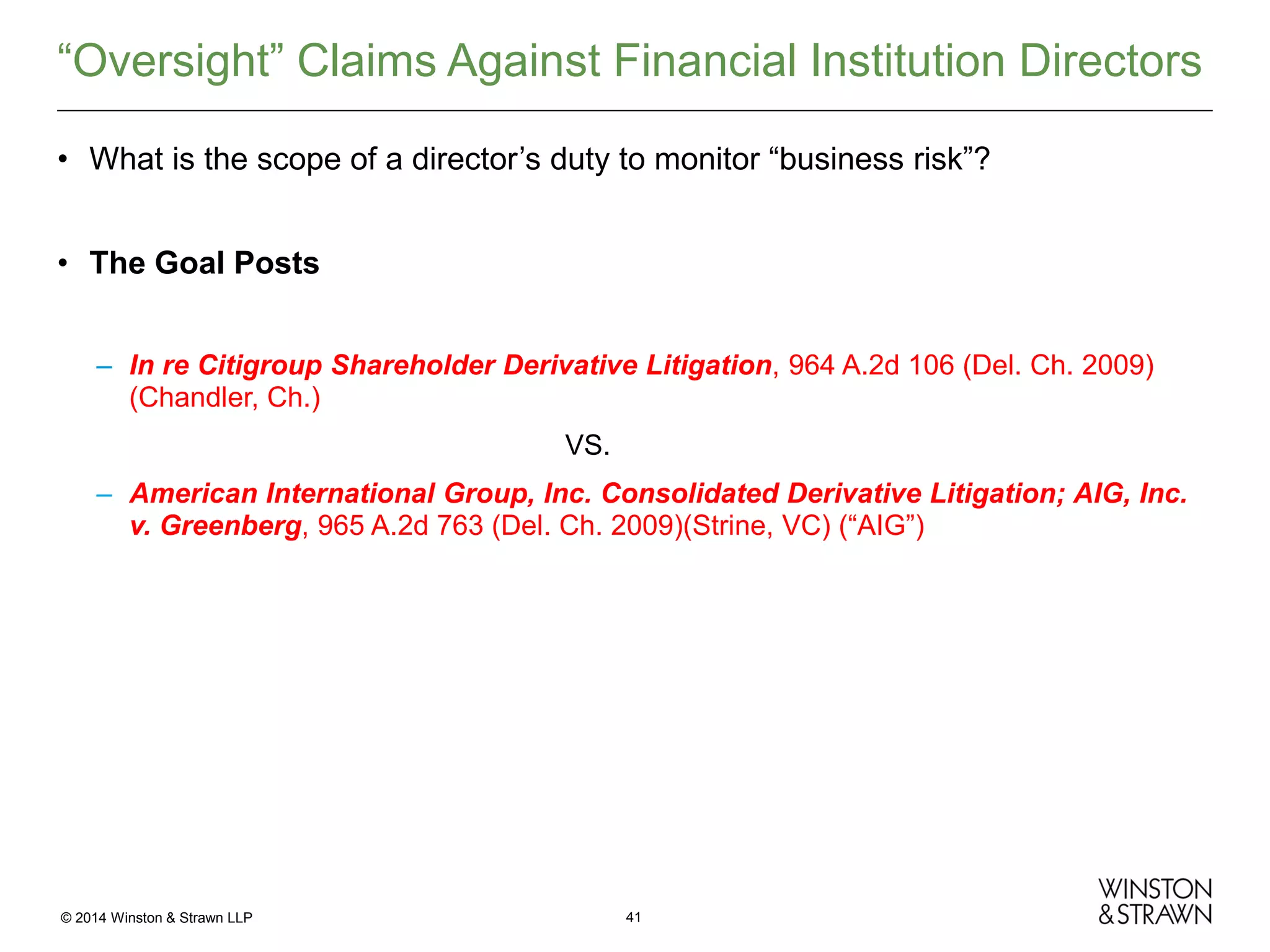
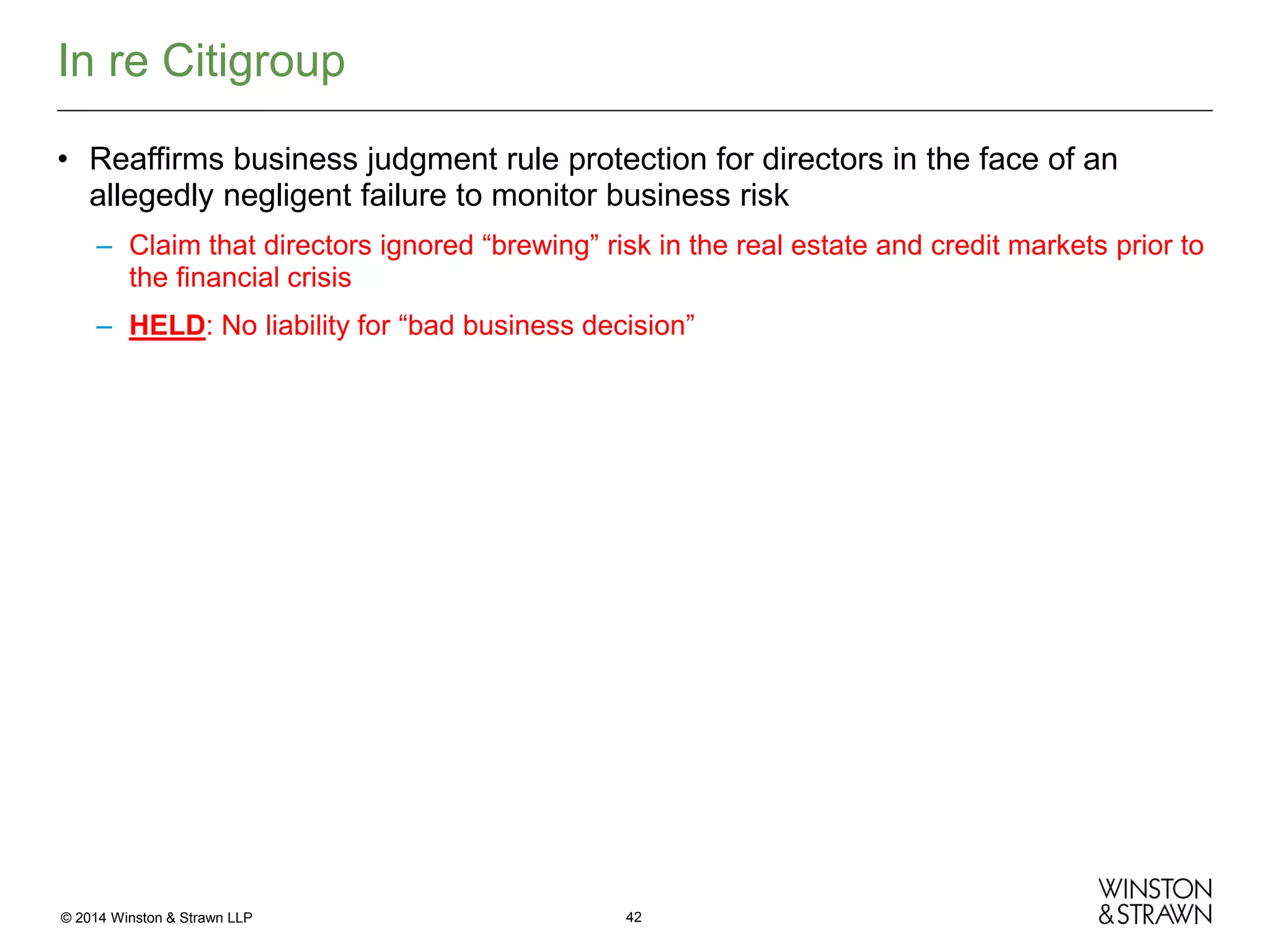

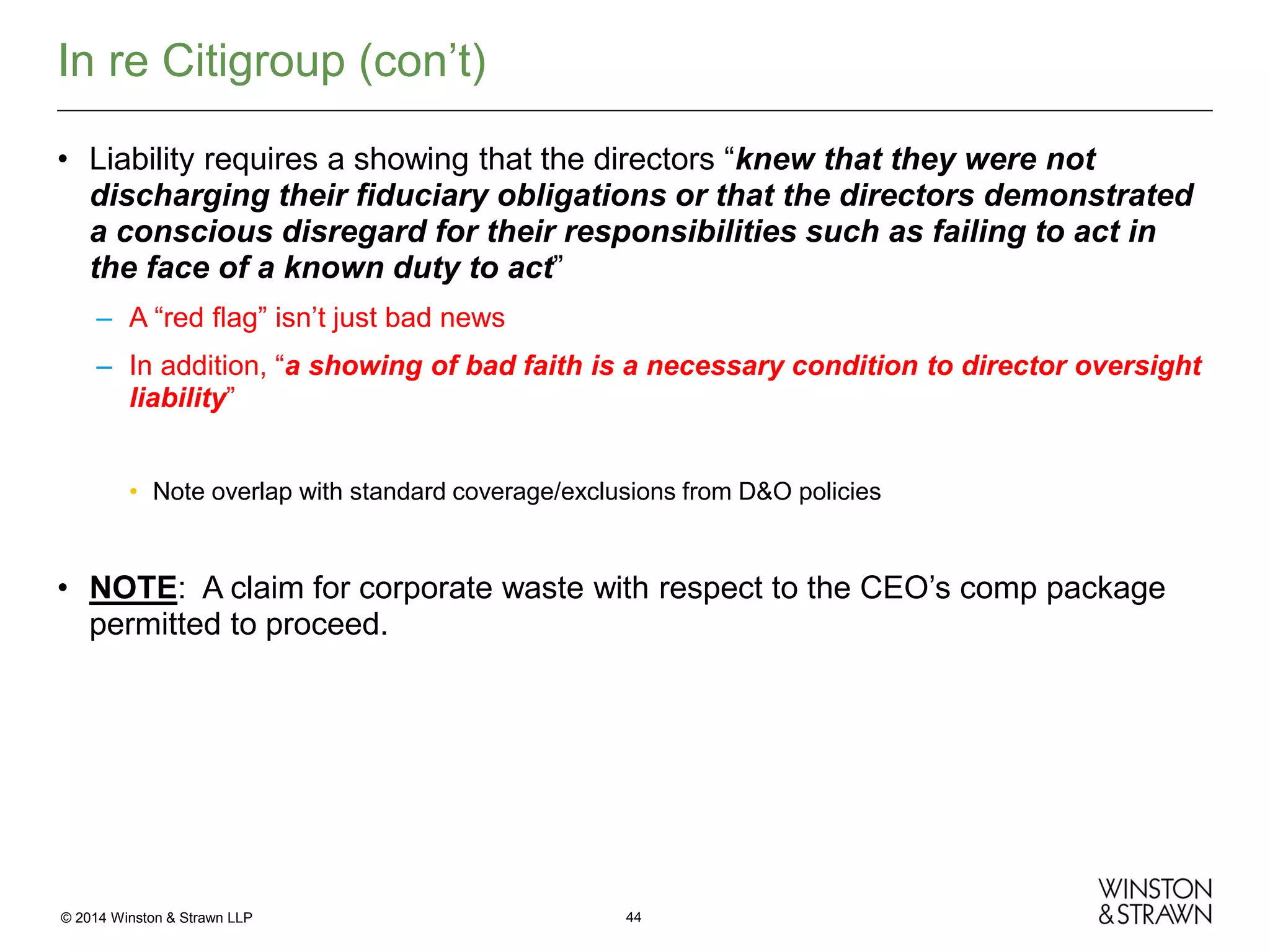
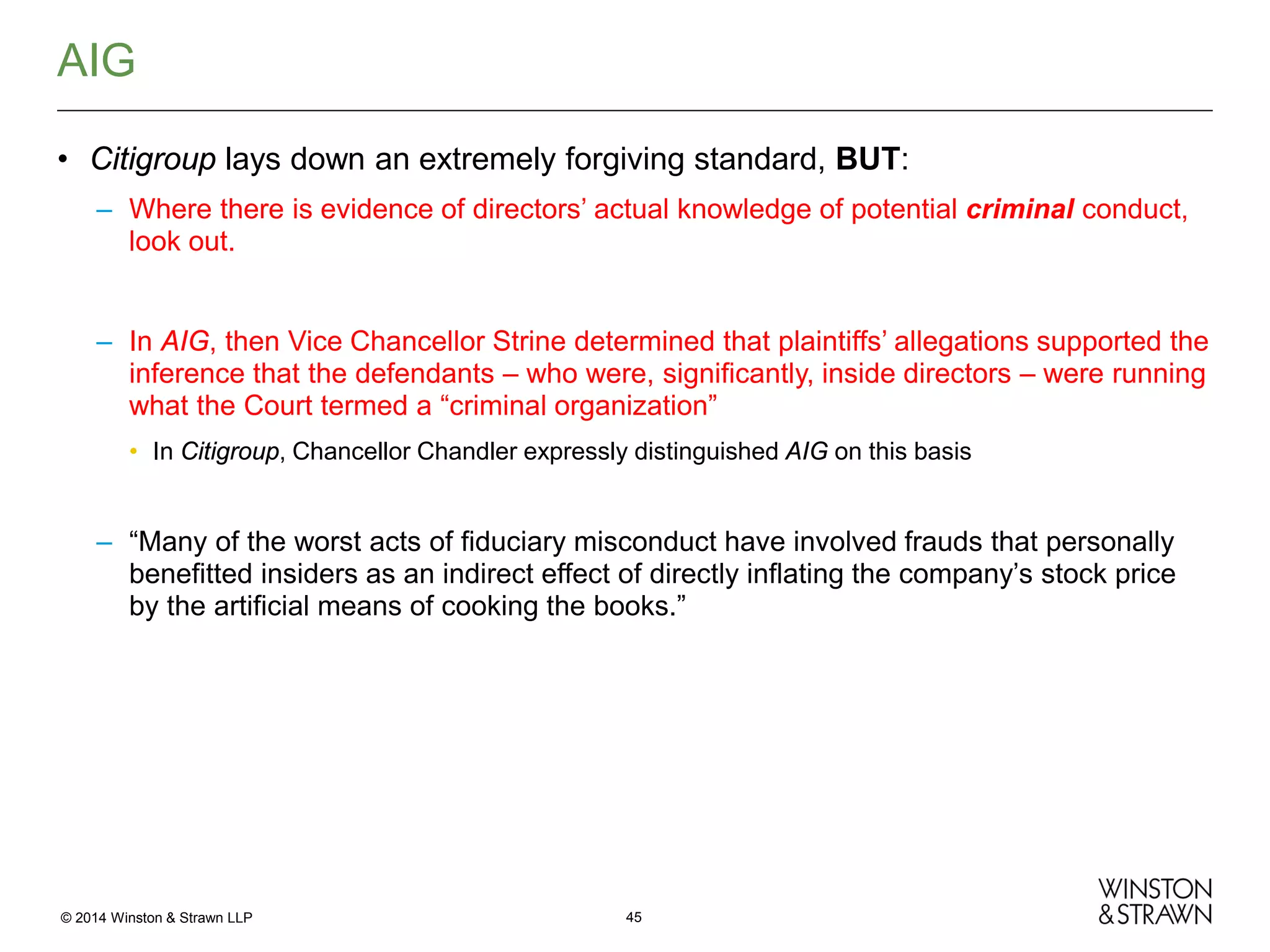
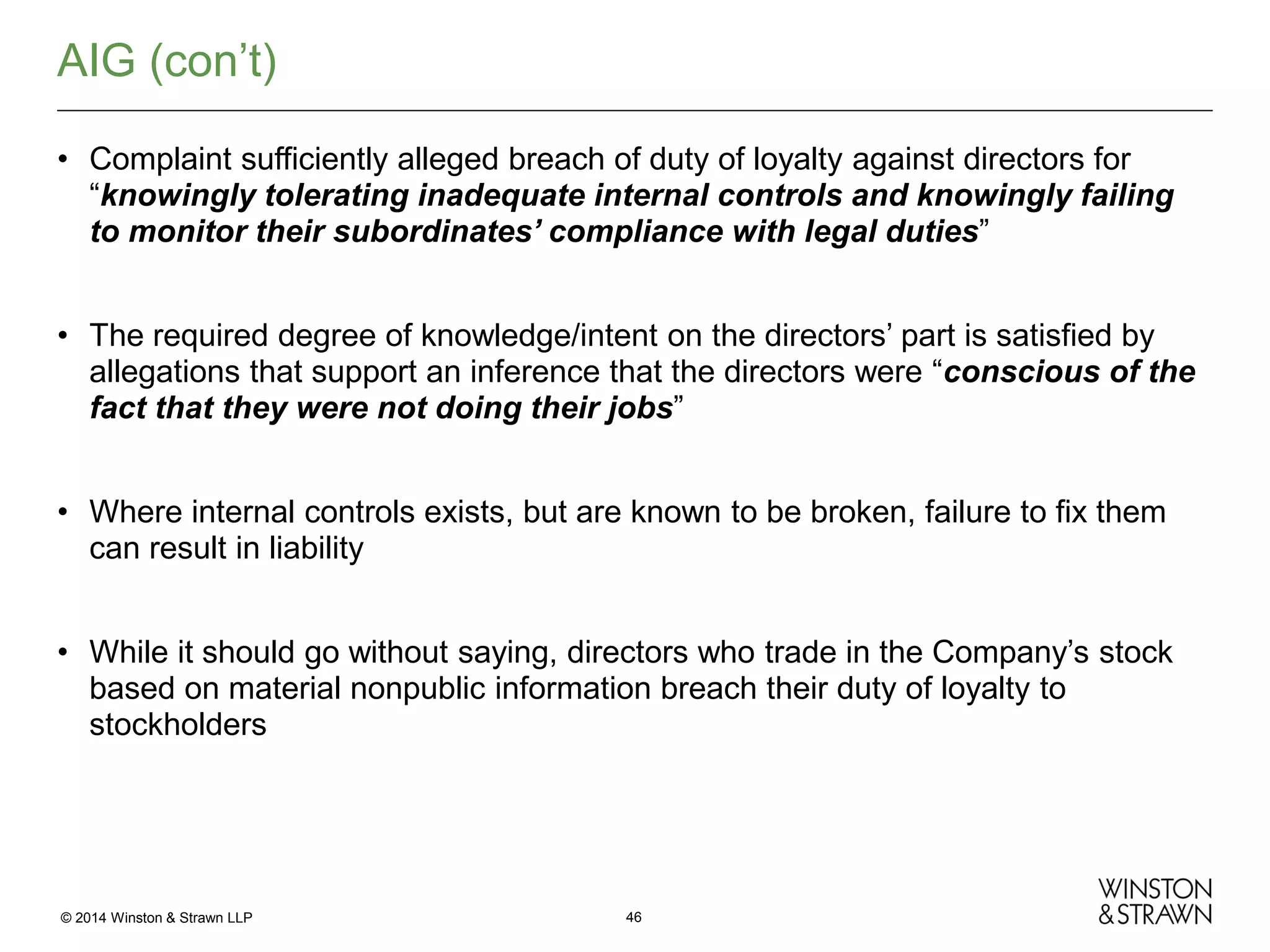
![“Progeny”
• EXAMPLE: International Brotherhood v. Kennedy, et al. (Lender Processing
Services, Inc., Derivative Litigation) (Del. Ch. 2012)(Strine, Ch.)
.
– Transcript decision from now Chancellor Strine
– Counterpoint to AIG
– Citigroup is the guiding light
– Specific factual allegations of director knowledge of illegal/improper conduct, and the
specific role of the board, are necessary.
• Allegations establishing individual director knowledge of “red flags” needed
– Facts suggesting board took action to address/remediate the problem “when the
smoke [was] really in the room” will undercut a claim
© 2014 Winston & Strawn LLP
47](https://image.slidesharecdn.com/1-15-2014howdodirectorspreparefortheworstfinal-140123164941-phpapp01/75/Forum-for-Financial-Institution-Directors-How-Do-Directors-Prepare-for-the-Worst-47-2048.jpg)
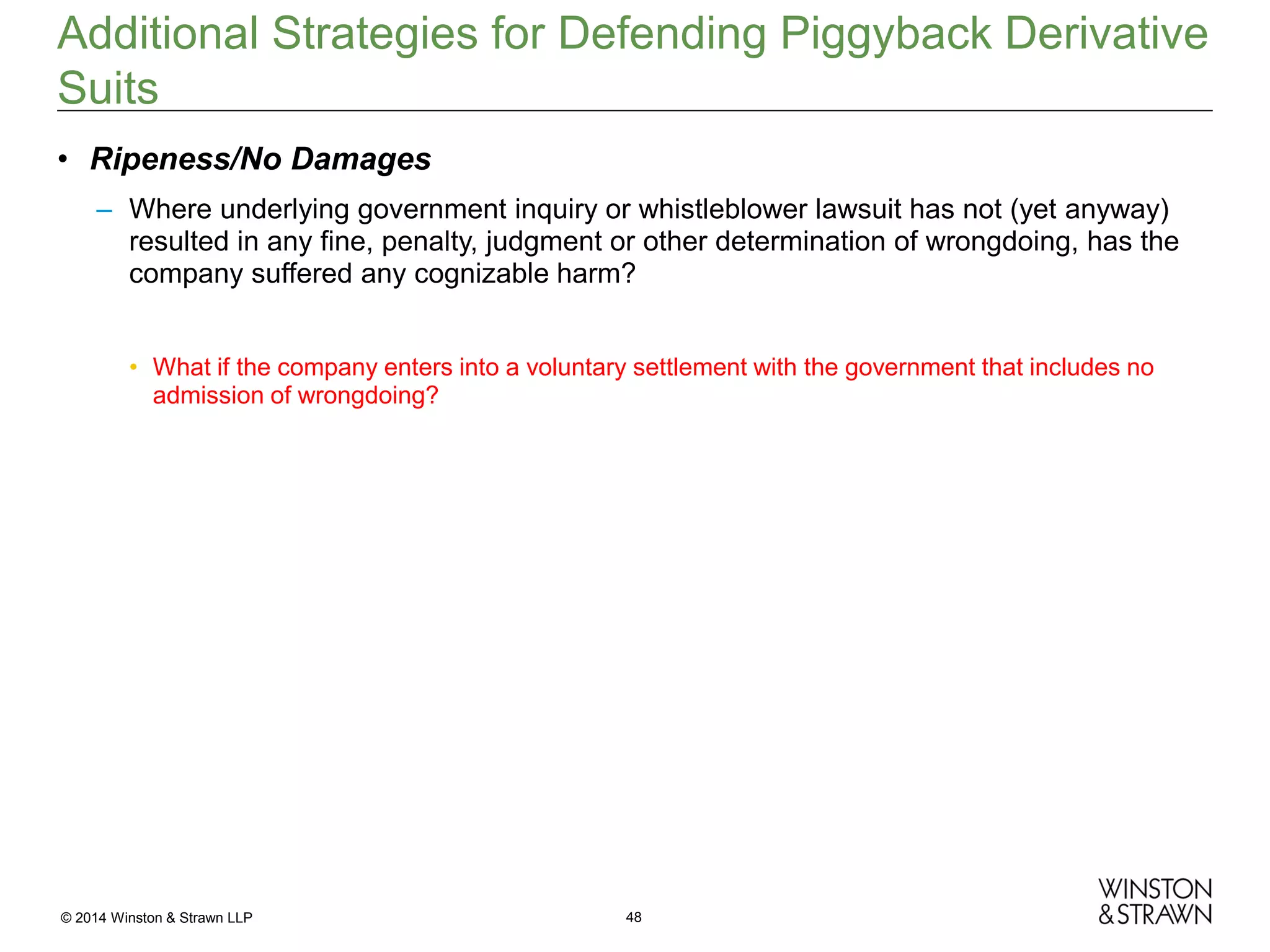

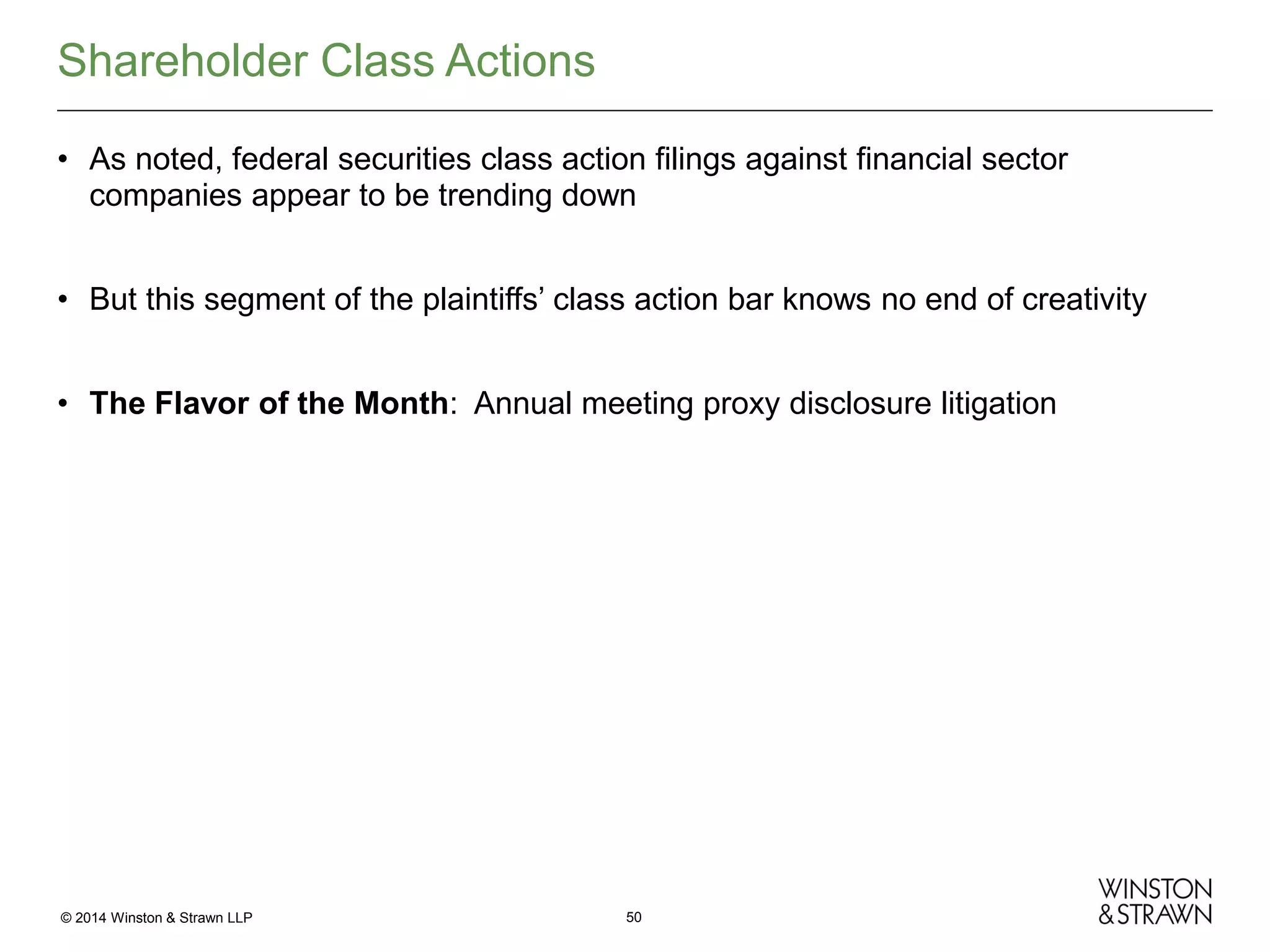
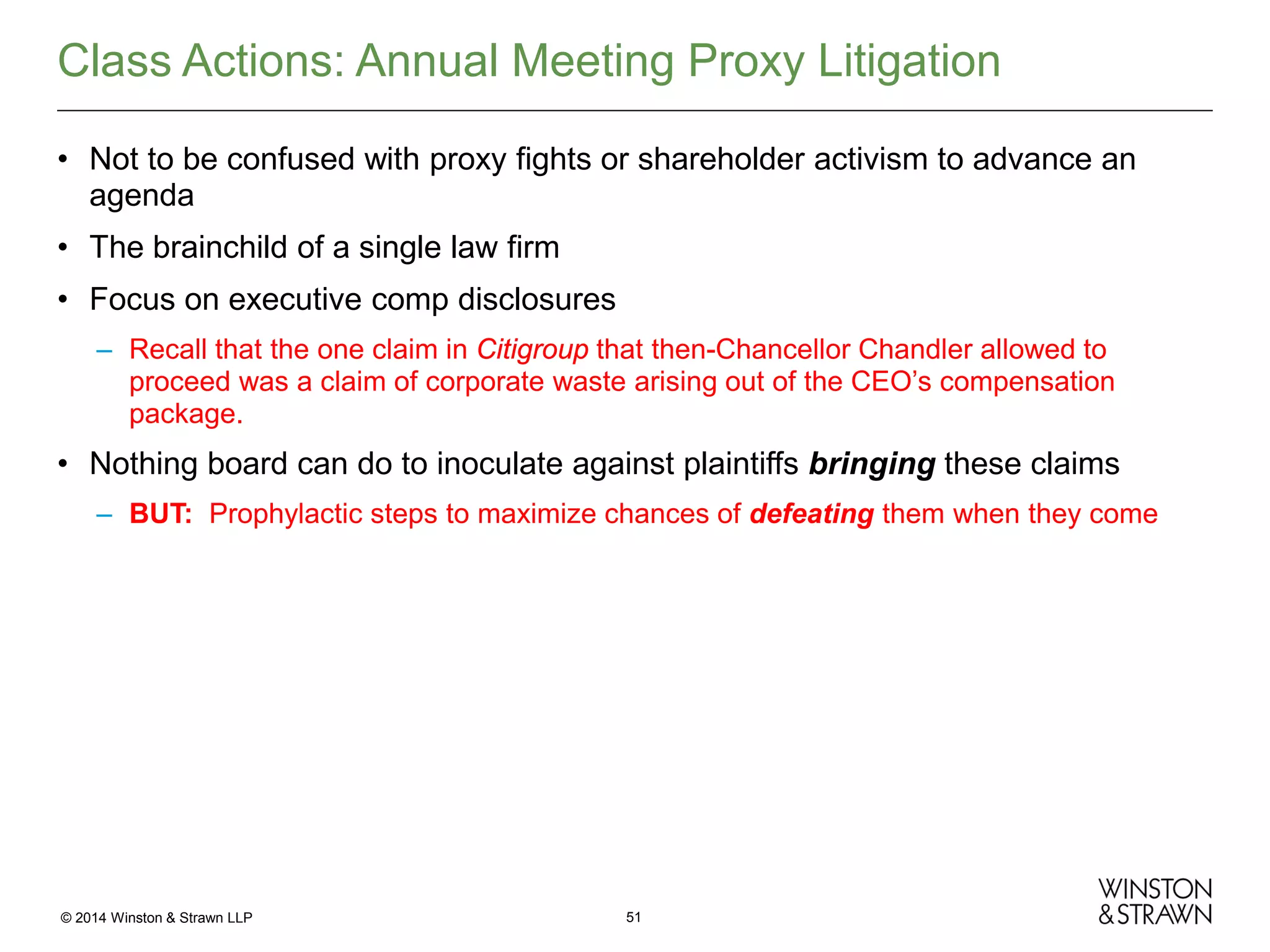
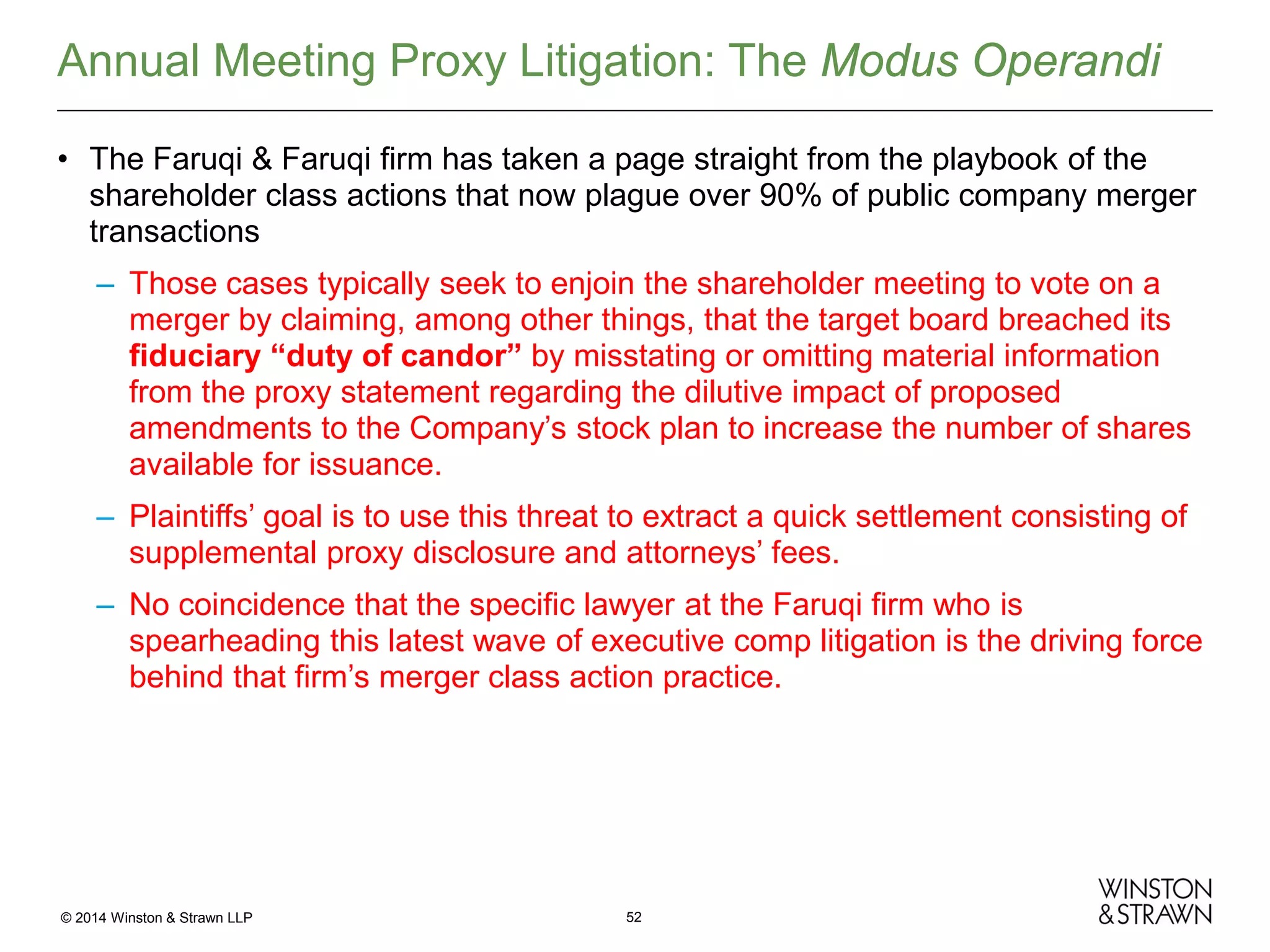
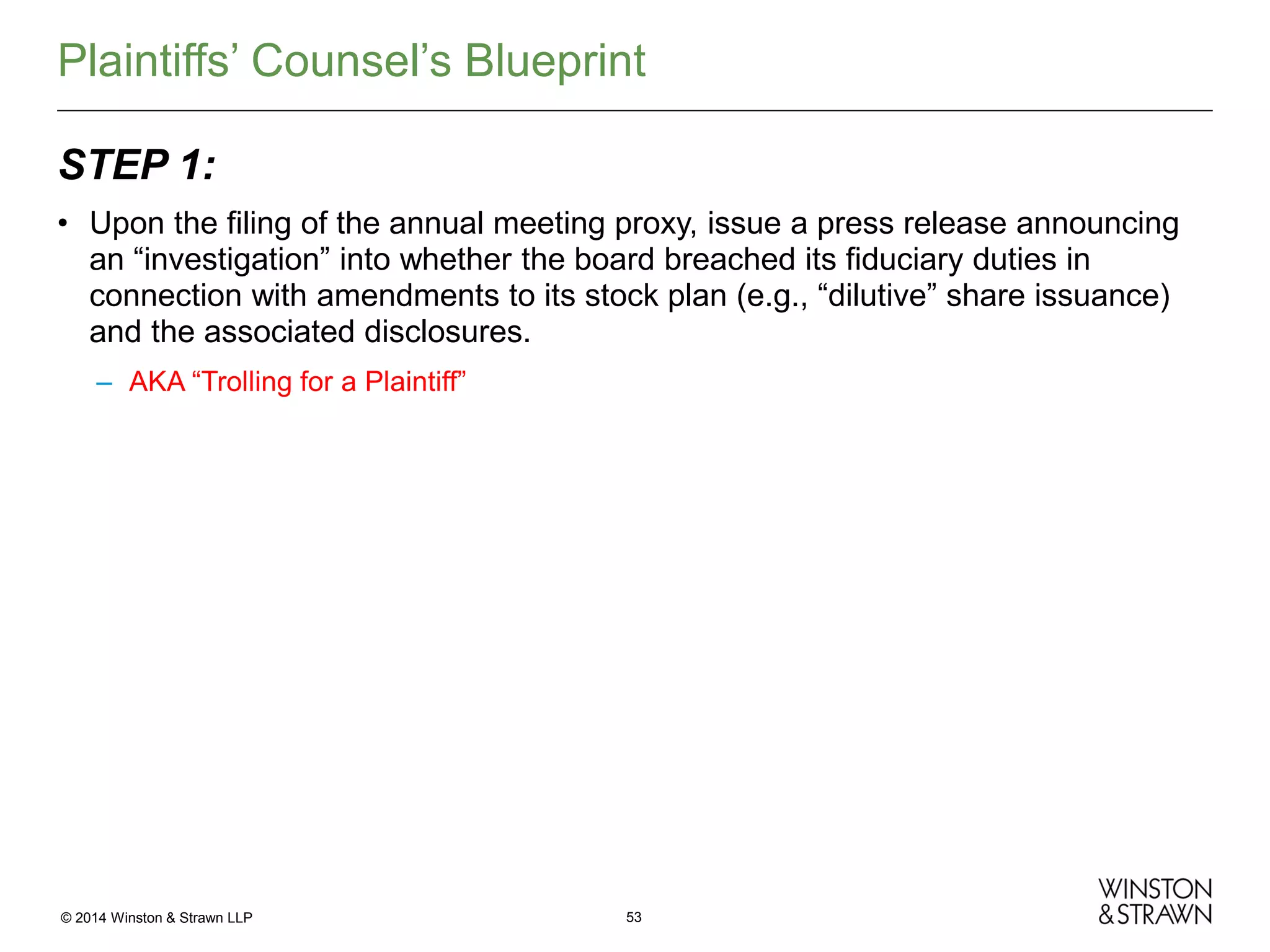
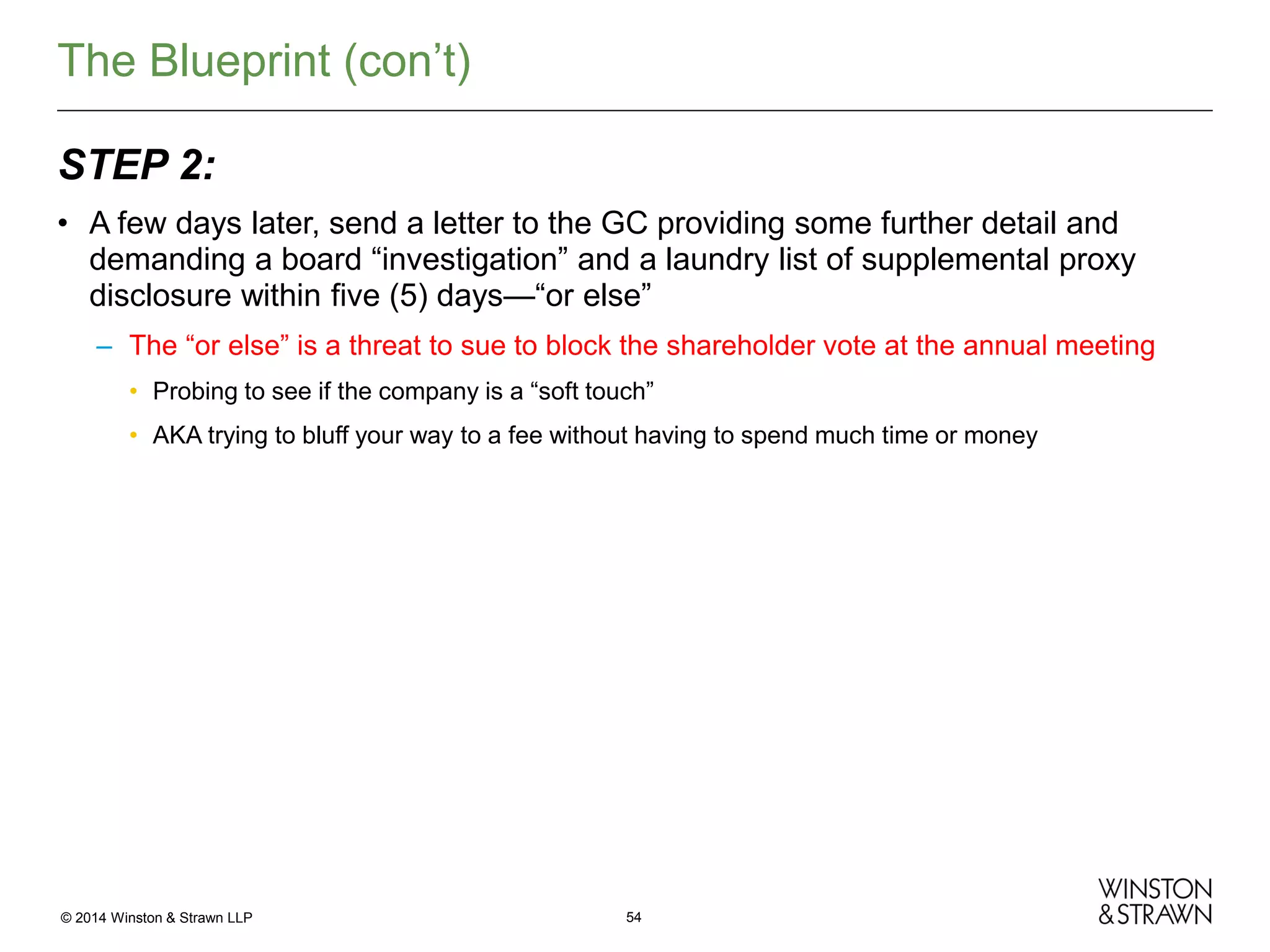
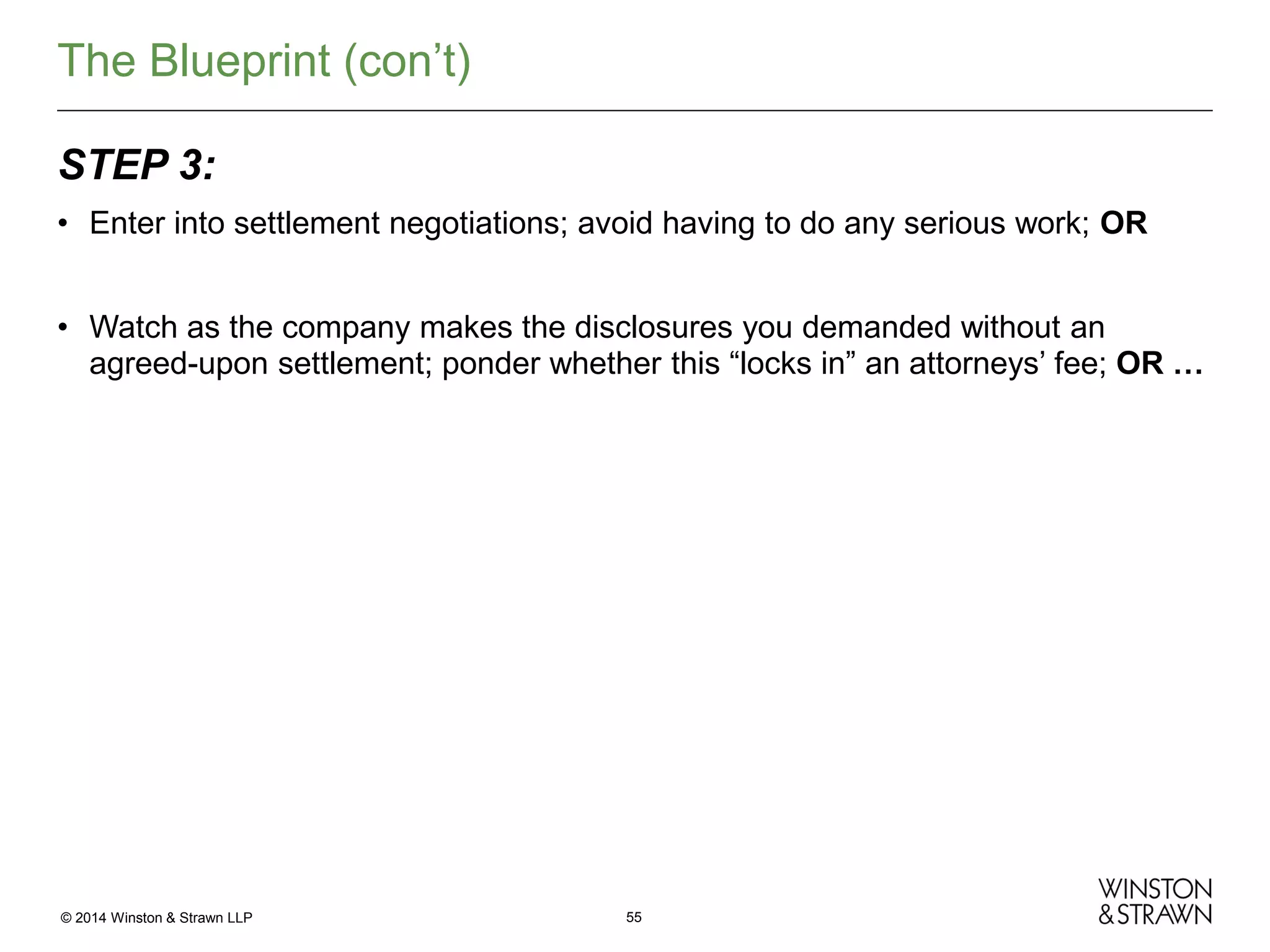
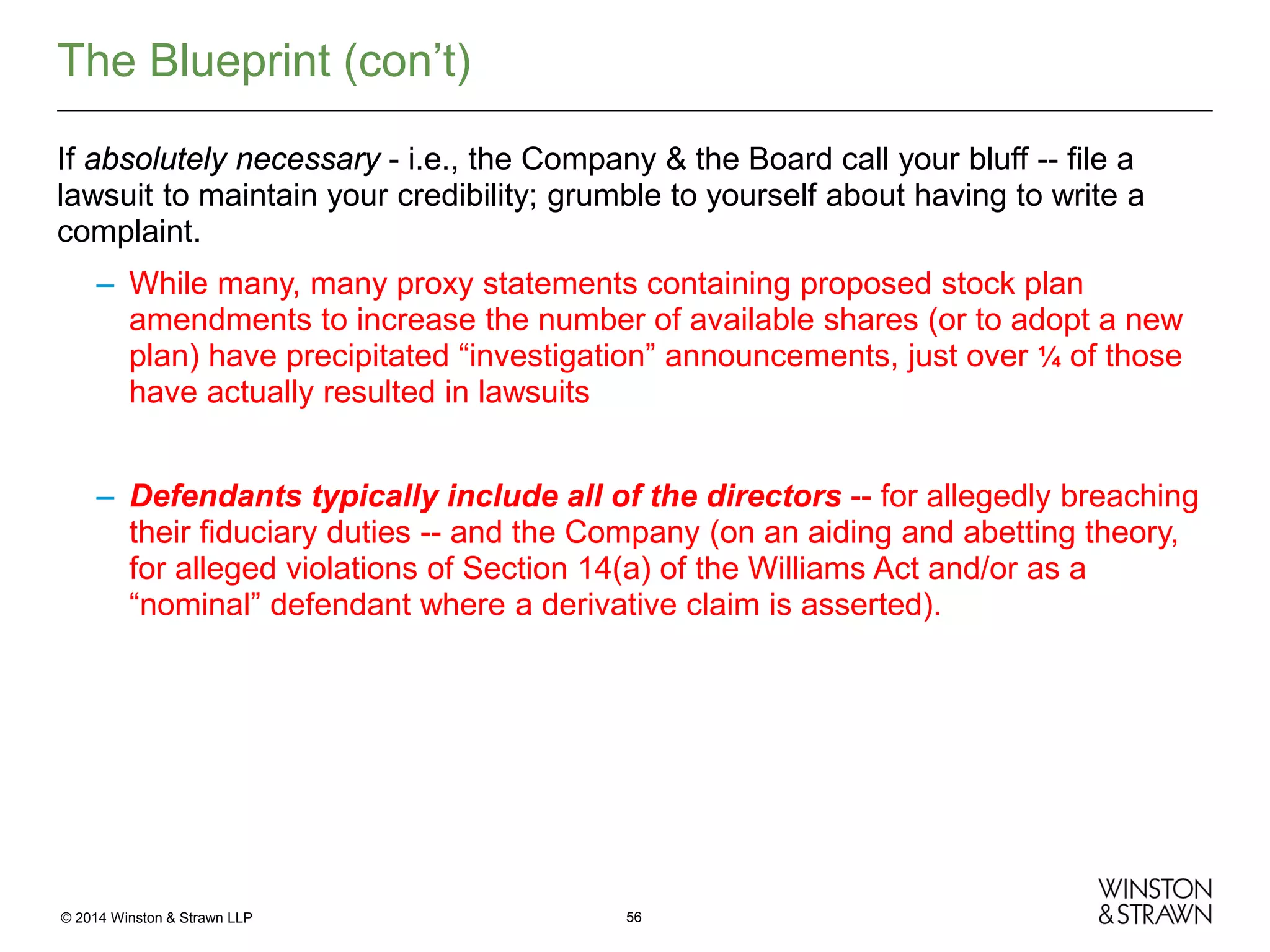
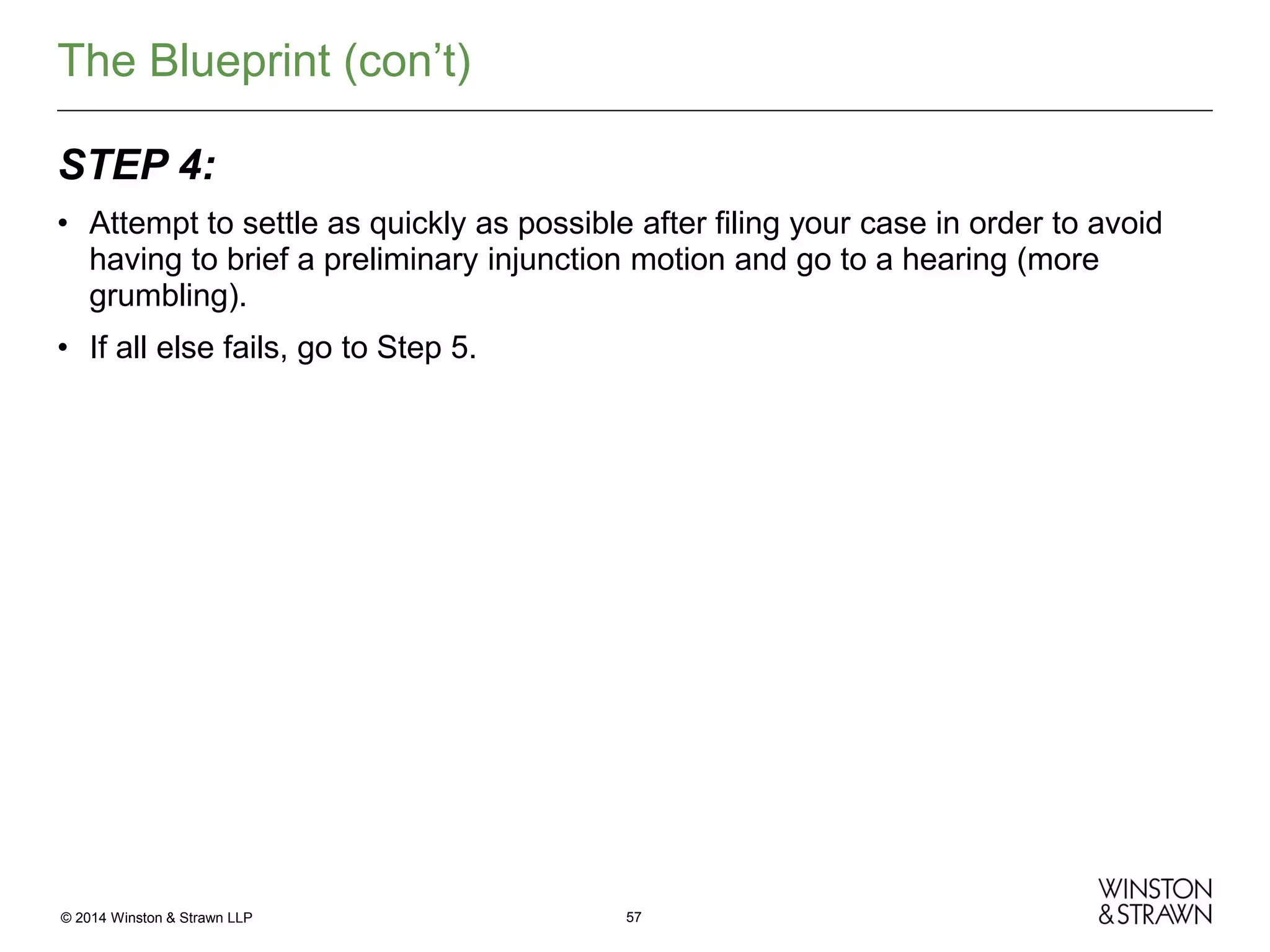
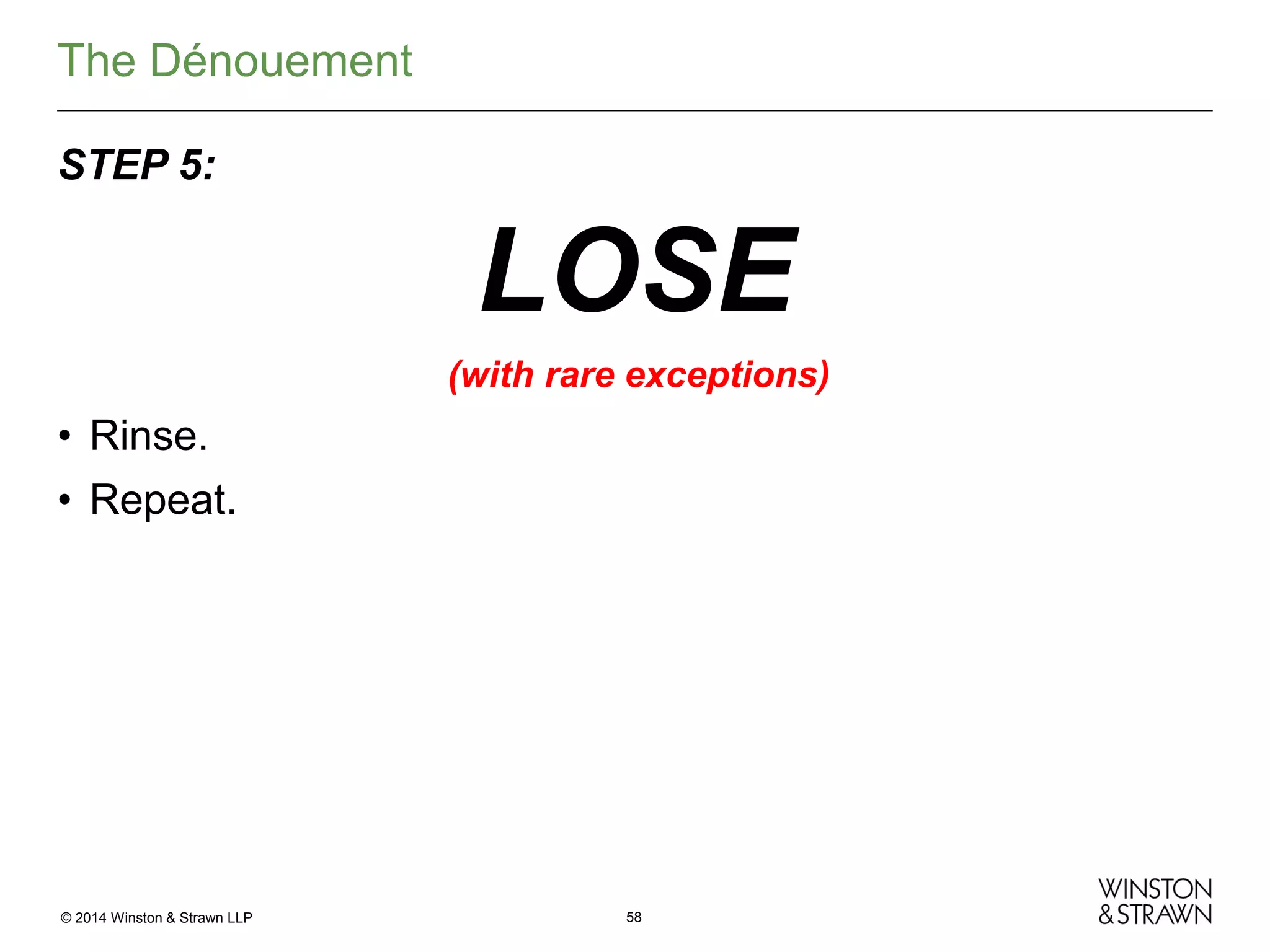
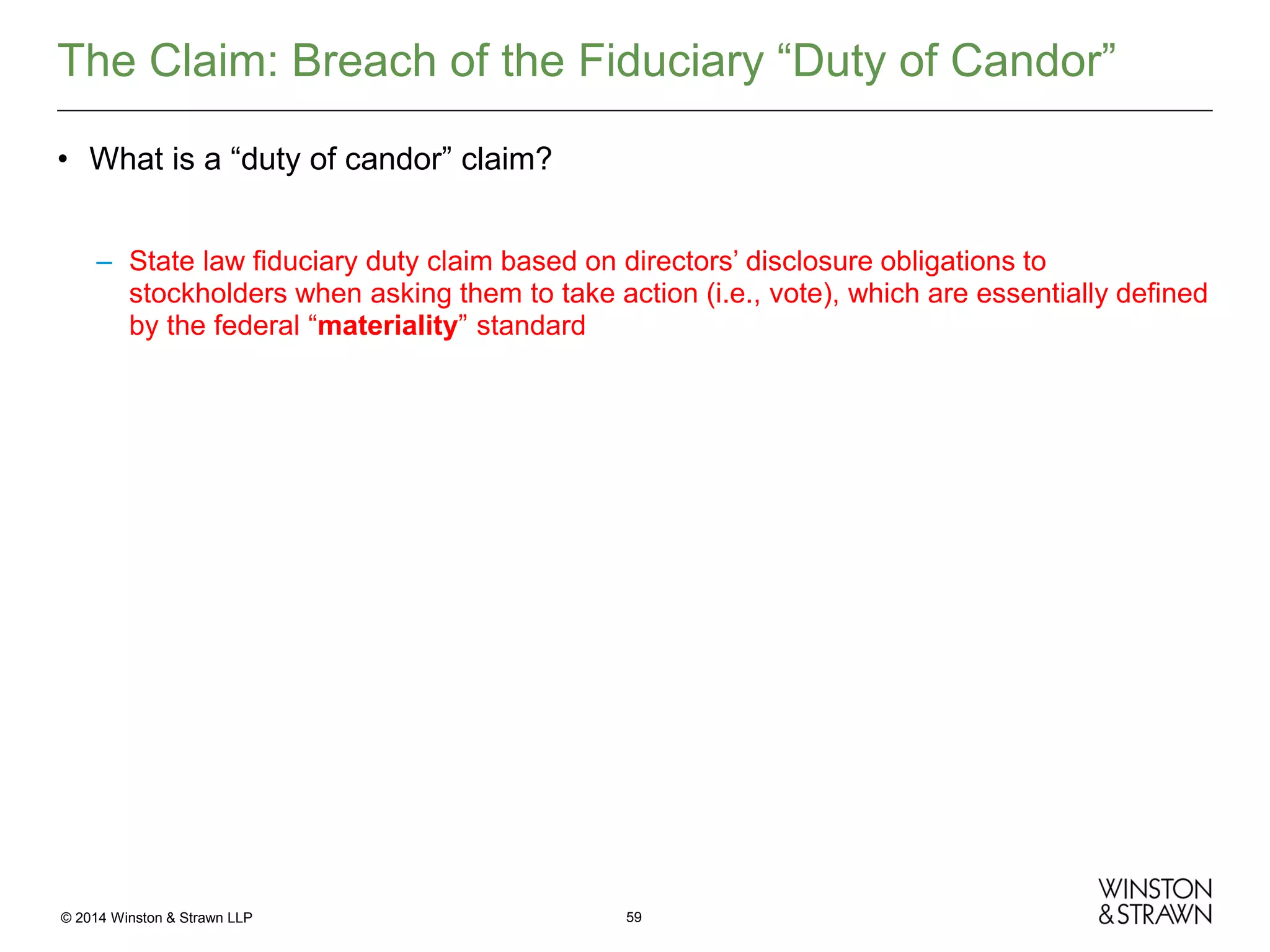
![What’s Materiality? Materiality ...
IS
IS NOT
“substantial likelihood that a
reasonable investor would
consider [the fact] important in
deciding how to vote.” TSC Indus.,
“not every document reviewed by the board
is material. Otherwise every book that's
given to the board and every presentation
made to the board would have to be part of
the proxy…That certainly is not the law.”
Inc. v. Northway, Inc., 426 U.S. 438, 445.
Wayne Cnty. Emps.' Ret. Syst. V. Corti, 954 A.2d 319, 332
(Del. Ch. 2008).
an omission where there is “a
substantial likelihood that the
disclosure of the omitted fact
would have been viewed by the
reasonable investor as having
significantly altered the 'total
mix' of information made
available.” Id. at 449.
© 2014 Winston & Strawn LLP
…simply adding more disclosure. Courts
should not impose new disclosure
requirements absent "persuasive authority or
argument why [a court] should expand
Delaware disclosure requirements beyond
those presently mandated by Federal law."
Skeen v. Jo-Ann Stores, Inc., 1999 Del. Ch. LEXIS 193, at
*22 (Del. Ch. Sept. 27, 1999), aff'd, 750 A.2d 1170 (Del.
Ch. 2000)
60](https://image.slidesharecdn.com/1-15-2014howdodirectorspreparefortheworstfinal-140123164941-phpapp01/75/Forum-for-Financial-Institution-Directors-How-Do-Directors-Prepare-for-the-Worst-60-2048.jpg)

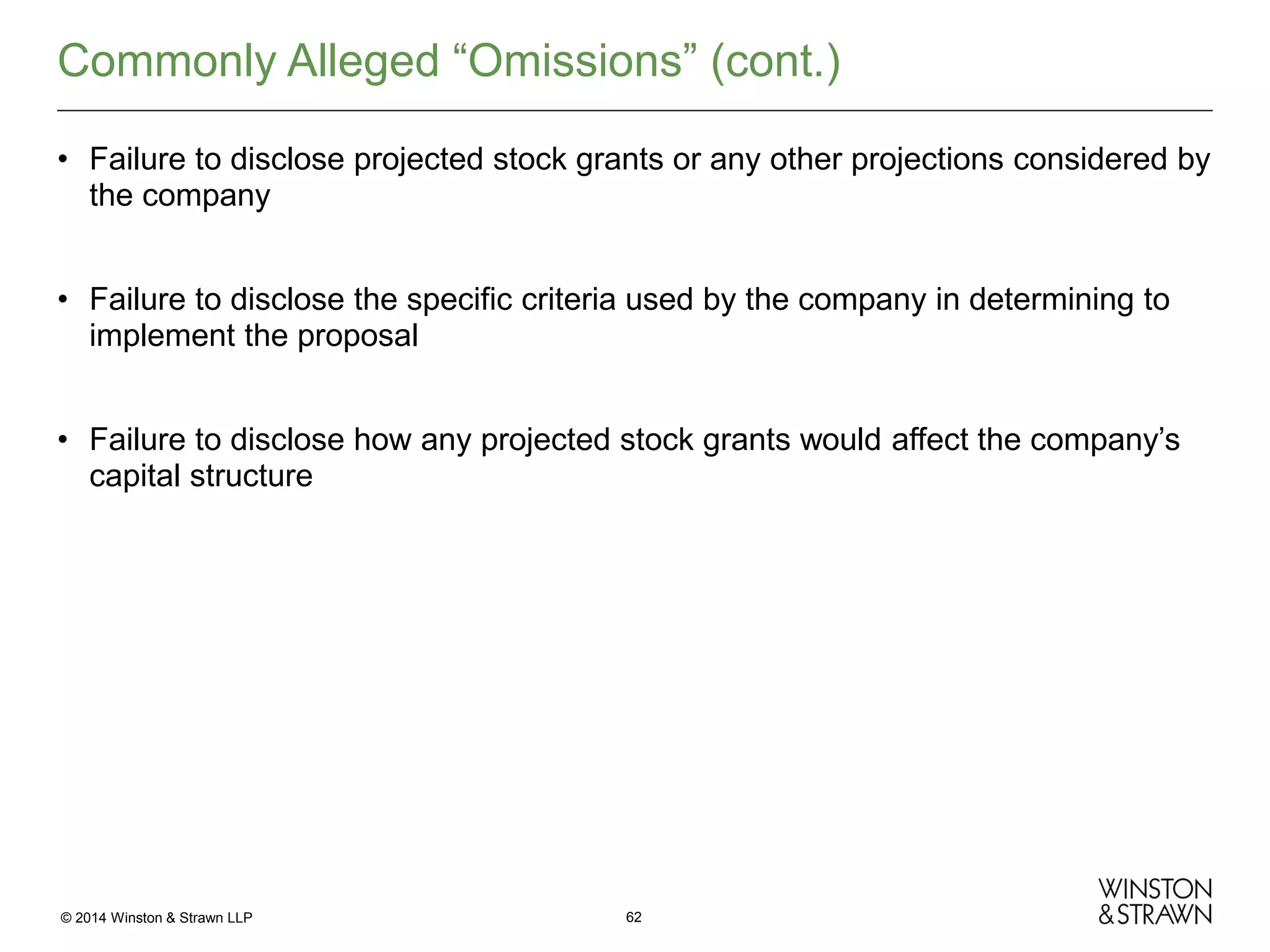
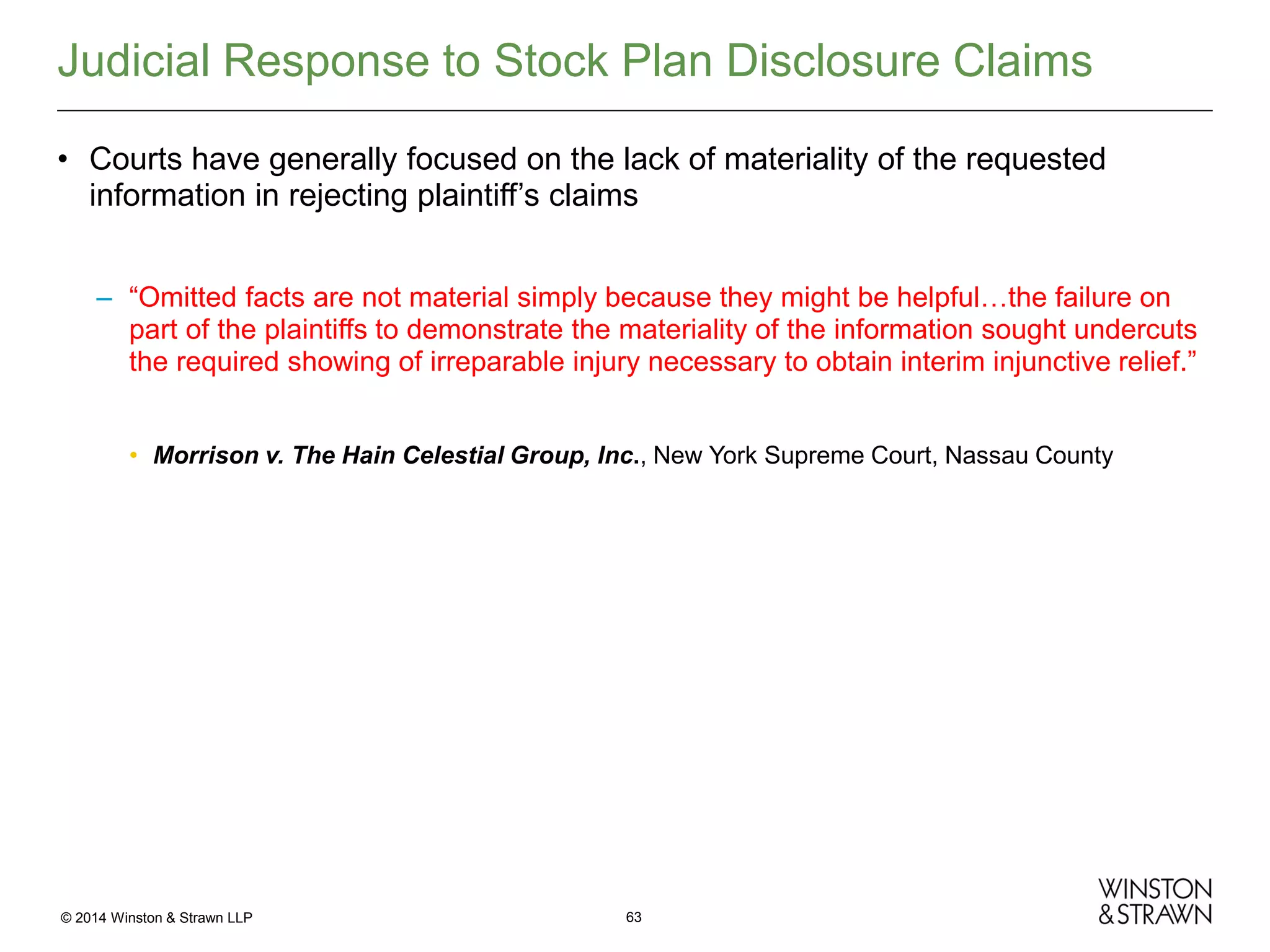
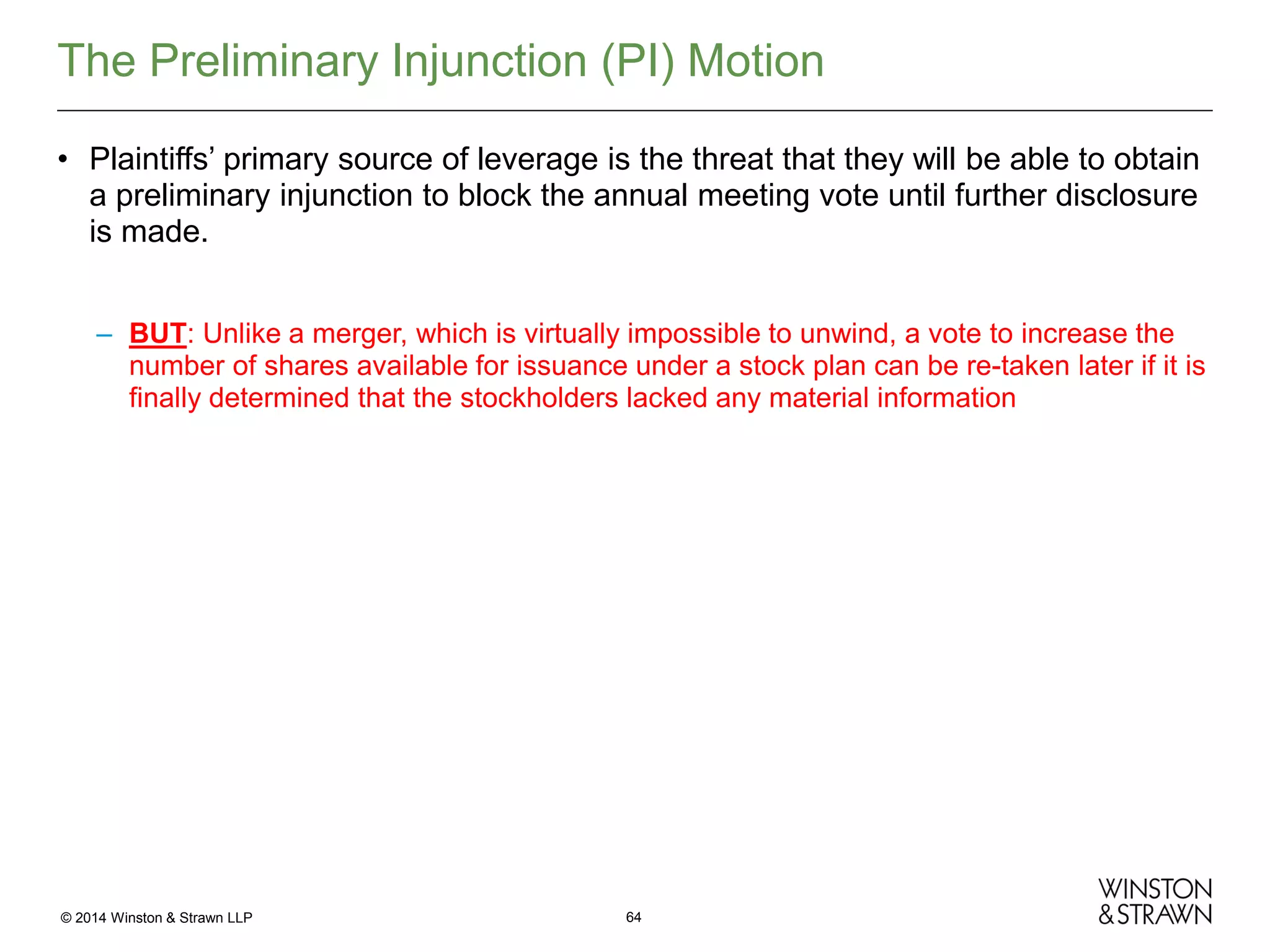
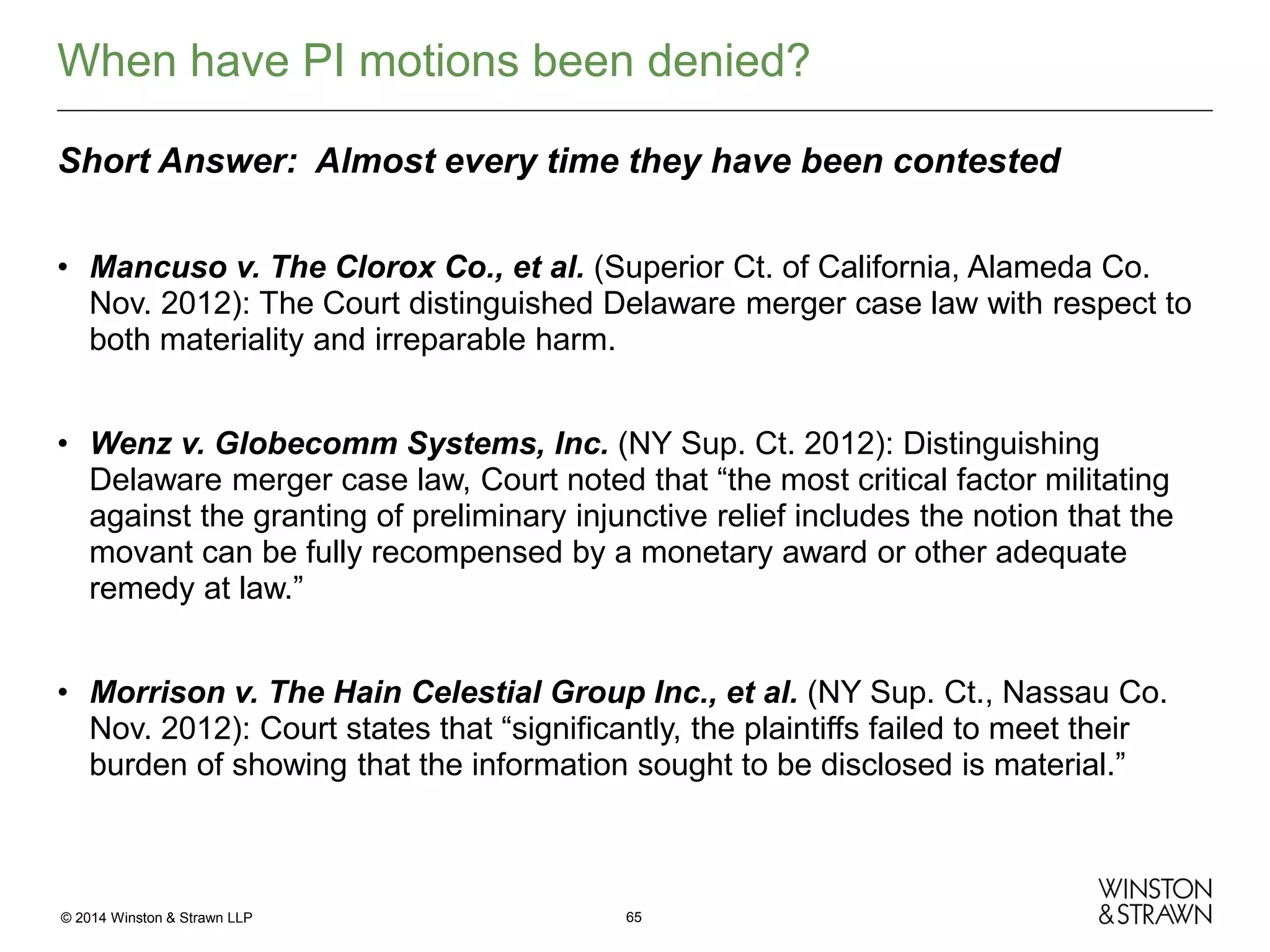
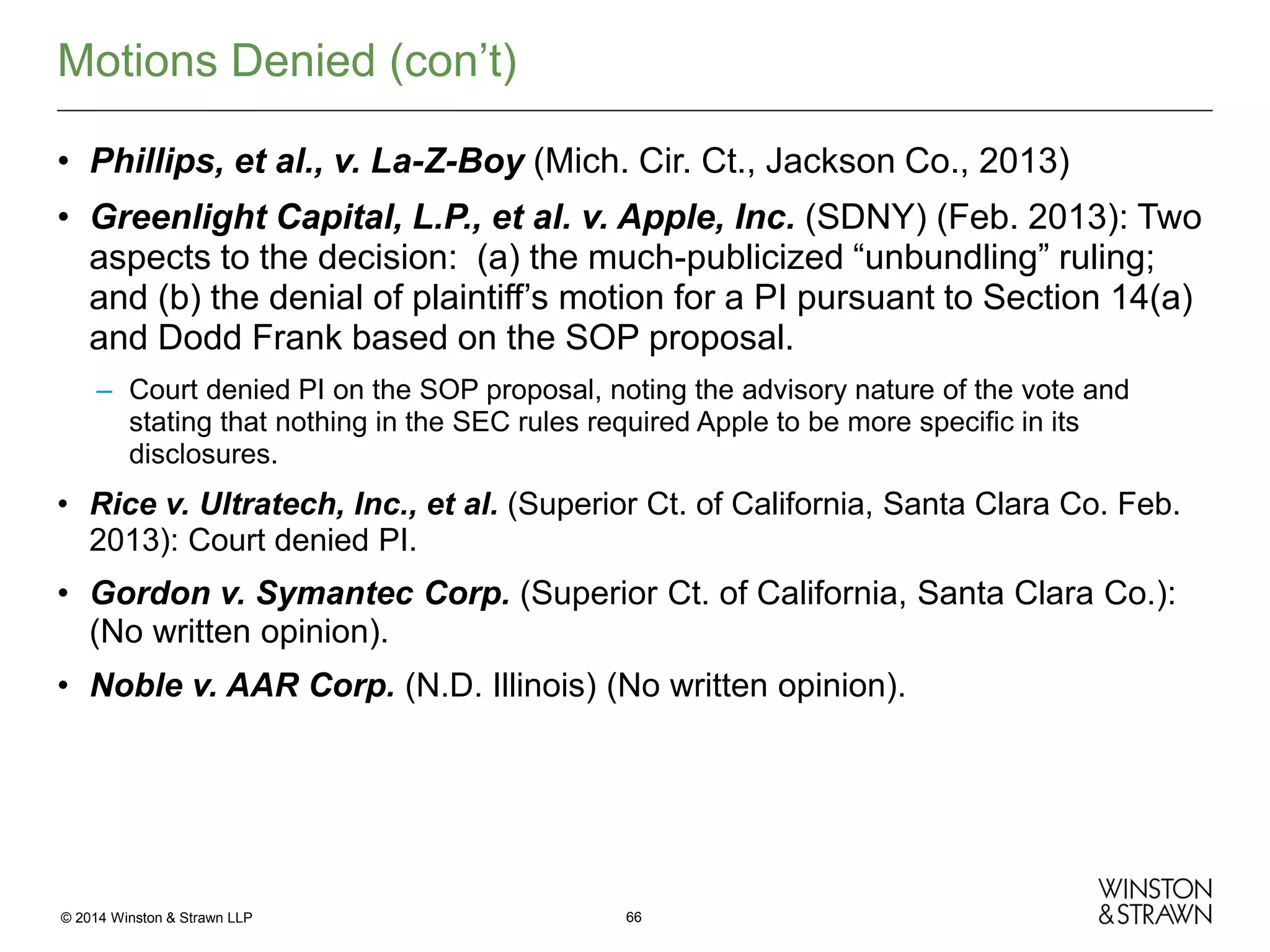
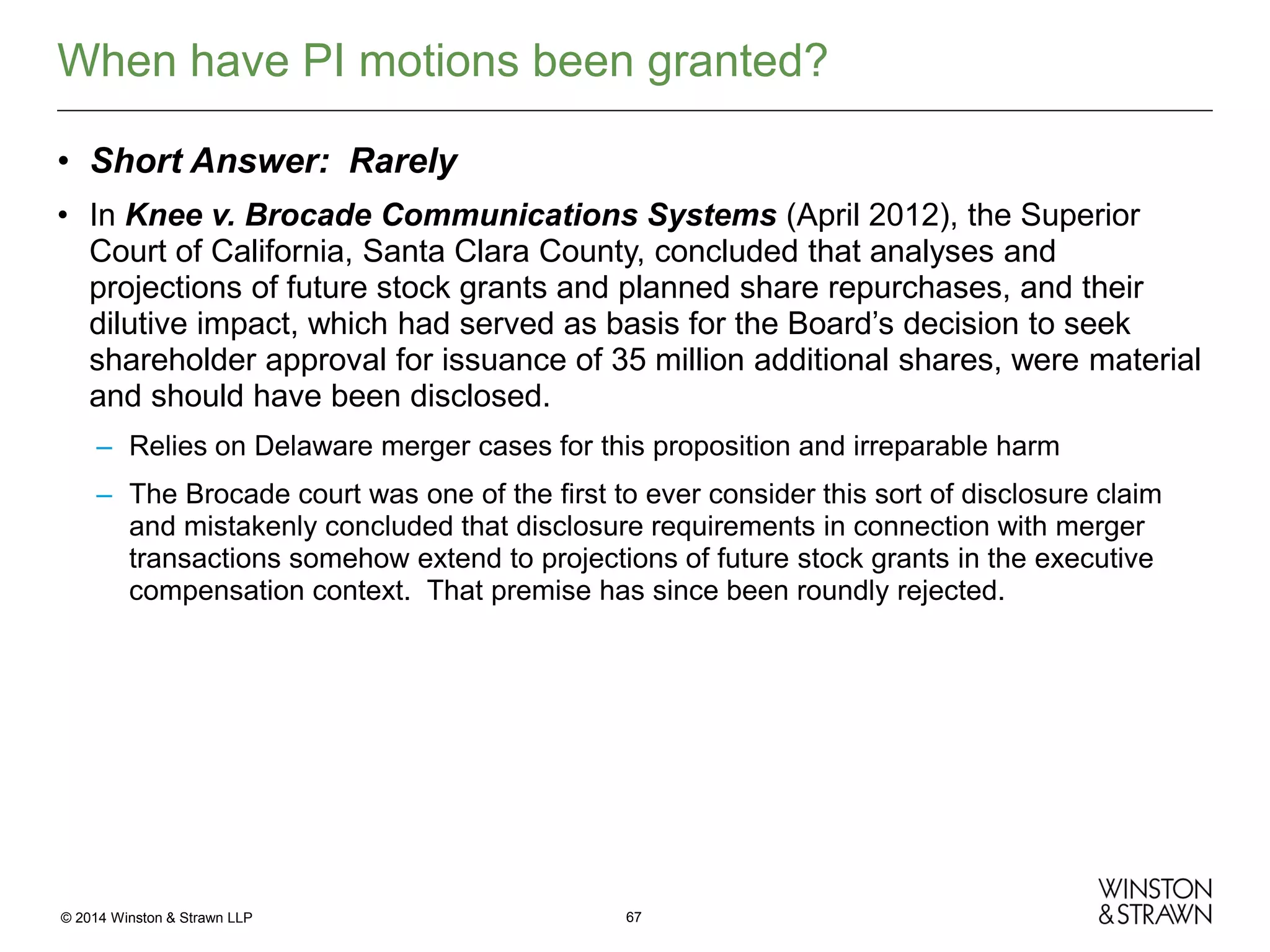
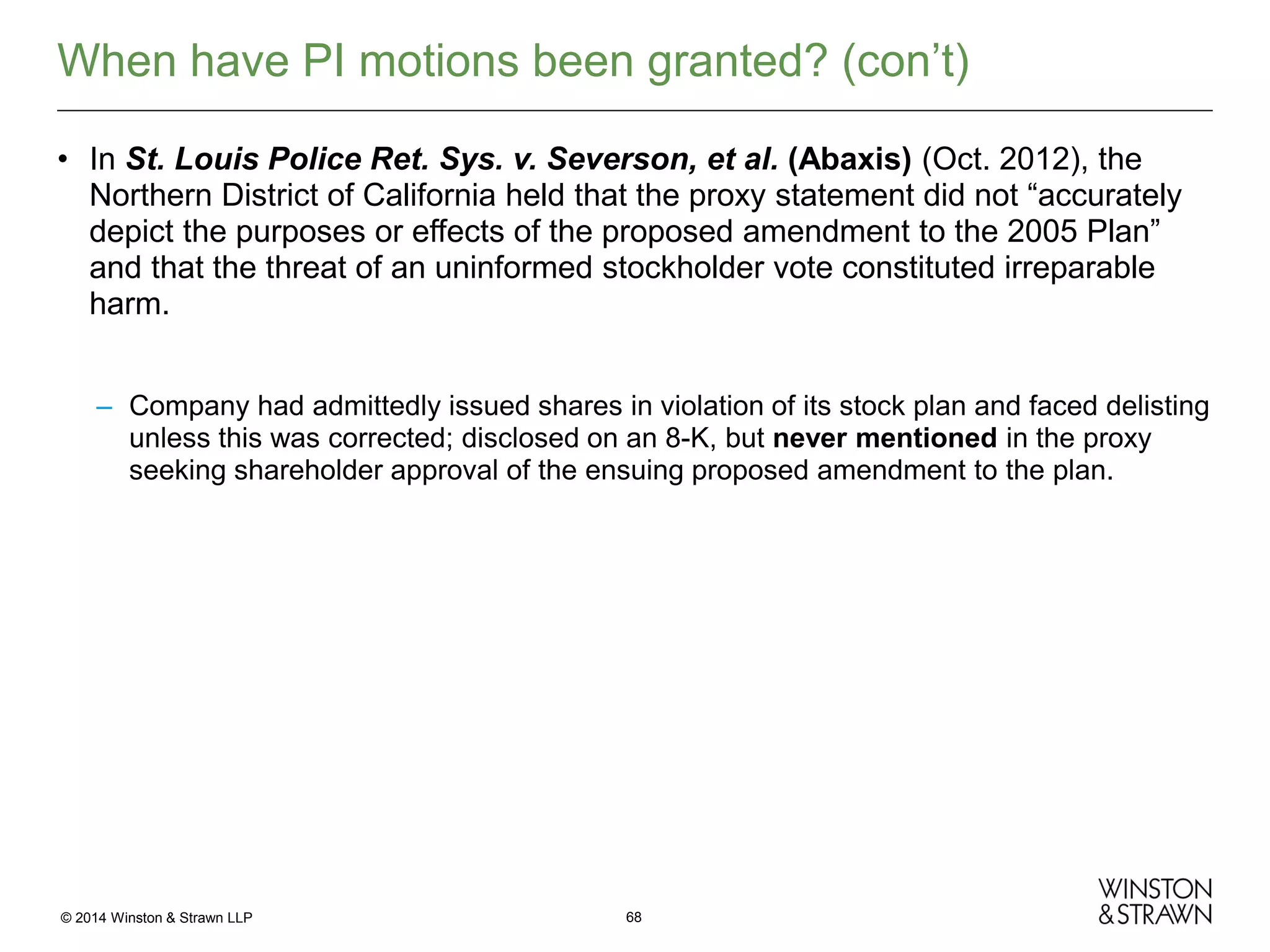
![Case Dismissed!
– Mancuso v. Clorox Co., No. RG12-65165, at 7 (Cal. Super. Ct. Alameda
Cnty. Aug. 21, 2013).
• “The Proxy contains a wealth of information…. Additional information is available in the
Company’s other SEC filings and those of its peers. What Plaintiff has done is simply discovered
what additional information was presented to the [compensation committee] and not included or
summarized completely in the Proxy and then described why such information would be ‘helpful.’
Were this court to find on this record that material information was withheld, it would be a license
to file suit where anything was withheld, for any information can always be labeled as potentially
‘helpful.’
– Morrison v. Hain Celestial Group, Inc., Index No. 602074/12, at 5-6 (N.Y.
Sup. Ct. Nassau Cnty. July 2, 2013).
• Granting motion to dismiss on grounds that there was no duty to disclose dilution and other
analyses regarding stock incentive plan
© 2014 Winston & Strawn LLP
69](https://image.slidesharecdn.com/1-15-2014howdodirectorspreparefortheworstfinal-140123164941-phpapp01/75/Forum-for-Financial-Institution-Directors-How-Do-Directors-Prepare-for-the-Worst-69-2048.jpg)
